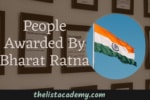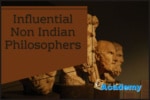List Of Modern Indian Scientists
We cannot imagine a single day without science though we don’t notice it often. From our high-tech mobile phones to a humble toy, everything is a gift of Science & Technology. Some of the best minds invented them and made our life easier. Here is a list of a few modern Indian scientists who achieved global recognition for their inventions and research. The expansion of scientific studies in modern India can be credited to these sharp minds. They shaped the way we live now. The modern life of modern India can be attributed to these scientists. The amazing talents of these scientists and inventors have been established in diverse areas, including Chemistry, Physics, Mathematics, Medicine, Rocket Science, Quantum Physics, Botany, Zoology…to name just a few. Some of these scientists have also contributed in a great way to spread out their research and knowledge in different regions of the world. We cannot imagine a single day without science though we don’t notice it often. From our high-tech mobile phones to a humble toy, everything is a gift of Science & Technology. Some of the best minds invented them and made our life easier. Here is a list of few modern Indian scientists who achieved global recognition for their invention and research. The expansion of scientific studies in modern India can be credited to these sharp minds. They shaped the way we live now. The modern life of modern India can be attributed to these scientists. The amazing talents of these scientists and inventors have been established in diverse areas, including Chemistry, Physics, Mathematics, Medicine, Rocket Science, Quantum Physics, Botany, Zoology…to name just a few. Some of these scientists have also contributed in a great way to spread out their research and knowledge in different regions of the world.
Homi J. Bhabha
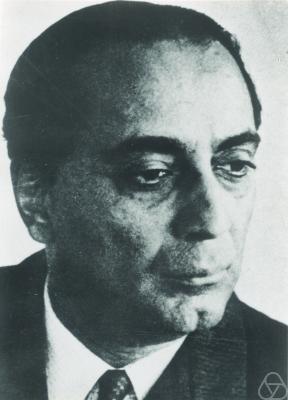
Homi Jehangir Bhabha (30 October 1909 – 24 January 1966) was an Indian nuclear physicist, founding director, and professor of physics at the Tata Institute of Fundamental Research (TIFR). Colloquially known as “father of the Indian nuclear programme”, Bhabha was also the founding director of the Atomic Energy Establishment, Trombay (AEET) which is now named the Bhabha Atomic Research Centre in his honour. TIFR and AEET were the cornerstone of Indian development of nuclear weapons which Bhabha also supervised as director.Bhabha was awarded the Adams Prize (1942) and Padma Bhushan (1954). He was also nominated for the Nobel Prize for Physics in 1951 and 1953–1956.
Read More About Homi J. Bhabha / Source
C. V. Raman

Chandrasekhara Venkata Raman (7 November 1888 – 21 November 1970) was an Indian physicist who made groundbreaking works in the field of light scattering. With his student K. S. Krishnan, he discovered that when light traverses a transparent material, some of the deflected light change wavelength and amplitude. This phenomenon was a new type of scattering of light and was subsequently known as the Raman effect (Raman scattering). Raman won the 1930 Nobel Prize in Physics and was the first Asian person to receive a Nobel Prize in any branch of science.Born to Hindu Tamil Brahmin parents, Raman was a precocious child, completing his secondary and higher secondary education from St Aloysius’ Anglo-Indian High School at the ages of 11 and 13, respectively. He topped bachelor’s degree examination at the University of Madras with honours in physics from Presidency College at age 16. His first research paper, on diffraction of light, was published in 1906 while still a graduate student. The next year he obtained an M.A. degree. He was 19 years of age when he joined the Indian Finance Service in Kolkata as Assistant Accountant General. There he became acquainted with the Indian Association for the Cultivation of Science (IACS), the first research institute in India, which allowed him to do independent research and where he made his major contributions in acoustics and optics.
In 1917, he was appointed as the first Palit Professor of Physics by Ashutosh Mukherjee at the Rajabazar Science College under the University of Calcutta. On his first trip to Europe, seeing the Mediterranean Sea motivated him to correctly describe the reason for the blue colour of the sea as a phenomenon of diffraction. He founded the Indian Journal of Physics in 1926. He and Krishnan discovered on 28 February 1928 a novel phenomenon of light scattering, which they called “modified scattering,” but more famously known as the Raman effect. The day is celebrated by the Government of India as the National Science Day every year. Raman moved to the Indian Institute of Science in Bangalore in 1933 to become its first Indian Director. There he founded the Indian Academy of Sciences the same year. He established the Raman Research Institute in 1948 where he worked to his last days.
In 1954, the Government of India honoured him with the first Bharat Ratna (along with politician C. Rajagopalachari and philosopher Sarvepalli Radhakrishnan), its highest civilian award. He later smashed the medallion in protest against Prime Minister Jawaharlal Nehru’s policies on scientific research.
Read More About C. V. Raman / Source
A. P. J. Abdul Kalam
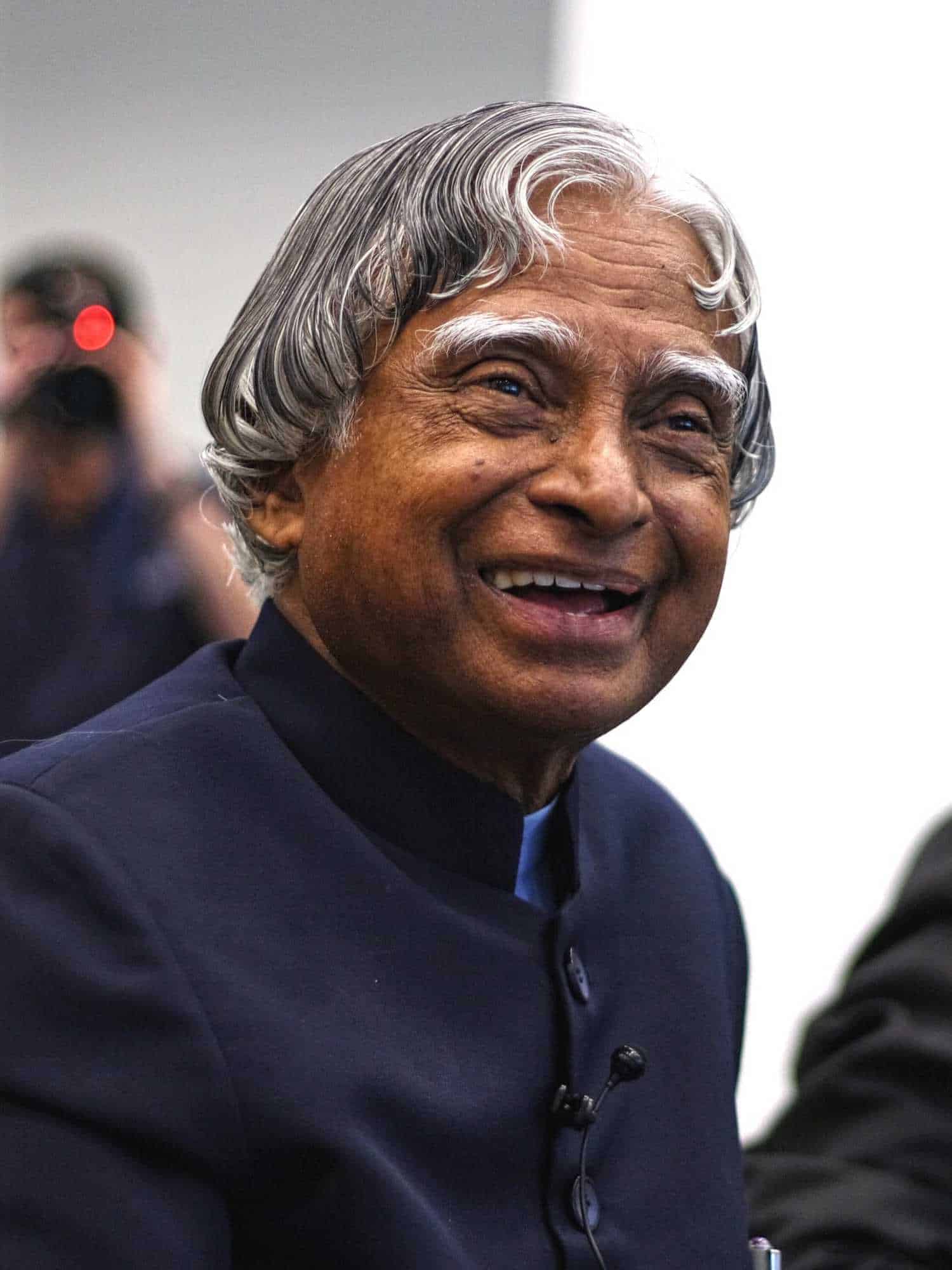
Avul Pakir Jainulabdeen Abdul Kalam (15 October 1931 – 27 July 2015) was an Indian aerospace scientist and politician who served as the 11th President of India from 2002 to 2007. He was born and raised in Rameswaram, Tamil Nadu and studied physics and aerospace engineering. He spent the next four decades as a scientist and science administrator, mainly at the Defence Research and Development Organisation (DRDO) and Indian Space Research Organisation (ISRO) and was intimately involved in India’s civilian space programme and military missile development efforts. He thus came to be known as the Missile Man of India for his work on the development of ballistic missile and launch vehicle technology. He also played a pivotal organisational, technical, and political role in India’s Pokhran-II nuclear tests in 1998, the first since the original nuclear test by India in 1974.Kalam was elected as the 11th President of India in 2002 with the support of both the ruling Bharatiya Janata Party and the then-opposition Indian National Congress. Widely referred to as the “People’s President”, he returned to his civilian life of education, writing and public service after a single term. He was a recipient of several prestigious awards, including the Bharat Ratna, India’s highest civilian honour.
While delivering a lecture at the Indian Institute of Management Shillong, Kalam collapsed and died from an apparent cardiac arrest on 27 July 2015, aged 83. Thousands, including national-level dignitaries, attended the funeral ceremony held in his hometown of Rameswaram, where he was buried with full state honours.
Read More About A. P. J. Abdul Kalam / Source
Satyendra Nath Bose

Satyendra Nath Bose ( 1 January 1894 – 4 February 1974) was an Indian mathematician and physicist specialising in theoretical physics. He is best known for his work on quantum mechanics in the early 1920s, collaboration with Albert Einstein in developing the foundation for Bose–Einstein statistics and the theory of the Bose–Einstein condensate. A Fellow of the Royal Society, he was awarded India’s second highest civilian award, the Padma Vibhushan in 1954 by the Government of India.The class of particles that obey Bose–Einstein statistics, bosons, was named after Bose by Paul Dirac.A polymath, he had a wide range of interests in varied fields including physics, mathematics, chemistry, biology, mineralogy, philosophy, arts, literature, and music. He served on many research and development committees in sovereign India.
Read More About Satyendra Nath Bose / Source
Srinivasa Ramanujan
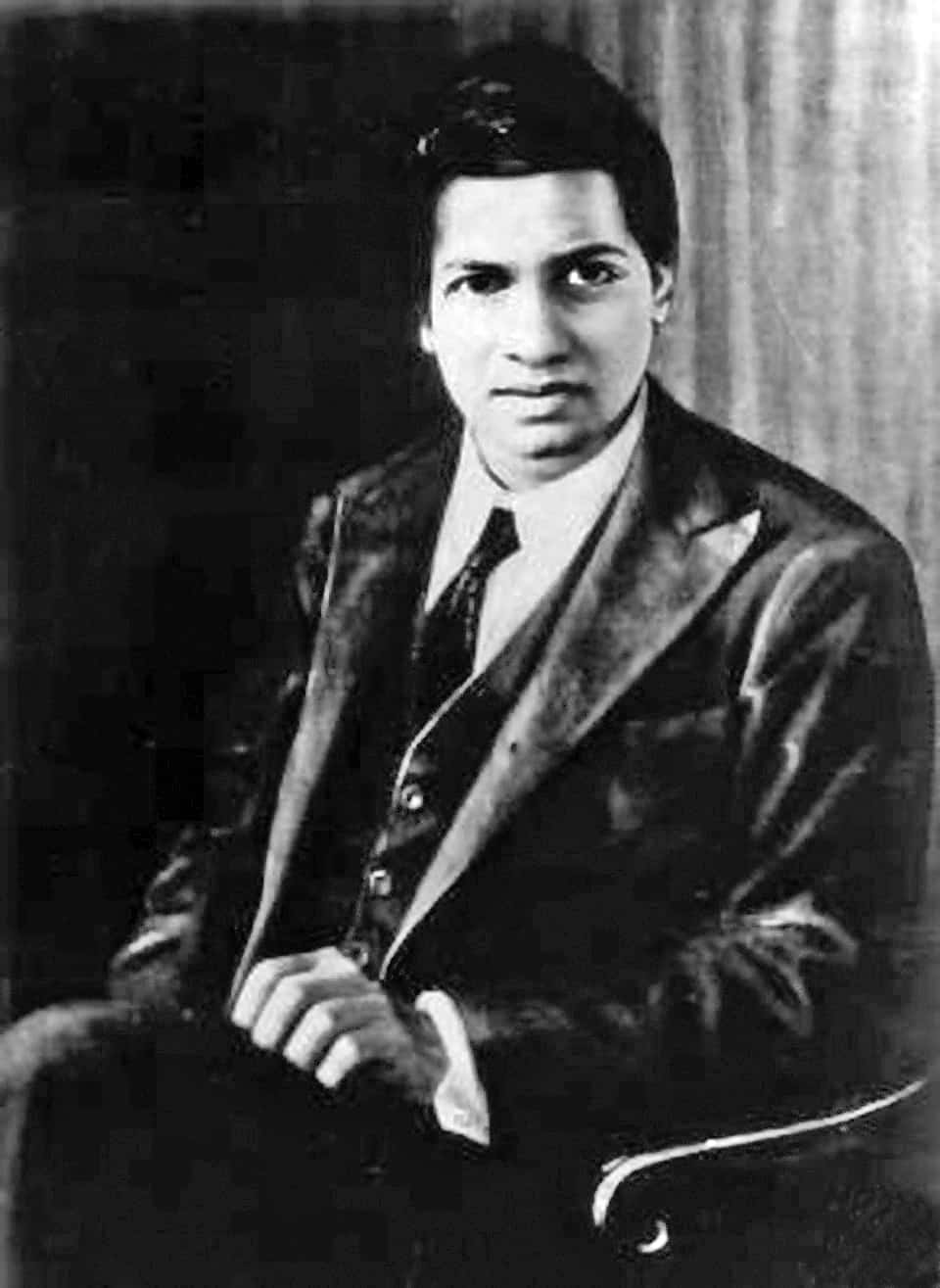
Srinivasa Ramanujan ( 22 December 1887 – 26 April 1920) was an Indian mathematician who lived during the British Rule in India. Though he had almost no formal training in pure mathematics, he made substantial contributions to mathematical analysis, number theory, infinite series, and continued fractions, including solutions to mathematical problems then considered unsolvable. Ramanujan initially developed his own mathematical research in isolation: according to Hans Eysenck: “He tried to interest the leading professional mathematicians in his work, but failed for the most part. What he had to show them was too novel, too unfamiliar, and additionally presented in unusual ways; they could not be bothered”. Seeking mathematicians who could better understand his work, in 1913 he began a postal partnership with the English mathematician G. H. Hardy at the University of Cambridge, England. Recognizing Ramanujan’s work as extraordinary, Hardy arranged for him to travel to Cambridge. In his notes, Hardy commented that Ramanujan had produced groundbreaking new theorems, including some that “defeated me completely; I had never seen anything in the least like them before”, and some recently proven but highly advanced results.
During his short life, Ramanujan independently compiled nearly 3,900 results (mostly identities and equations).
Read More About Srinivasa Ramanujan / Source
Jagadish Chandra Bose

Sir Jagadish Chandra Bose (30 November 1858 – 23 November 1937) was a biologist, physicist, botanist and an early writer of science fiction. He pioneered the investigation of radio and microwave optics, made significant contributions to plant science, and laid the foundations of experimental science in the Indian subcontinent. IEEE named him one of the fathers of radio science. Bose is considered the father of Bengali science fiction, and also invented the crescograph, a device for measuring the growth of plants. A crater on the moon has been named in his honour. He founded Bose Institute, a premier research institute of India and also one of its oldest. Established in 1917, the Institute was the first interdisciplinary research centre in Asia. He served as the Director of Bose Institute from its inception until his death.
Born in Munshiganj, Bengal Presidency, during British governance of India (now in Bangladesh), Bose graduated from St. Xavier’s College, Calcutta (now Kolkata , West Bengal , India). He went to the University of London, England to study medicine, but could not pursue studies in medicine because of health problems. Instead, he conducted his research with the Nobel Laureate Lord Rayleigh at Cambridge and returned to India.
Read More About Jagadish Chandra Bose / Source
Vikram Sarabhai
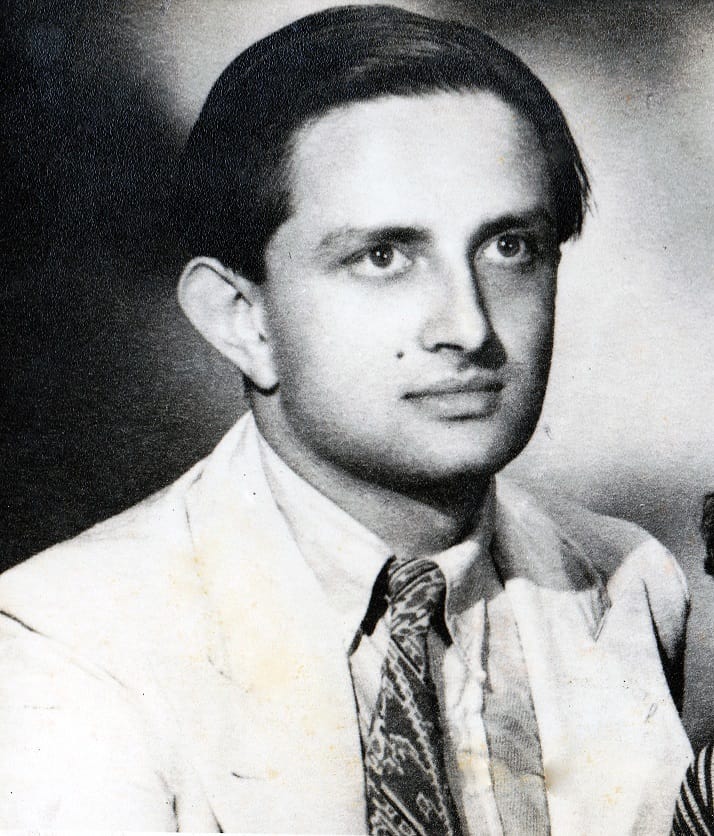
Vikram Ambalal Sarabhai (12 August 1919 – 30 December 1971) was an Indian physicist and astronomer who initiated space research and helped develop nuclear power in India. He was honoured with Padma Bhushan in 1966 and the Padma Vibhushan (posthumously) in 1972. He is internationally regarded as the Father of the Indian Space Program.
Read More About Vikram Sarabhai / Source
Bhargav Sri Prakash
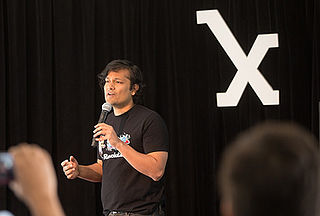
Bhargav Sri Prakash is an Indian entrepreneur and engineer based in silicon valley.Sri Prakash has worked in gamification and is the inventor of Digital Vaccine technology to reduce the risk of lifestyle diseases. He is the founder and CEO of FriendsLearn, and is the Chief of Product for Fooya, which is a mobile app designed to improve health.He is a former professional tennis player and junior national champion from India.
Read More About Bhargav Sri Prakash / Source
Birbal Sahni
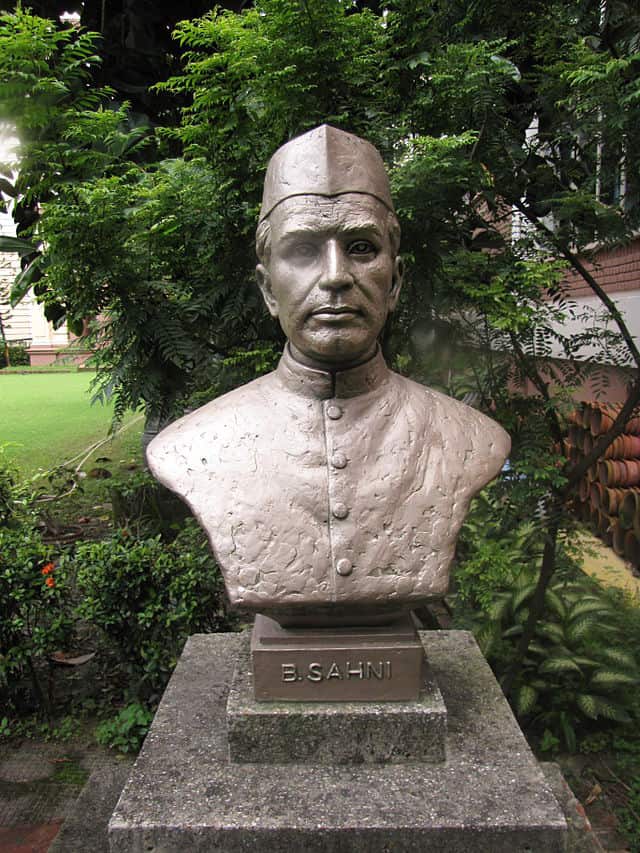
Birbal Sahni FRS (14 November 1891 – 10 April 1949) was an Indian paleobotanist who studied the fossils of the Indian subcontinent. He also took an interest in geology and archaeology. He founded what is now the Birbal Sahni Institute of Palaeobotany at Lucknow in 1946. His major contributions were in the study of the fossil plants of India and in plant evolution. He was also involved in the establishment of Indian science education and served as the President of the National Academy of Sciences, India and as an Honorary President of the International Botanical Congress, Stockholm.
Read More About Birbal Sahni / Source
Daya Shankar Kulshreshtha
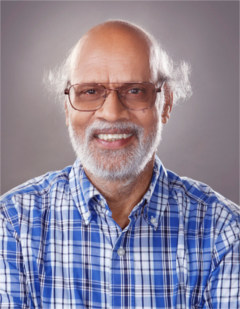
Daya Shankar Kulshreshtha (born December, 1951) is an Indian theoretical physicist, specializing in formal aspects of quantum field theory, string theory and general relativity.Dirac’s instant-form and light-front quantization of field theories and D-brane actions, boson stars, black holes and wormholes in general relativity.
Read More About Daya Shankar Kulshreshtha / Source
Subrahmanyan Chandrasekhar
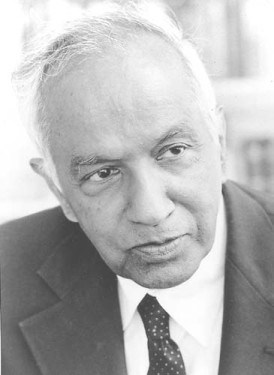
Subrahmanyan Chandrasekhar (19 October 1910 – 21 August 1995) was an Indian-American astrophysicist who spent his professional life in the United States. He was awarded the 1983 Nobel Prize for Physics with William A. Fowler for “…theoretical studies of the physical processes of importance to the structure and evolution of the stars”. His mathematical treatment of stellar evolution yielded many of the current theoretical models of the later evolutionary stages of massive stars and black holes. The Chandrasekhar limit is named after him.
Chandrasekhar worked on a wide variety of physical problems in his lifetime, contributing to the contemporary understanding of stellar structure, white dwarfs, stellar dynamics, stochastic process, radiative transfer, the quantum theory of the hydrogen anion, hydrodynamic and hydromagnetic stability, turbulence, equilibrium and the stability of ellipsoidal figures of equilibrium, general relativity, mathematical theory of black holes and theory of colliding gravitational waves. At the University of Cambridge, he developed a theoretical model explaining the structure of white dwarf stars that took into account the relativistic variation of mass with the velocities of electrons that comprise their degenerate matter. He showed that the mass of a white dwarf could not exceed 1.44 times that of the Sun – the Chandrasekhar limit. Chandrasekhar revised the models of stellar dynamics first outlined by Jan Oort and others by considering the effects of fluctuating gravitational fields within the Milky Way on stars rotating about the galactic centre. His solution to this complex dynamical problem involved a set of twenty partial differential equations, describing a new quantity he termed ‘dynamical friction’, which has the dual effects of decelerating the star and helping to stabilize clusters of stars. Chandrasekhar extended this analysis to the interstellar medium, showing that clouds of galactic gas and dust are distributed very unevenly.
Chandrasekhar studied at Presidency College, Madras (now Chennai) and the University of Cambridge. A long-time professor at the University of Chicago, he did some of his studies at the Yerkes Observatory, and served as editor of The Astrophysical Journal from 1952 to 1971. He was on the faculty at Chicago from 1937 until his death in 1995 at the age of 84, and was the Morton D. Hull Distinguished Service Professor of Theoretical Astrophysics.
Read More About Subrahmanyan Chandrasekhar / Source
Shanti Swaroop Bhatnagar
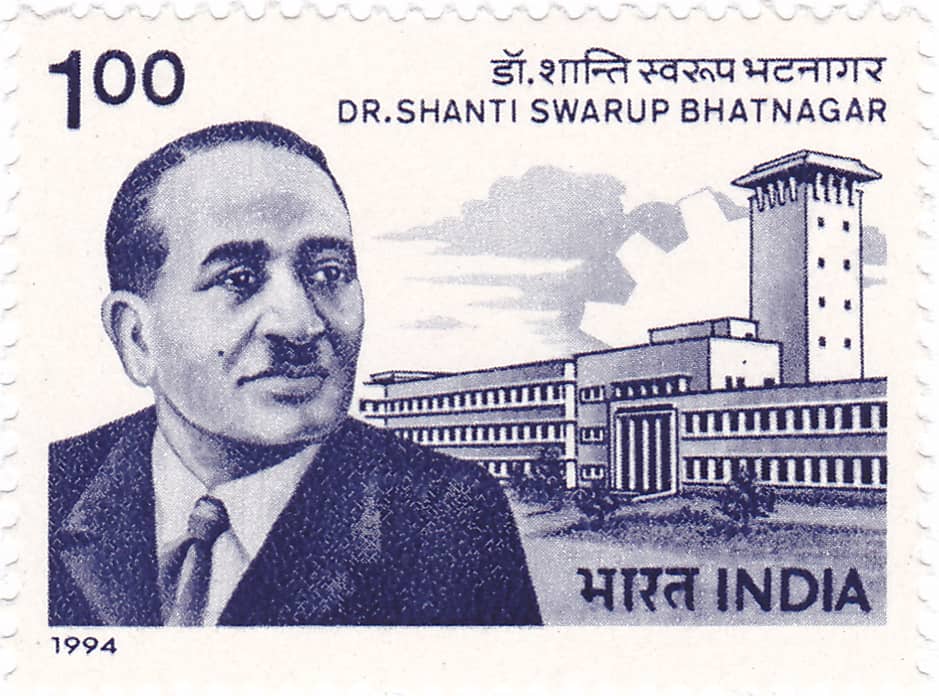
Sir Shanti Swaroop Bhatnagar OBE, FNI, FASc, FRS, FRIC, FInstP (21 February 1894 – 1 January 1955) was an Indian colloid chemist, academic and scientific administrator. The first director-general of the Council of Scientific and Industrial Research (CSIR), he is revered as the “father of research laboratories” in India. He was also the first Chairman of the University Grants Commission(India) (UGC).In 1958, to honour his name and legacy, the Indian Council of Scientific and Industrial Research (CSIR) instituted the Shanti Swarup Bhatnagar Prize for Science and Technology for scientists who have made significant contributions in various branches of science.
Read More About Shanti Swaroop Bhatnagar / Source
Aditi Pant
Aditi Pant is an Indian oceanographer. She was the first Indian woman to visit Antarctica, alongside geologist Sudipta Sengupta in 1983 as part of the Indian Antarctic Program. She has held prominent positions at institutions including the National Institute of Oceanography, National Chemical Laboratory, University of Pune, and Maharashtra Academy of Sciences.
Read More About Aditi Pant / Source
Upendranath Brahmachari
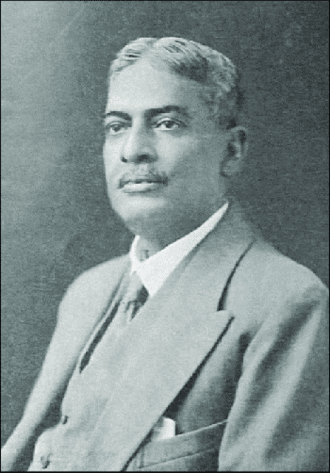
Rai Bahadur Sir Upendranath Brahmachari (19 December 1873 – 6 February 1946) was an Indian scientist and a leading medical practitioner of his time. He synthesised Urea-Stibamine (carbostibamide) in 1922 and determined that it was an effective treatment for Kala-azar (Visceral leishmaniasis).
Read More About Upendranath Brahmachari / Source
Nambi Narayanan
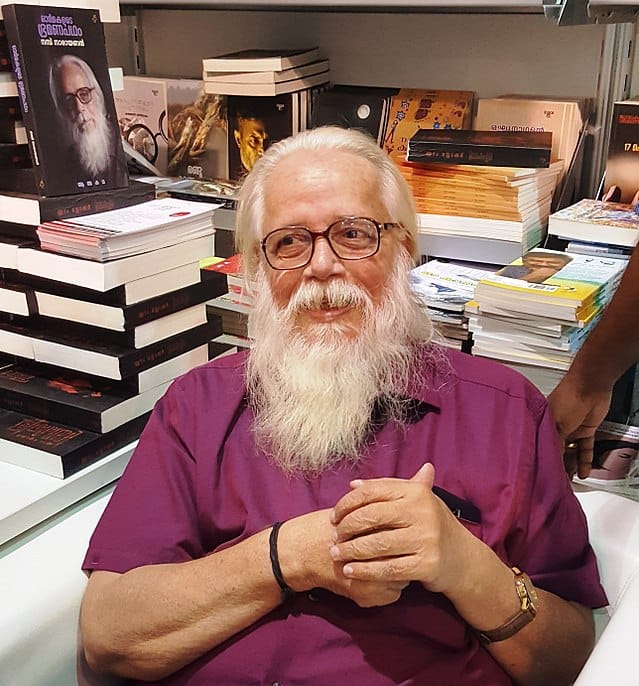
S. Nambi Narayanan (12 December 1941) is an Indian scientist and aerospace engineer and Padma Bhushan award winner. As a senior official at the Indian Space Research Organisation (ISRO), he was in-charge of the cryogenics division. In 1994, he was falsely charged with espionage and arrested. The charges against him were dismissed by the Central Bureau of Investigation (CBI) in April 1996, and the Supreme Court of India declared him not guilty in 1998.In 2018, the Supreme Court, through the bench of Dipak Misra, awarded Narayanan a compensation of ₹ 5,000,000 (roughly US$70,000), to be recovered from the government of Kerala within eight weeks. However the government of Kerala decided to give him ₹ 1.3 crore (₹ 13,000,000; roughly US$183,000). The apex court also constituted a committee headed by retired Supreme Court judge D. K. Jain to inquire into the role of officials of the Kerala police in the arrest of Narayanan.
He was awarded India’s third highest civilian award, the Padma Bhushan, in 2019.
Read More About Nambi Narayanan / Source
Subhash Mukhopadhyay
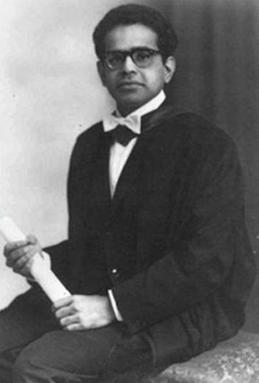
Subhash Mukhopadhyay (16 January 1931 – 19 June 1981) was an Indian scientist, physician from Hazaribagh, Bihar and Orissa Province, British India (now in Jharkhand, India), who created the world’s second and India’s first child using in-vitro fertilisation. Kanupriya Agarwal (Durga), who was born in 1978, just 67 days after the first IVF baby in United Kingdom. Afterwards, Dr. Subhash Mukhopadhyay was harassed by the then West Bengal state government and Indian Government and not allowed to share his achievements with the international scientific community. Dejected, he committed suicide on 19 June 1981.
Read More About Subhash Mukhopadhyay / Source
Yellapragada Subbarao
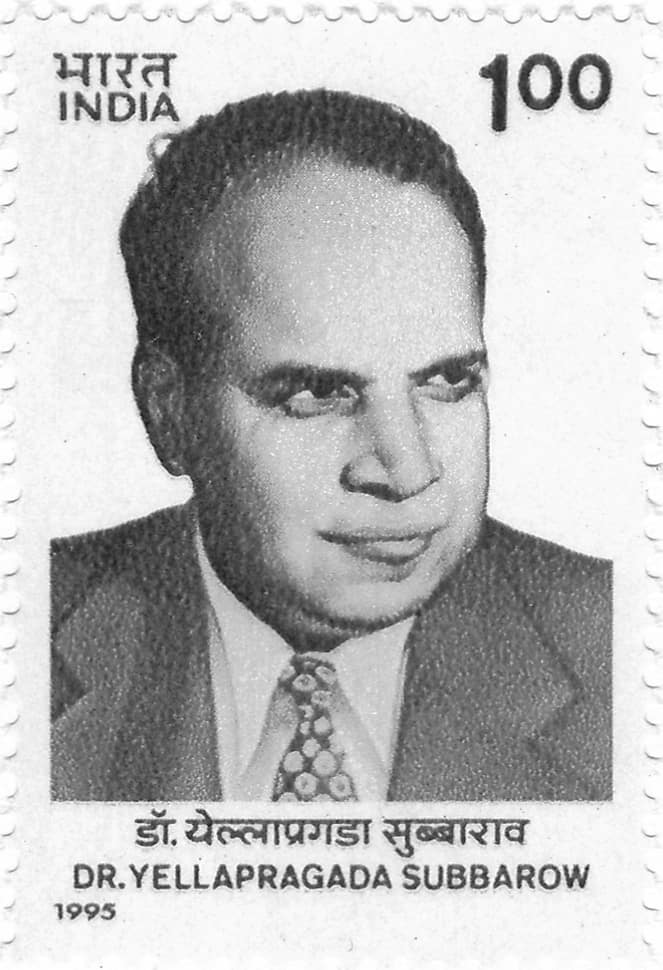
Yellapragada Subbarow (12 January 1895 – 8 August 1948) was a pioneering Indian biochemist who discovered the function of adenosine triphosphate (ATP) as an energy source in the cell, developed methotrexate for the treatment of cancer and discovered a broad spectrum of antibiotics including tetracycline and chlortetracycline.
A student of Madras Medical College, his elder brother and younger brother both died due to tropical sprue in the span of 8 days. He subsequently discovered folic acid as a cure for tropical sprue. He discovered methotrexate, a chemotherapy drug still used today and also used for rheumatoid arthritis, and diethyl carbamazine (DEC), the only effective drug for treating filariasis. Most of his career was spent in the United States. Despite his isolation of ATP, Subbarow did not gain tenure at Harvard though he would lead some of America’s most important medical research during World War II. He is also credited with the first synthesis of the chemical compounds folic acid and methotrexate. Subbarow died in the United States due to cardiac arrest.
Read More About Yellapragada Subbarao / Source
Rohini Godbole

Rohini Godbole is an Indian physicist and academic. She is a professor at the Centre for High Energy Physics, Indian Institute of Science, Bangalore. She has worked extensively on different aspects of particle phenomenology over the past three decades, in particular on exploring different aspects of the Standard Model of Particle Physics (SM) and the physics beyond it (BSM). Her work regarding hadronic structure of high-energy photons outlined a variety of ways in which to study it and has had implications for the design of next generation electron positron colliders. She is an elected fellow of all the three academies of Science of India and also the Science Academy of the Developing World (TWAS).Apart from her work in academics, Godbole is also a much sought-after communicator of science, often delivering talks to young students, scholars and scientists on everything physics. She is also an avid supporter of women pursuing careers in science and technology, and along with Ram Ramaswamy, edited the book Lilavati’s Daughters, a collection of biographical essays on women scientists from India.
Read More About Rohini Godbole / Source
Gaiti Hasan
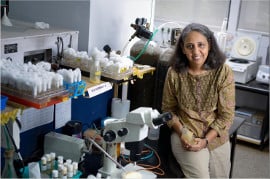
Gaiti Hasan (born 19 November 1956) is an Indian scientist who researches in the fields of molecular biology, genetics, neuroscience and cell signalling. Hasan is a Fellow of the Indian National Science Academy (INSA), the apex body of Indian scientists and technologists. 2013 onwards she has been serving as a Senior Professor at the National Centre for Biological Sciences (NCBS), Bangalore.
Read More About Gaiti Hasan / Source
K. Sivan
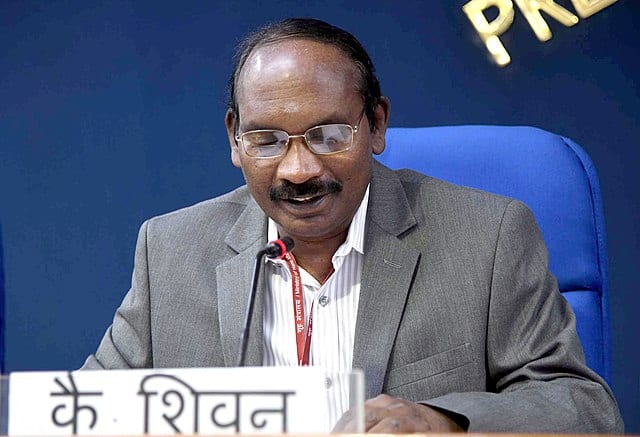
Kailasavadivoo Sivan (born 14 April 1957) is an Indian space scientist who is the current Secretary (Space) and ex-officio chairman of Indian Space Research Organisation and Space Commission. He has previously served as the Director of the Vikram Sarabhai Space Center and the Liquid Propulsion Systems Centre.
Read More About K. Sivan / Source
Amartya Sen
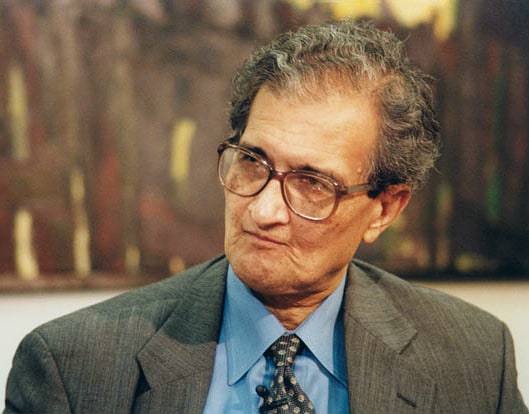
Amartya Kumar Sen (born 3 November 1933) is an Indian economist, who since 1972 has taught and worked in the United Kingdom and the United States. Sen has made contributions to welfare economics, social choice theory, economic and social justice, economic theories of famines, decision theory, development economics, public health, and measures of well-being of countries.
He is currently Thomas W. Lamont University Professor, and Professor of Economics and Philosophy at Harvard University. He was awarded the Nobel Memorial Prize in Economic Sciences in 1998 and India’s Bharat Ratna in 1999 for his work in welfare economics. The German Publishers and Booksellers Association awarded him the 2020 Peace Prize of the German Book Trade for his pioneering scholarship addressing issues of global justice and combating social inequality in education and healthcare.
Read More About Amartya Sen / Source
Har Gobind Khorana
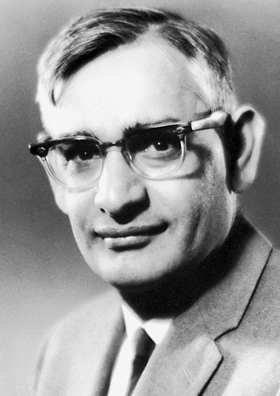
Har Gobind Khorana (9 January 1922 – 9 November 2011) was an Indian American biochemist. While on the faculty of the University of Wisconsin–Madison, he shared the 1968 Nobel Prize for Physiology or Medicine with Marshall W. Nirenberg and Robert W. Holley for research that showed the order of nucleotides in nucleic acids, which carry the genetic code of the cell and control the cell’s synthesis of proteins. Khorana and Nirenberg were also awarded the Louisa Gross Horwitz Prize from Columbia University in the same year.Born in British India, Khorana served on the faculties of three universities in North America. He became a naturalized citizen of the United States in 1966, and received the National Medal of Science in 1987.
Read More About Har Gobind Khorana / Source
Venkatraman Ramakrishnan
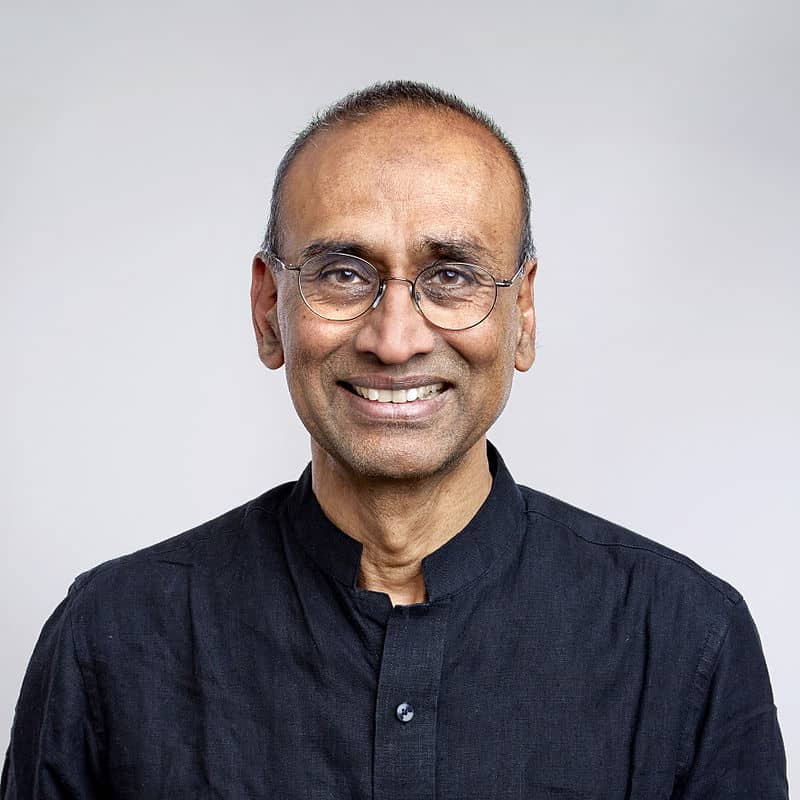
Venkatraman “Venki” Ramakrishnan (born 1952) is an Indian-born British-American structural biologist who shared the 2009 Nobel Prize in Chemistry with Thomas A. Steitz and Ada Yonath, “for studies of the structure and function of the ribosome”..
Since 1999, he has worked as a group leader at the Medical Research Council (MRC) Laboratory of Molecular Biology (LMB) on the Cambridge Biomedical Campus, UK. He served as President of the Royal Society from 2015-2020 .
Read More About Venkatraman Ramakrishnan / Source
G. N. Ramachandran

Gopalasamudram Narayanan Ramachandran, or G.N. Ramachandran, FRS (8 October 1922 – 7 April 2001) was an Indian physicist who was known for his work that led to his creation of the Ramachandran plot for understanding peptide structure. He was the first to propose a triple-helical model for the structure of collagen. He subsequently went on to make other major contributions in biology and physics.
Read More About G. N. Ramachandran / Source
Waman Dattatreya Patwardhan
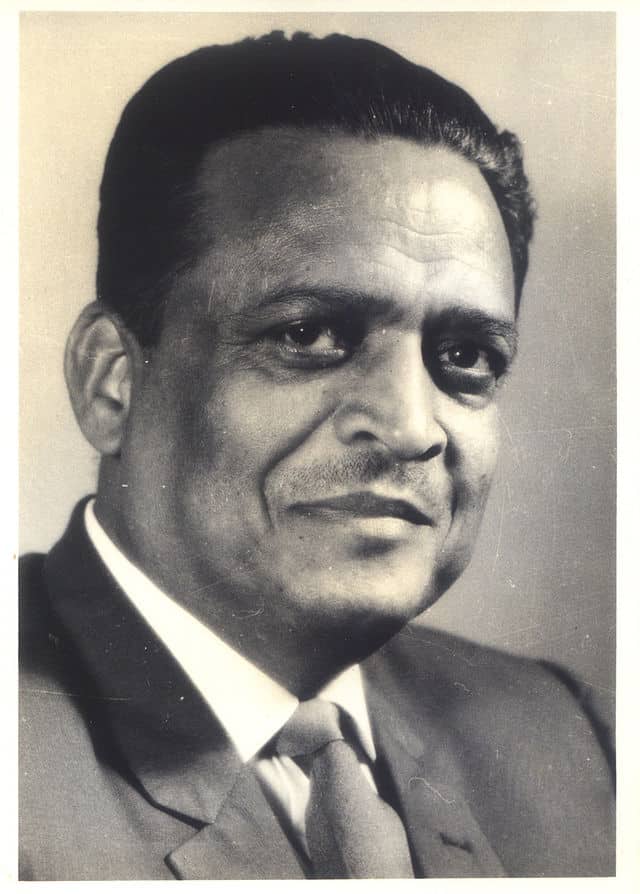
Waman Dattatreya Patwardhan (30 January 1917 – 27 July 2007) was an Indian nuclear chemist, defence scientist and an expert in the science of Explosives engineering. He was the founder director of the Explosives Research and Development Laboratory (now known as the High Energy Materials Research Laboratory (HEMRL) of India. He is considered one of the distinguished scientists in India due to his contributions to Indian space program, Indian nuclear program and missile program in their early stages. He developed the solid propellant for India’s first space rocket launched at Thumba. He was responsible for developing the detonation system of India’s first nuclear device which was successfully tested in 1974, an operation codenamed Smiling Buddha.
Other areas of work: Wrote a book on Hydroponics and developed a cost-effective method for producing parabolic mirrors for astronomical telescopes.
He was awarded Padma Shri in 1974 by the Government of India for his contributions.
Read More About Waman Dattatreya Patwardhan / Source
Ashoke Sen

Ashoke Sen, FRS ( born 1956) is an Indian theoretical physicist and distinguished professor at the Harish-Chandra Research Institute, Allahabad. He is also an honorary fellow in National Institute of Science Education and Research (NISER), Bhubaneswar, India and also a Morningstar Visiting professor at MIT and a distinguished professor at the Korea Institute for Advanced Study. His main area of work is string theory. He was among the first recipients of the Fundamental Physics Prize “for opening the path to the realisation that all string theories are different limits of the same underlying theory”.
Read More About Ashoke Sen / Source
Meghnad Saha

Meghnad Saha FRS (6 October 1893 – 16 February 1956) was a British Indian astrophysicist who developed the Saha ionization equation, used to describe chemical and physical conditions in stars. His work allowed astronomers to accurately relate the spectral classes of stars to their actual temperatures. He was elected to the Parliament of India in 1952.
Read More About Meghnad Saha / Source
Asima Chatterjee

Asima Chatterjee (23 September 1917 – 22 November 2006) was an Indian organic chemist noted for her work in the fields of organic chemistry and phytomedicine. Her most notable work includes research on vinca alkaloids, the development of anti-epileptic drugs, and development of anti-malarial drugs. She also authored a considerable volume of work on medicinal plants of the Indian subcontinent. She was the first woman to receive a Doctorate of Science from an Indian university.
Read More About Asima Chatterjee / Source
Prasanta Chandra Mahalanobis
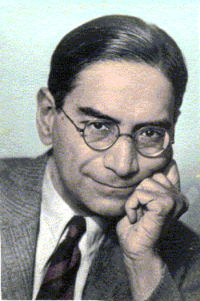
Prasanta Chandra Mahalanobis OBE, FNA, FASc, FRS (29 June 1893 – 28 June 1972) was an Indian scientist and statistician. He is best remembered for the Mahalanobis distance, a statistical measure, and for being one of the members of the first Planning Commission of free India. He made pioneering studies in anthropometry in India. He founded the Indian Statistical Institute, and contributed to the design of large-scale sample surveys. For his contributions, Mahalanobis has been considered the father of modern statistics in India.
Read More About Prasanta Chandra Mahalanobis / Source
Yamuna Krishnan
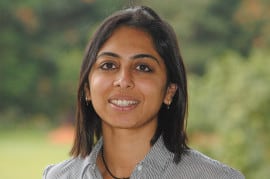
Yamuna Krishnan (born 25 May 1974) is a professor at the Department of Chemistry, University of Chicago, where she has worked since August 2014. She was born to P.T. Krishnan and Mini in Parappanangadi, in the Malappuram district of Kerala, India. She was earlier a Reader in National Centre for Biological Sciences, Tata Institute of Fundamental Research, Bangalore, India. She is the youngest woman recipient of the Shanti Swarup Bhatnagar Prize for science and technology, the highest science award in India, which she won in the year 2013 in the Chemical Science category.
Read More About Yamuna Krishnan / Source
Narendra Karmarkar
Narendra Krishna Karmarkar (born 1955) is an Indian mathematician. Karmarkar developed Karmarkar’s algorithm. He is listed as an ISI highly cited researcher.He invented one of the first provably polynomial time algorithms for linear programming, which is generally referred to as an interior point method. The algorithm is a cornerstone in the field of Linear Programming. He published his famous result in 1984 while he was working for Bell Laboratories in New Jersey.
Read More About Narendra Karmarkar / Source
Abhay Ashtekar
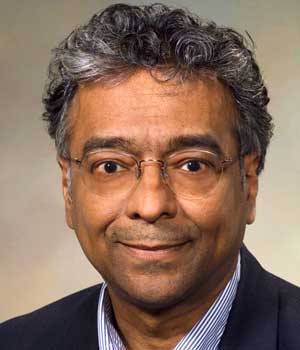
Abhay Vasant Ashtekar (born 5 July 1949) is an Indian theoretical physicist. He is the Eberly Professor of Physics and the Director of the Institute for Gravitational Physics and Geometry at Pennsylvania State University. As the creator of Ashtekar variables, he is one of the founders of loop quantum gravity and its subfield loop quantum cosmology. He has also written a number of descriptions of loop quantum gravity that are accessible to non-physicists. In 1999, Ashtekar and his colleagues were able to calculate the entropy for a black hole, matching a legendary 1974 prediction by Hawking. Oxford mathematical physicist Roger Penrose has described Ashtekar’s approach to quantum gravity as “The most important of all the attempts at ‘quantizing’ general relativity.” Ashtekar was elected as Member to National Academy of Sciences in May 2016.
Read More About Abhay Ashtekar / Source
Amal Kumar Raychaudhuri

Amal Kumar Raychaudhuri (14 September 1923 – 18 June 2005) was an Indian physicist, known for his research in general relativity and cosmology. His most significant contribution is the eponymous Raychaudhuri equation, which demonstrates that singularities arise inevitably in general relativity and is a key ingredient in the proofs of the Penrose–Hawking singularity theorems. Raychaudhuri was also revered as a teacher during his tenure at Presidency College, Kolkata. Many of his students have gone on to become established scientists.
Read More About Amal Kumar Raychaudhuri / Source
Jogesh Pati
Jogesh C. Pati (born 1937 in Baripada, Odisha, India) is an Indian American theoretical physicist at the SLAC National Accelerator Laboratory. Pati was awarded the Dirac Medal for his seminal contributions to a “Quest for Unification” in the year 2000 along with Howard Georgi and Helen Quinn. In 2013, Pati was conferred the honor of Padma Bhushan, the 3rd highest civilian award from the Govt. of India.
Read More About Jogesh Pati / Source
Mitali Mukerji
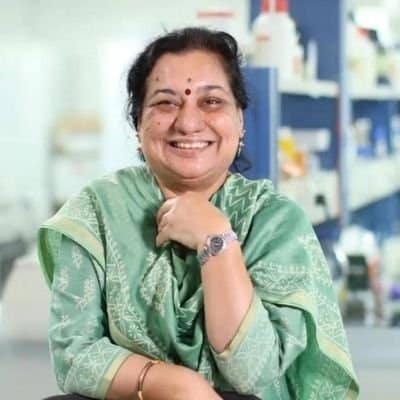
Mitali Mukerji (born 1967) is a Chief Scientist at the CSIR Institute of Genomics and Integrative Biology with notable achievement in the field of human genomics and personalized medicine. She is best known for initiating the field of “Ayurgenomics” in partner with her colleague Dr Bhavana Prasher (MD Ayurveda) under the mentorship of Prof. Samir K. Brahmachari. Ayurgenomics is an innovative study, blending the principles of Ayurveda- the traditional Indian system of medicine- with genomics. Mukerji is also a major contributor in the Indian Genome Variation Consortium, a comprehensive database that is producing “the first genetic landscape of the Indian population”, and has been an author in many publications that use IGV databases to study population genomics. Mukerji has done extensive research on hereditary ataxias, and is involved in many other projects related to tracking disease origins and mutational histories. She is recipient of the prestigious Shanti Swarup Bhatnagar Award in 2010 for her contribution in the field of Medical Sciences.
Read More About Mitali Mukerji / Source
M. S. Swaminathan
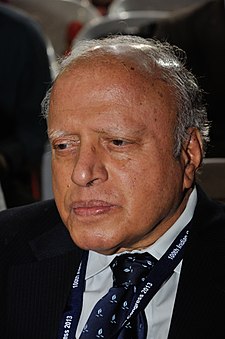
Mankombu Sambasivan Swaminathan (born 7 August 1925) is an Indian geneticist and administrator, known for his role in India’s Green Revolution, a program under which high-yield varieties of wheat and rice were planted. Swaminathan has been called the “Father of Green Revolution in India” for his role in introducing and further developing high-yielding varieties of wheat in India. He is the founder of the MS Swaminathan Research Foundation. His stated vision is to rid the world of hunger and poverty. Swaminathan is an advocate of moving India to sustainable development, especially using environmentally sustainable agriculture, sustainable food security and the preservation of biodiversity, which he calls an “evergreen revolution.”From 1972 to 1979 he was director general of the Indian Council of Agricultural Research. He was Principal Secretary, Ministry of Agriculture from 1979 to 1980. He served as Director General of the International Rice Research Institute (1982–88) and became president of the International Union for the Conservation of Nature and Natural Resources in 1988.
In 1999, he was one of 3 Indians on Time’s list of the 20 most influential Asian people of the 20th century.
Read More About M. S. Swaminathan / Source
E. C. George Sudarshan

Ennackal Chandy George Sudarshan (also known as E. C. G. Sudarshan; 16 September 1931 – 14 May 2018) was an Indian-American theoretical physicist and a professor at the University of Texas. Sudarshan has been credited with numerous contributions to the field of theoretical physics, including Glauber–Sudarshan P representation, V-A theory, tachyons, quantum Zeno effect, open quantum system and Lindblad equation, spin–statistics theorem, non-invariance groups, positive maps of density matrices, and quantum computation. His other contributions include east–west relations, and the philosophy an religion.
Padma Vibhushan Padma Bhushan
Read More About E. C. George Sudarshan / Source
Archana Bhattacharyya
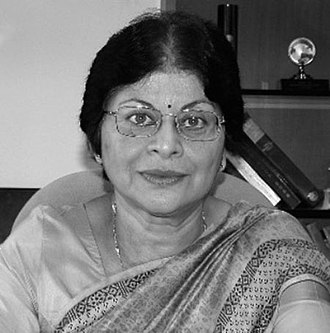
Archana Bhattacharyya (born 1948) is an Indian physicist. She specializes in the field of ionospheric physics, geomagnetism, and space weather and is Director of the Indian Institute of Geomagnetism, Navi Mumbai. Bhattacharyya joined the Indian Institute of Geomagnetism (IIG), Mumbai in 1978. She worked with the group of KC Yeh at the University of Illinois, Urbana-Champaign during 1986-87 and during 1998–2000 she was a Senior NRC Resident Research Associate at the Air Force Research Laboratory in Massachusetts, USA. She was the Director of IIG during 2005–2010. Currently, she is an Emeritus Scientist at IIG.
Read More About Archana Bhattacharyya / Source
Aravind Joshi
Aravind Krishna Joshi (August 5, 1929 – December 31, 2017) was the Henry Salvatori Professor of Computer and Cognitive Science in the computer science department of the University of Pennsylvania. Joshi defined the tree-adjoining grammar formalism which is often used in computational linguistics and natural language processing.
Joshi studied at Pune University and the Indian Institute of Science, where he was awarded a BE in electrical engineering and a DIISc in communication engineering respectively. Joshi’s graduate work was done in the electrical engineering department at the University of Pennsylvania, and he was awarded his PhD in 1960. He became a professor at Penn and was the co-founder and co-director of the Institute for Research in Cognitive Science.
Read More About Aravind Joshi / Source
Akhilesh K. Gaharwar
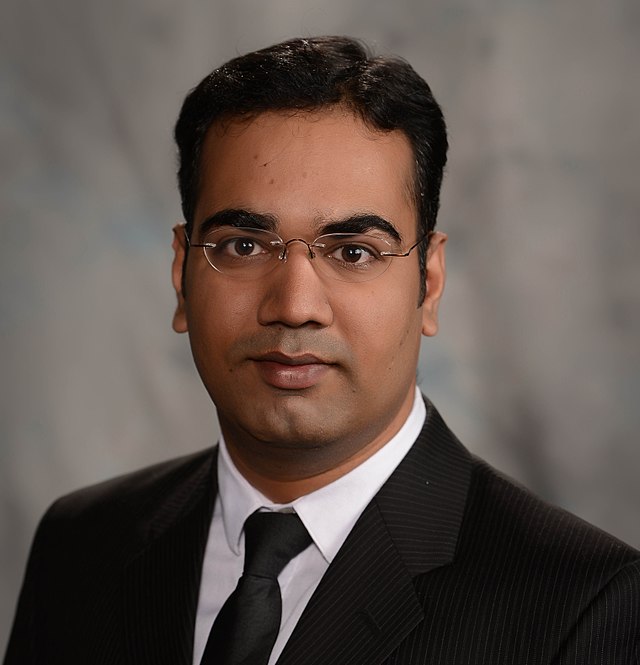
Akhilesh K. Gaharwar (born January 3, 1982, Nagpur, India) is an Indian academic and an assistant professor in the Department of Biomedical Engineering at Texas A&M University. The goal of his lab is to understand the cell-nanomaterials interactions and to develop nanoengineered strategies for modulating stem cell behavior for repair and regeneration of damaged tissue.
Read More About Akhilesh K. Gaharwar / Source
Amitava Raychaudhuri

Amitava Raychaudhuri is an Indian theoretical particle physicist. He is Professor Emeritus at the Physics Department of the Rajabazar Science College, University of Calcutta where he earlier held the Sir Tarak Nath Palit Chair Professorship. He is the nephew of another renowned Indian physicist, Amal Kumar Raychaudhuri.
Read More About Amitava Raychaudhuri / Source
Daulat Singh Kothari
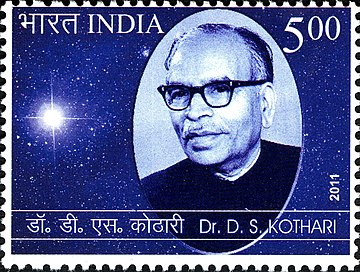
Daulat Singh Kothari (6 July 1906 – 4 February 1993) was an eminent Indian scientist and educationist. D. S. Kothari was born in Udaipur in Rajasthan on 6 July 1906, son of a Jain Headmaster. His father died in the plague epidemic of 1918 and was raised by his mother. He had his early education at Udaipur and Indore and received a master’s degree in physics from Allahabad University in 1928 under guidance of Meghnad Saha. For his PhD, Kothari worked at the Cavendish Laboratory, University of Cambridge under the supervision of Ernest Rutherford, to whom he was recommended by Meghnad Saha.
Read More About Daulat Singh Kothari / Source
Kamala Sohonie
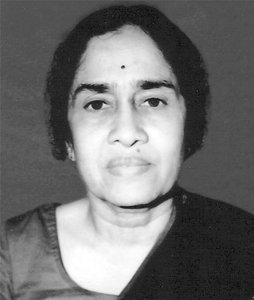
Kamala Sohonie (18 June 1911 – 28 June 1998) was a pioneering Indian biochemist who in 1939 became the first Indian woman to receive a PhD in a scientific discipline. Her acceptance into and work at the Indian Institute of Science, Bangalore, paved the way for women to be accepted into the institution for the first time in it its history.Her research delved into the effects of vitamins and into the nutritive values of pulses, paddy, and groups of food items consumed by some of the poorest sections of the Indian population. Her work on the nutritional benefits of the palm extract called ‘Neera’ was inspired by the then-president Rajendra Prasad’s suggestion. Kamala Sohonie received the Rashtrapati Award for this work.
Read More About Kamala Sohonie / Source
Arun Kumar Pati
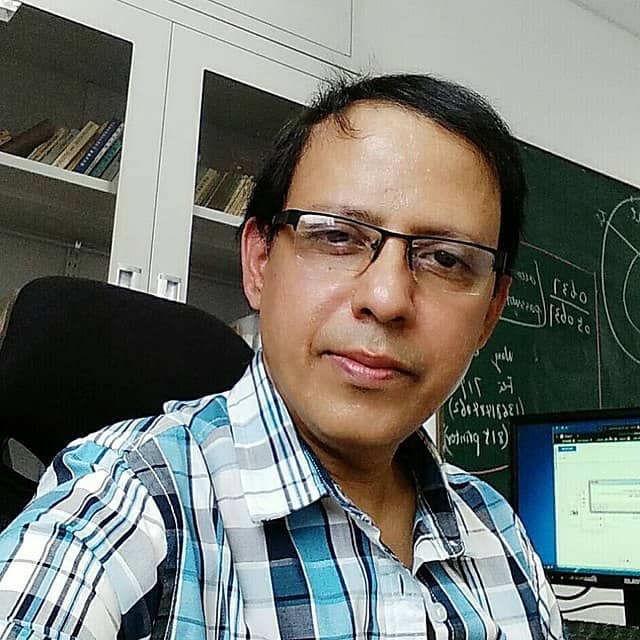
Arun Kumar Pati is an Indian physicist notable for his research in quantum information and computation, the theory of geometric phases and its applications, as well as quantum mechanics. He has made pioneering contributions in the area of quantum information. He is considered an important physicist in the field of quantum information and quantum computation in India, perhaps the first.
Read More About Arun Kumar Pati / Source
C. N. R. Rao
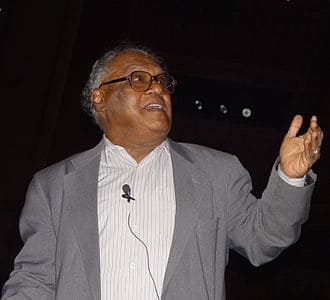
Chintamani Nagesa Ramachandra Rao FRS, also known as C. N. R. Rao (born 30 June 1934), is an Indian chemist who has worked mainly in solid-state and structural chemistry. He has honorary doctorates from 60 universities from around the world, and has authored around 1,600 research publications and 51 books. He is described as a scientist who had won all possible awards in his field except the Nobel Prize.A precocious child, Rao completed BSc from Mysore University at age seventeen, and MSc from Banaras Hindu University at age nineteen. He earned a PhD from Purdue University at age twenty-four. He was the youngest lecturer when he joined the Indian Institute of Science in 1959. After a transfer to Indian Institute of Technology Kanpur, he returned to IISc, eventually becoming its Director from 1984 to 1994. He was Chair of the Scientific Advisory Council to the Prime Minister of India during 1985 to 1989 and 2005 to 2014. He found and works in Jawaharlal Nehru Centre for Advanced Scientific Research and International Centre for Materials Science.
Rao received most important scientific awards and honours including the Marlow Medal, Shanti Swarup Bhatnagar Prize for Science and Technology, Hughes Medal, India Science Award, Dan David Prize, and Royal Medal. He also received Padma Shri and Padma Vibhushan from Government of India. On 16 November 2013, the Government of India selected him for Bharat Ratna, the highest civilian award in India, making him the third scientist after C.V. Raman and A. P. J. Abdul Kalam to receive the award. He received the award on 4 February 2014 from President Pranab Mukherjee at the Rashtrapati Bhavan.
Read More About C. N. R. Rao / Source
Animesh Chakraborty
Animesh Chakravorty FNA, FASc (born 30 June 1935) is a Bengali Indian academic and a professor of chemistry. In 1975, he was awarded the Shanti Swarup Bhatnagar Prize for Science and Technology in chemistry by the Council of Scientific and Industrial Research.
Read More About Animesh Chakraborty / Source
Salim Ali
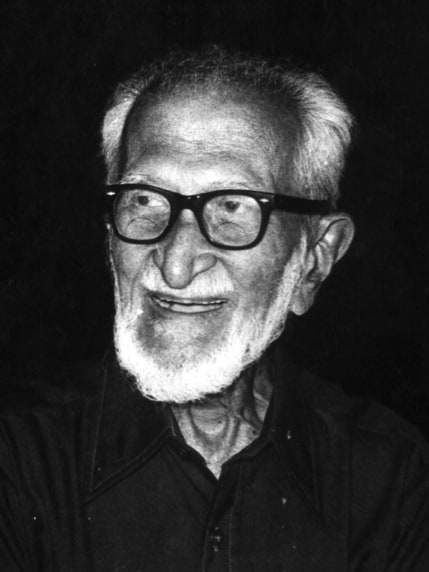
Sálim Moizuddin Abdul Ali (12 November 1896 – 20 June 1987) was an Indian ornithologist and naturalist. Sometimes referred to as the “Birdman of India”, Salim Ali was the first Indian to conduct systematic bird surveys across India and wrote several bird books that popularized ornithology in India. He became a key figure behind the Bombay Natural History Society after 1947 and used his personal influence to garner government support for the organisation, create the Bharatpur bird sanctuary (Keoladeo National Park) and prevent the destruction of what is now the Silent Valley National Park. Along with Sidney Dillon Ripley he wrote the landmark ten volume Handbook of the Birds of India and Pakistan, a second edition of which was completed after his death. He was awarded the Padma Bhushan in 1958 and the Padma Vibhushan in 1976, India’s third and second highest civilian honours respectively. Several species of birds, a couple of bird sanctuaries and institutions have been named after him.
Read More About Salim Ali / Source
K. S. Krishnan
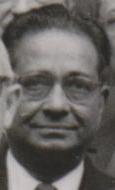
Sir Kariamanikkam Srinivasa Krishnan, FRS, (4 December 1898 – 14 June 1961) was an Indian physicist. He was a co-discoverer of Raman scattering, for which his mentor C. V. Raman was awarded the 1930 Nobel Prize in Physics.
Read More About K. S. Krishnan / Source
Narinder Singh Kapany
Narinder Singh Kapany (31 October 1926 – 4 December 2020) was an Indian-American physicist best known for his work on fibre optics. He is credited with coining of the term fibre optics and is also considered the ‘father of fibre optics’. Fortune named him one of seven ‘Unsung Heroes’ in their ‘Businessmen of the Century’ issue in 1999.
Read More About Narinder Singh Kapany / Source
Prafulla Chandra Ray
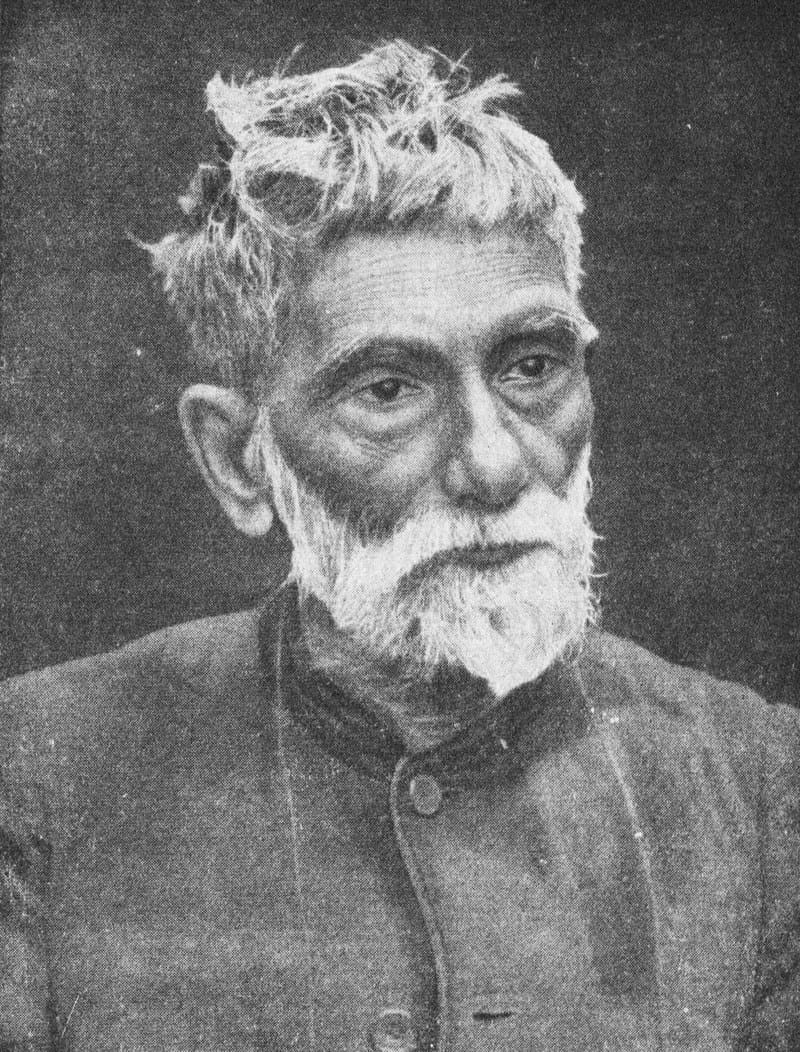
Acharya Sir Prafulla Chandra Ray (also spelled Prafulla Chandra Rây and Prafulla Chandra Roy) CIE, FNI, FRASB, FIAS, FCS ( 2 August 1861 – 16 June 1944) was an eminent Bengali chemist, educationist, historian, industrialist and philanthropist. He established the first modern Indian research school in chemistry (post classical age) and is regarded as the father of chemical science in India.The Royal Society of Chemistry honoured his life and work with the first ever Chemical Landmark Plaque outside Europe. He was the founder of Bengal Chemicals & Pharmaceuticals, India’s first pharmaceutical company. He is the author of A History of Hindu Chemistry from the Earliest Times to the Middle of Sixteenths Century (1902).
Read More About Prafulla Chandra Ray / Source
Venkatraman Radhakrishnan
Venkataraman Radhakrishnan (18 May 1929 – 3 March 2011) was a space scientist and member of the Royal Swedish Academy of Sciences. He ended his career as professor emeritus of the Raman Research Institute in Bangalore, India, of which he had previously been director from 1972 to 1994.
Radhakrishnan served on various committees in various capacities. He was the vice president of the International Astronomical Union during 1988–1994. He served as the chairman of Commission J ( Radio Astronomy) of the International Union of Radio Sciences (1981–1984).
Radhakrishnan was one of the most respected radio astronomers in the world during his time, in that he was associated in one capacity or other with the world’s biggest radio telescopes. He was the member of the Foreign Advisory Committee for the Netherlands Foundation for Radio Astronomy, Steering Committee of the Australia Telescope National Facility, CSIRO, Australia, Advisory Committee for the Green Bank Radio Telescope, National Radio Astronomy Observatory, USA He was also the Member of the Governing Council of the Physical Research Laboratory, Ahmedabad and the Scientific Advisory Committee of the Inter-University Centre for Astronomy and Astrophysics.
Read More About Venkatraman Radhakrishnan / Source
Harish Chandra

Harish-Chandra FRS (11 October 1923 – 16 October 1983) was an Indian American mathematician and physicist who did fundamental work in representation theory, especially harmonic analysis on semisimple Lie groups. ‘Harish Chandra Maharotra’ was awarded the Padma Bhushan in 1977 in the field of literature and education by the Government of India.
Read More About Harish Chandra / Source
Janaki Ammal
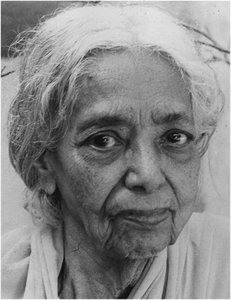
Janaki Ammal Edavalath Kakkat (4 November 1897 – 7 February 1984) was an Indian botanist who worked on plant breeding, cytogenetics and phytogeography. Her most notable work involved studies on sugarcane and the eggplant (brinjal) but she also worked on the cytogenetics of a range of plants and co-authored the Chromosome Atlas of Cultivated Plants (1945) with C.D. Darlington. She also took an interest in ethnobotany, and took an interest in plants of medicinal and economic value from the rain forests of Kerala, India. She was awarded a Padma Shri by the Indian government in 1977.
Read More About Janaki Ammal / Source
Jayant Narlikar
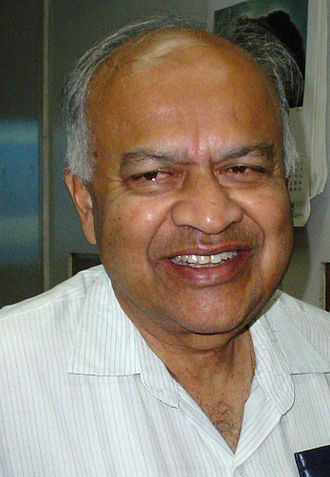
Jayant Vishnu Narlikar (born 19 July 1938) is an Indian astrophysicist and emeritus professor at the Inter-University Centre for Astronomy and Astrophysics (IUCAA). He developed with Sir Fred Hoyle the conformal gravity theory, known as Hoyle–Narlikar theory. It synthesises Albert Einstein’s theory of relativity and Mach’s principle. It proposes that the inertial mass of a particle is a function of the masses of all other particles, multiplied by a coupling constant, which is a function of cosmic epoch.
Read More About Jayant Narlikar / Source
Sulabha K. Kulkarni

Sulabha Kashinath Kulkarni (born 1 June 1949 in Pune, Maharashtra) is an Indian physicist, whose research spans the areas of Nanotechnology, Materials Science, and Surface Science. She is currently a visiting faculty member at Indian Institute of Science Education and Research, Pune, India.
Read More About Sulabha K. Kulkarni / Source
Darshan Ranganathan
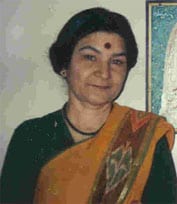
Darshan Ranganathan (4 June 1941 – 4 June 2001) was an organic chemist from India who was known for her work in bio-organic chemistry, including “pioneering work in protein folding.” She was also recognized for her work in “supramolecular assemblies, molecular design, chemical simulation of key biological processes, synthesis of functional hybrid peptides and synthesis of nanotubes.”
Read More About Darshan Ranganathan / Source
Anil Kakodkar

Anil Kakodkar (born 11 November 1943) is an Indian nuclear physicist and mechanical engineer. He was the chairman of the Atomic Energy Commission of India and the Secretary to the Government of India, he was the Director of the Bhabha Atomic Research Centre, Trombay from 1996–2000. He was awarded the Padma Vibhushan, India’s second highest civilian honour, on 26 January 2009.
Apart from playing a major role in India’s nuclear tests asserting sovereignty, Kakodkar champions India’s self-reliance on thorium as a fuel for nuclear energy.
Read More About Anil Kakodkar / Source
Roddam Narasimha

Roddam Narasimha (20 July 1933 – 14 December 2020) was an Indian aerospace scientist and fluid dynamicist. He was a professor of Aerospace Engineering at the Indian Institute of Science (1962–1999), director of the National Aerospace Laboratories (1984–1993) and the chairman of the Engineering Mechanics Unit at Jawaharlal Nehru Centre for Advanced Scientific Research (JNCASR, 2000–2014). He was the DST Year-of-Science Chair Professor at JNCASR and concurrently held the Pratt & Whitney Chair in Science and Engineering at the University of Hyderabad. Narasimha was awarded the Padma Vibhushan, India’s second-highest civilian award, in 2013.
Read More About Roddam Narasimha / Source
Charusita Chakravarty
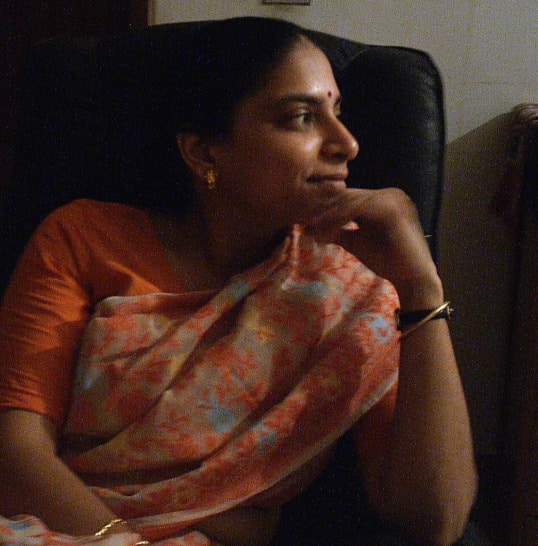
Charusita Chakravarty (5 May 1964 – 29 March 2016) was an Indian academic and scientist. She was a professor of chemistry at the Indian Institute of Technology, Delhi since 1999. In 2009 she was conferred Shanti Swarup Bhatnagar Prize for Science and Technology in the field of chemical science. In 1999, she received B.M. Birla Science Award. She was an Associate Member of the Centre for Computational Material Science, Jawaharlal Nehru Centre for Advanced Scientific Research, Bangalore.On 29 March 2016, Chakravarty passed after a long and arduous battle with breast cancer.
Read More About Charusita Chakravarty / Source
Rajeshwari Chatterjee
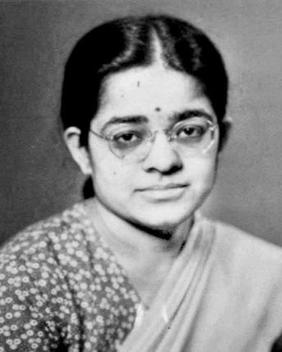
Rajeshwari Chatterjee (24 January 1922 – 3 September 2010) was an Indian scientist and an academic. She was the first woman engineer from Karnataka. During her tenure at the Indian Institute of Science (IISc), Bangalore, Chatterjee was a professor and later chairperson of the department of Electrical Communication Engineering.
Read More About Rajeshwari Chatterjee / Source
Radha Balakrishnan
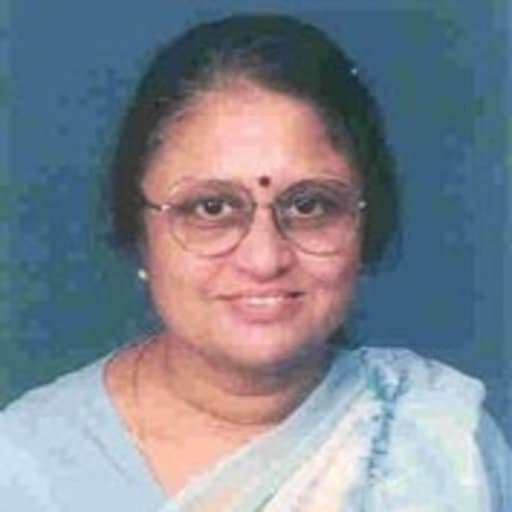
Radha Balakrishnan is an Indian physicist. She works at Institute of Mathematical Sciences, Chennai primarily related to nonlinear dynamics and applications in physics. During the 1980s, when Balakrishnan returned to India, she worked at the Department of Theoretical Physics, University of Madras as a Research Associate. She joined Institute of Mathematical Sciences, Chennai in 1987. She retired in the year 2004 and since that time, Balakrishnan is continuing her research as a CSIR Emeritus Scientist. Her current research is on Nonlinear Dynamics, Solitons and Applications in Physics, Connections to Classical Differential Geometry.
Read More About Radha Balakrishnan / Source
Abhay Bhushan
Abhay K. Bhushan (born 23 November 1944, in Allahabad, India) has been a major contributor to the development of the Internet TCP/IP architecture, and is the author of the File Transfer Protocol (which he started working on while he was a student at IIT-Kanpur) and the early versions of email protocols. He is currently chairman of Asquare Inc. and President of the IIT-Kanpur Foundation.
Read More About Abhay Bhushan / Source
Amar Gupta

Amar Gupta (born 1953) is a computer scientist, originally from Gujarat, India and now based in the United States. Gupta has worked in academics, private companies, and international organizations in positions that involved analysis and leveraging of opportunities at the intersection of technology and business, as well as the design, development, and implementation of prototype systems that led to widespread adoption of new techniques and technologies. He has surmounted several strategic, business, technical, economic, legal, and public policy barriers related to several innovative products and services.
Gupta has spent the bulk of his career at MIT. In 2015, he rejoined MIT to work at the Institute for Medical Engineering and Sciences (IMES), Department of Electrical Engineering & Computer Science, and the Computer Science & Artificial Intelligence Lab (CSAIL) on innovation and entrepreneurship related to Digital Health and Globally Distributed Teams. He serves as Principal/Co-Principal Investigator and Coordinator for “Telemedicine” and “Enhancing Productivity of Geographically Distributed Teams” areas.
Read More About Amar Gupta / Source
Avinash Kak
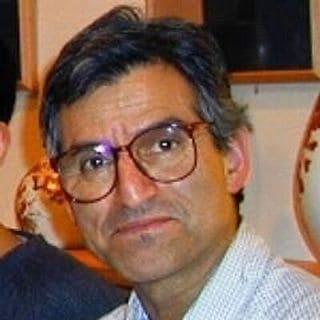
Avinash C. Kak (born 1944) is a professor of Electrical and Computer Engineering at Purdue University who has conducted pioneering research in several areas of information processing. His most noteworthy contributions deal with algorithms, languages, and systems related to networks (including sensor networks), robotics, and computer vision. Born in Srinagar, Kashmir, he was educated at College of Engineering, Guindy and Indian Institute of Technology Delhi. He joined the faculty of Purdue University in 1971.His brother is the computer scientist Subhash Kak and sister the literary theorist Jaishree Odin.
Read More About Avinash Kak / Source
Amar Bose

Amar Gopal Bose ( November 2, 1929 – July 12, 2013) was an American entrepreneur and academic. An electrical engineer and sound engineer, he was a professor at the Massachusetts Institute of Technology (MIT) for over 45 years. He was also the founder and chairman of Bose Corporation.
In 2011, he donated a majority of the company to MIT in the form of non-voting shares to sustain and advance MIT’s education and research mission.
Read More About Amar Bose / Source
A. S. Kiran Kumar

Aluru Seelin Kiran Kumar (born 22 Oct 1952) is an Indian space scientist and former chairman of the Indian Space Research Organisation, having assumed office on 14 January 2015. He is credited with the development of key scientific instruments aboard the Chandrayaan-1 and Mangalyaan space crafts. In 2014, he was awarded the Padma Shri, India’s fourth highest civilian award, for his contributions to the fields of science and technology. Kiran Kumar previously served as Director of Ahmedabad Space Applications Centre.
Read More About A. S. Kiran Kumar / Source
Amiya Charan Banerjee
Amiya Charan Banerjee (23 January 1891 – 31 May 1968) was an Indian mathematician. Amiya Charan Banerjee was born on 23 January 1891 in his maternal grandfather’s house at Bhagalpur. As his father had a transferable job, he was educated mostly at Bhagalpur Zilla School. He stood first in the matriculation examination and joined Presidency College, Kolkata. He completed postgraduate studies in mathematics and won a Bihar Government scholarship to go to England. He became a Wrangler and foundation scholar from Clare College, Cambridge.
Read More About Amiya Charan Banerjee / Source
A. Sivathanu Pillai
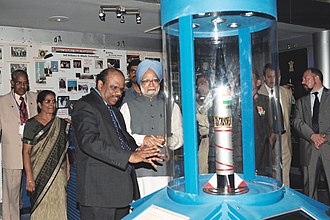
A Sivathanu Pillai is an Indian scientist who formerly served as Honorary Distinguished Professor at Indian Space Research Organisation (2015-2018) and an honorary professor at IIT Delhi in the Department of Mechanical Engineering (2015-2016) and a Visiting Professor at Indian Institute of Science (2014-2015).
He is the President of Project Management Associates and is the former Chairperson of the Board of Governors of the National Institute of Technology, Kurukshetra.He formerly served as Chief Controller of Research and Development from year 1996 to 2014 and held the rank of “Distinguished Scientist” from year 1999 to 2014 at the Defence Research and Development Organisation at the Ministry of Defence of the Republic of India. He is also the founder-CEO and managing director of the BrahMos Aerospace Private Limited.He also previously served as Vice President of International Project Management Association and as Special Secretary representing India in the India-Russia Inter-Governmental Commission on Military-Technical Cooperation.
Read More About A. Sivathanu Pillai / Source
Ajoy Ghatak

Ajoy Ghatak is an Indian physicist and author of physics textbooks. Ajoy Ghatak has written over 170 research papers and more than 20 books (see Selected Publications below). His undergraduate textbook on Optics has been translated to Chinese and Persian and his monograph on Inhomogeneous Optical Waveguides (coauthored with Professor Sodha) has been translated to Chinese and Russian. In 1995, he was elected Fellow of the Optical Society of America “for distinguished service to optics education and for his contribution to the understanding of propagation characteristics of gradient index media, fibers and integrated optical devices”.
Read More About Ajoy Ghatak / Source
Ambarish Ghosh

Ambarish Ghosh is an Indian scientist, a faculty member at the Centre for Nano Science and Engineering (CeNSE), Indian Institute of Science, Bangalore. He is also an associate faculty at the Department of Physics. He is known for his work on nanorobots, active matter physics, plasmonics, metamaterials and electron bubbles in liquid helium.
Read More About Ambarish Ghosh / Source
A. P. Balachandran
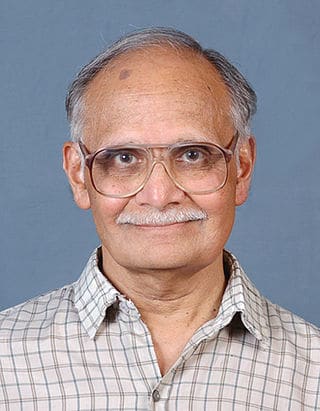
Aiyalam Parameswaran Balachandran (born 25 January 1938) is an Indian theoretical physicist well known for his extensive contributions to the role of classical topology in quantum physics. He is currently an emeritus professor in the Department of Physics, Syracuse University, where he was previously the Joel Dorman Steele Professor of Physics between 1999 and 2012. He has also been a fellow of the American Physical Society since 1988 and was awarded a prize by the U.S. Chapter of the Indian Physics Association in recognition of his outstanding scientific contributions.In 1990, Syracuse University honored him with a Chancellor’s Citation for Exceptional Academic Achievement.
Read More About A. P. Balachandran / Source
A. S. Rao
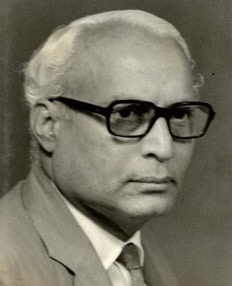
Ayyagari Sambasiva Rao (popularly known as A. S. Rao) (1914–2003) was an Indian scientist and founder of Electronics Corporation of India Limited (ECIL), Hyderabad, Telangana, India. He completed his M.Sc in physics from Banaras Hindu University and then Masters in Electrical Engineering from Stanford University.
Read More About A. S. Rao / Source
Biman Bagchi
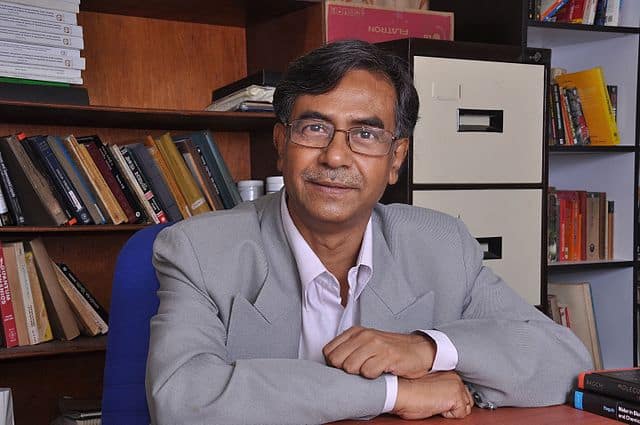
Biman Bagchi (born 1954) is an Indian biophysical chemist, theoretical chemist and an Amrut Mody Professor at the Solid State and Structural Chemistry Unit of the Indian Institute of Science. He is known for his studies on statistical mechanics; particularly in the study of phase transition and nucleation, solvation dynamics, mode-coupling theory of electrolyte transport, dynamics of biological macromolecules (proteins, DNA etc.), protein folding, enzyme kinetics, supercooled liquids and protein hydration layer.He is an elected fellow of the Indian National Science Academy, the Indian Academy of Sciences and The World Academy of Sciences. Besides several scientific articles, he has authored two books, Molecular Relaxation in Liquids and Water in Biological and Chemical Processes: From Structure and Dynamics to Function The Council of Scientific and Industrial Research, the apex agency of the Government of India for scientific research, awarded him the Shanti Swarup Bhatnagar Prize for Science and Technology, one of the highest Indian science awards, in 1991, for his contributions to chemical sciences.
Read More About Biman Bagchi / Source
Benjamin Peary Pal

Benjamin Peary Pal or B.P. Pal FRS (26 May 1906 – 14 September 1989) was an Indian plant breeder and agronomist who served as a director of the Indian Agricultural Research Institute in Delhi and as the first Director General of the Indian Council of Agricultural Research. He worked on wheat genetics and breeding but was also known for his interest in rose varieties.
Read More About Benjamin Peary Pal / Source
Bikas Chakrabarti
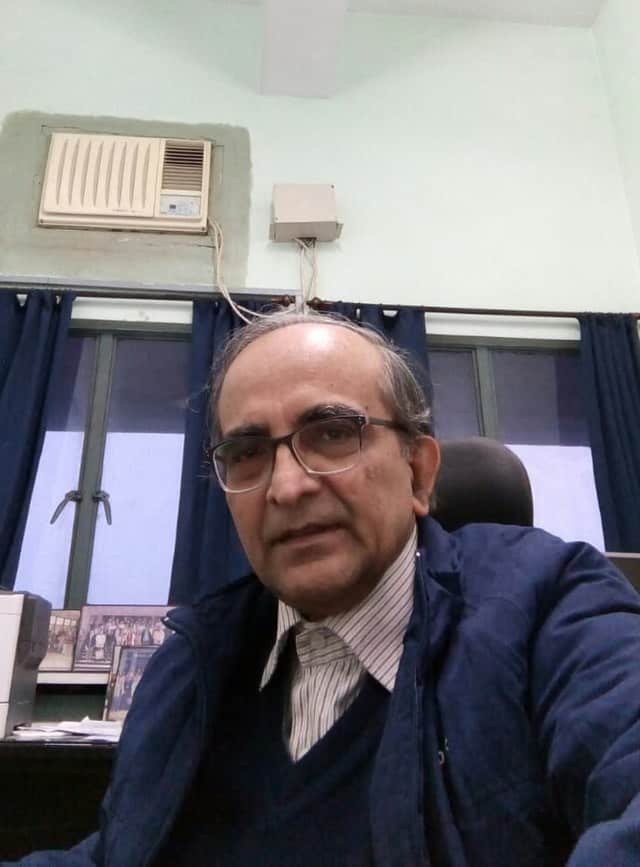
Bikas Kanta Chakrabarti (born 14 December 1952 in Calcutta) is an Indian physicist. Since January 2018, he is emeritus professor of physics at the Saha Institute of Nuclear Physics, Kolkata, India. Chakrabarti received his Ph.D. degree from Calcutta University in 1979. Following post-doctoral work at the University of Oxford and the University of Cologne, he joined the faculty of Saha Institute of Nuclear Physics (SINP) in 1983.
Read More About Bikas Chakrabarti / Source
Biswarup Mukhopadhyaya
Biswarup Mukhopadhyaya (born 1 August 1960) is an Indian theoretical high energy physicist and a senior professor at Indian Institute of Science Education and Research Kolkata (IISER Kolkata). Known for his research on High energy colliders, Higgs bosons, neutrinos, Mukhopadhyaya is an elected fellow of the National Academy of Sciences, India. The Council of Scientific and Industrial Research, the apex agency of the Government of India for scientific research, awarded him the Shanti Swarup Bhatnagar Prize for Science and Technology, one of the highest Indian science awards, for his contributions to physical sciences in 2003.
Read More About Biswarup Mukhopadhyaya / Source
B. L. K. Somayajulu
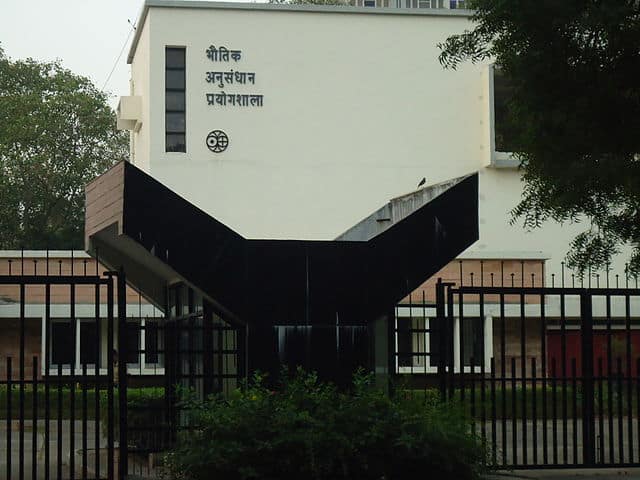
Bhmidipati Lakshmidhara Kanakadri Somayajulu (born 1937) is an Indian geochemist and a CSIR Emeritus Scientist at Physical Research Laboratory, Ahmedabad. He is known for his studies on ancient and contemporary marine processes and is an elected fellow of several science societies such as the National Academy of Sciences, India, Geological Society of India, Indian Geophysical Union, American Geophysical Union, European Association for Geochemistry, Indian Academy of Sciences and the Indian National Science Academy. The Council of Scientific and Industrial Research, the apex agency of the Government of India for scientific research, awarded him the Shanti Swarup Bhatnagar Prize for Science and Technology, one of the highest Indian science awards for his contributions to Earth, Atmosphere, Ocean and Planetary Sciences in 1978.
Read More About B. L. K. Somayajulu / Source
B. V. Sreekantan
Badanaval Venkatasubba Sreekantan (30 June 1925- 27 October 2019) was an Indian high-energy astrophysicist and a former associate of Homi J. Bhabha at the Tata Institute of Fundamental Research (TIFR). He was also a Dr. S. Radhakrishnan Visiting Professor at the National Institute of Advanced Studies, Bangalore.
Known for his studies in the fields of cosmic rays, elementary particles, and high-energy X-ray astronomics, Sreekantan was an elected fellow of all the three major Indian science academies namely, the Indian Academy of Sciences, the Indian National Science Academy and the National Academy of Sciences, India as well as the Maharashtra Academy of Sciences. He was also an associate of Bruno Rossi at Massachusetts Institute of Technology. The Government of India awarded him the Padma Bhushan, India’s third highest civilian honour, in 1988.
Read More About B. V. Sreekantan / Source
C. Mohan

Chandrasekaran Mohan is an Indian-born American computer scientist. He was born on 3 August 1955 in Tamil Nadu, India. After growing up there and finishing his undergraduate studies in Chennai, he moved to the United States in 1977 for graduate studies. After having been an Indian citizen from birth, since 2007 he has been an American citizen and an Overseas Citizen of India (OCI). In June 2020, he retired from being an IBM Fellow at the IBM Almaden Research Center (San Jose, California) after working at IBM Research for 38.5 years. Currently, he is a Distinguished Visiting Professor at China’s Tsinghua University. He is also an Honorary Advisor at the Tamil Nadu e-Governance Agency (TNeGA) in Chennai and an Advisor at the Kerala Blockchain Academy in Kerala.
Read More About C. Mohan / Source
Chitra Mandal
Chitra Mandal is a chemical biologist in the field of biomolecules and their applications in health and diseases. She is currently the Director of CSIR – Indian Institute of Chemical biology in Kolkata, India. Mandal completed her PhD early on in her career from Indian Institute of Science, Bangalore, in the area of bio-organic chemistry.[citation needed] She went on to do post doctoral research at University of Pennsylvania in Philadelphia. Returning to India, she became a scientist at CSIR, until she went on to head its Innovation Complex in Kolkata, and then its Director. Her research area is mainly the glycolsylation of biomolecules and their potential application in disease management, cancer and tumor immunology.
Read More About Chitra Mandal / Source
K. S. Chandrasekharan
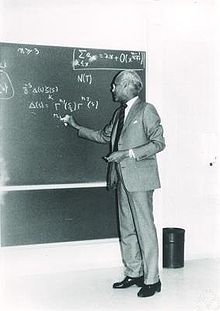
Komaravolu Chandrasekhar (21 November 1920 – 13 April 2017) was a professor at ETH Zurich and a founding faculty member of School of Mathematics, Tata Institute of Fundamental Research (TIFR). He is known for his work in number theory and summability. He received the Padma Shri, the Shanti Swarup Bhatnagar Award, and the Ramanujan Medal, and he was an honorary fellow of TIFR. He was president of the International Mathematical Union (IMU) from 1971 to 1974.
Read More About K. S. Chandrasekharan / Source
Chanchal Kumar Majumdar
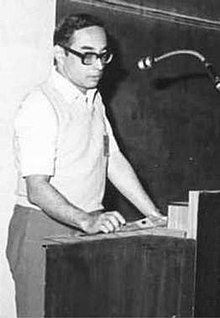
Chanchal Kumar Majumdar (11 August 1938 – 20 June 2000) was an Indian condensed matter physicist and the founder director of S.N. Bose National Centre for Basic Sciences. Known for his research in quantum mechanics, Majumdar was an elected fellow of all the three major Indian science academies – the Indian National Science Academy, the National Academy of Sciences, India, and the Indian Academy of Sciences – as well a member of the New York Academy of Sciences and the American Physical Society.
Majumdar was the mentor of Dipan Ghosh with whom he co-developed the Majumdar–Ghosh model, an extension of the Heisenberg model which improved upon the latter, and was a protege of Walter Kohn and Maria Goeppert-Mayer, both Nobel laureates. The Council of Scientific and Industrial Research, the apex agency of the Government of India for scientific research, awarded him the Shanti Swarup Bhatnagar Prize for Science and Technology, one of the highest Indian science awards, for his contributions to Physical Sciences in 1976.
Read More About Chanchal Kumar Majumdar / Source
C. S. Seshadri
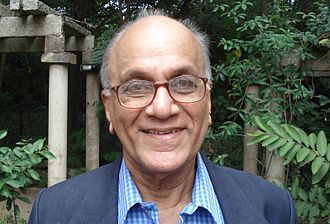
Conjeevaram Srirangachari Seshadri FRS (29 February 1932 – 17 July 2020) was an Indian mathematician. He was the founder and director-emeritus of the Chennai Mathematical Institute, and is known for his work in algebraic geometry. The Seshadri constant is named after him. He was a recipient of the Padma Bhushan in 2009, the third highest civilian honor in the country.
Read More About C. S. Seshadri / Source
D. Bap Reddy
Dr. Dwaram Bap Reddy was a top-ranking official within the United Nations System. He served at the Food and Agriculture Organization of the United Nations for twenty one years. Reddy was a pioneer in the Indian Reddys to arrive in the United States and arrived in September 1946. He received his PhD in 1950 from the University of California, Berkeley, United States. He was elected as the president of the association. Indian student studying at the University of California, Berkeley. The association was called Hindustan Students Association and was headquartered at International House, where he was a resident. The International House located at Piedmont Avenue was designed by renowned Bay Area architect George Kelham and features many alumni, including ambassadors and politicians. He was also a member of the International House Student Advisory Council.
Read More About D. Bap Reddy / Source
Debasish Ghose
Debasish Ghose (born 16 May 1960) is a Professor at Department of Aerospace Engineering, Indian Institute of Science. He’s believed to have initiated work on cooperative control in India, having pioneered research on Intelligent control and multi-agents. He founded the first mobile robotics lab in India i.e. Mobile Robotics Laboratory at IISc in 2002. He is known for his early work in Swarm intelligence, Distributed computing and game theory. His primary research is in Guidance and control of autonomous vehicles, although, current interest is in Computational intelligence i.e. Machine Learning for Aerial Robotics.Formerly, he has served as Chair, Department of Aerospace, IISc (2012–15) and Convener, Space Technology Cell (STC), ISRO-IISc.He was a Visiting Professor at the University of California, Los Angeles for nearly 4 years.
Read More About Debasish Ghose / Source
Dipan Ghosh

Dipan Ghosh is an Indian theoretical physicist, best known for his exact enumeration of the ground state of a Heisenberg antiferromagnet, known in literature as the Majumdar–Ghosh model, which he developed with Chanchal Kumar Majumdar.
Read More About Dipan Ghosh / Source
Dronamraju Krishna Rao
Dronamraju Krishna Rao (14 January 1937 – 3 December 2020) was an Indian-born geneticist and president of the Foundation for Genetic Research in Houston, Texas. He was born in Pithapuram, in the state of Andhra Pradesh, India. One focus of his work has been the research of his mentor J. B. S. Haldane. As an author, his name is usually rendered Krishna R. Dronamraju. He died in Houston at age 83.
Read More About Dronamraju Krishna Rao / Source
Dadaji Ramaji Khobragade

Dadaji Ramaji Khobragade ( died 3 June 2018) was an Indian cultivator who bred and refined a high-yielding variety of paddy, HMT.D.R. Khobragade belonged to Mahar caste fom Nagbhid village of Chandrapur district, Maharashtra.Around 1983, Khobragade noticed a plant with slightly different appearance and yellowish seeds in his field planted with the ‘Patel 3’ variety of paddy, which he experimented on in the years to come. The new variety was found giving high yields compared to the varieties available at that time. By 1990, the variety was given a name HMT.Despite his innovation, Khobragade lived a poor and mostly neglected life. He got some media attention when Forbes magazine named him among seven most powerful entrepreneurs of India in 2010.He first shot to fame when he accused the state-run Punjabrao Krishi Vidyapeeth (PKV) for taking credit for the brand that he had originally bred on his farm and given to the university scientists in 1994.While Dadaji claimed the PKV had appropriated his variety, the PKV held that sourced it from him and significantly improved the variety with their scientific inputs. The issue remains unresolved till date. PKV never officially gave Dadaji his credit in its varietal release proposal.The National Innovation Foundation (NIF) recognised his work in 2003-04 and the Maharashtra government gave him the Krishi Bhushan and Krishi Ratna awards for his innovations. One of his varieties called Chinnour is akin to the Basmati of the north. He named his latest variety after himself: DRK.
Read More About Dadaji Ramaji Khobragade / Source
Dattatreyudu Nori
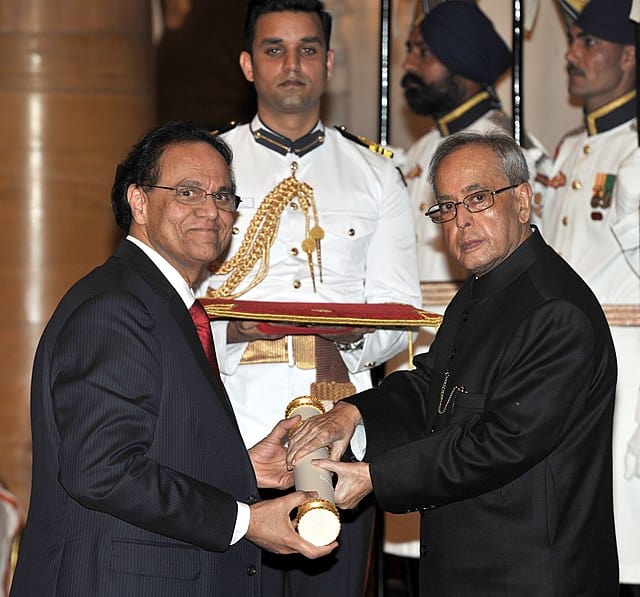
Dr. Dattatreyudu Nori is a noted Indian radiation oncologist. He was once named one of the top doctors in America for the treatment of cancers in women by the women’s magazine Ladies’ Home Journal. Dr. Nori is one of the world’s leading authorities in the subspecialty of brachytherapy. In 1979, he was the first physician in the United States to work with a computerized brachytherapy treatment system and develop new techniques through clinical research. He was instrumental in the development and successful application of brachytherapy; the implantation of radioactive seeds to combat cancer.
Read More About Dattatreyudu Nori / Source
Govind Swarup
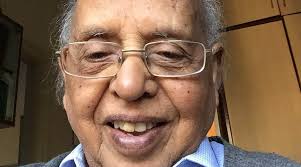
Govind Swarup (March 23, 1929 – September 7, 2020) was a radio astronomer and one of the pioneers of radio astronomy, known not only for his many important research contributions in several areas of astronomy and astrophysics, but also for his outstanding achievements in building ingenious, innovative and powerful observational facilities for front-line research in radio astronomy. He was the key scientist behind concept, design and installation of the Ooty Radio Telescope (India) and the Giant Metrewave Radio Telescope (GMRT) near Pune. Under his leadership, a strong group in radio astrophysics has been built at Tata Institute of Fundamental Research that is comparable to the best in the world.
Read More About Govind Swarup / Source
Indumadhab Mallick
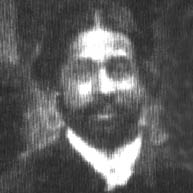
Indumadhab Mallick ( 4 December 1869 – 8 May 1917) was an Indian polymath who invented the Icmic cooker and made it a commercial success. He was a philosopher, physicist, botanist, lawyer, physician, inventor, entrepreneur, collector, traveler, writer and social reformer.
Read More About Indumadhab Mallick / Source
Jitendra Nath Goswami

Jitendranath Goswami (born 18 November 1950) is an Indian scientist from Jorhat, Assam. He was the Chief Scientist of Chandrayaan-1, and was also the developer of this project. He served as a director of Physical Research Laboratory situated at Ahmadabad, Gujarat. He was also associated with Chandrayaan-2 and Mangalyaan.
Read More About Jitendra Nath Goswami / Source
Kewal Krishan

Dr. Kewal Krishan, an Indian forensic anthropologist, is Associate Professor of physical anthropology and former Chair of Department of Anthropology at Panjab University, Chandigarh, India. He has contributed to the development of forensic anthropology in India. He is one of the very few forensic anthropology experts of the nation. He earned his PhD in Forensic Anthropology in 2003 from Panjab University, Chandigarh, India. He is an elected fellow of the Royal Anthropological Institute of Great Britain and Ireland (FRAI).His published research deals with the analysis of various aspects of human morphology and their forensic applications in Indian populations. He has contributed articles to the Encyclopedia of Forensic Sciences 2nd Edition and Encyclopedia of Forensic and Legal Medicine 2nd Edition published by Elsevier in 2013 and 2016 respectively.
His most cited work pertains to the forensic podiatry of the north Indian population. In one of his noteworthy work in 2008, he studied the effect of body weight and additional body weight on the footprints and its interpretation in crime scene investigation.
Read More About Kewal Krishan / Source
Krishnaswamy Kasturirangan
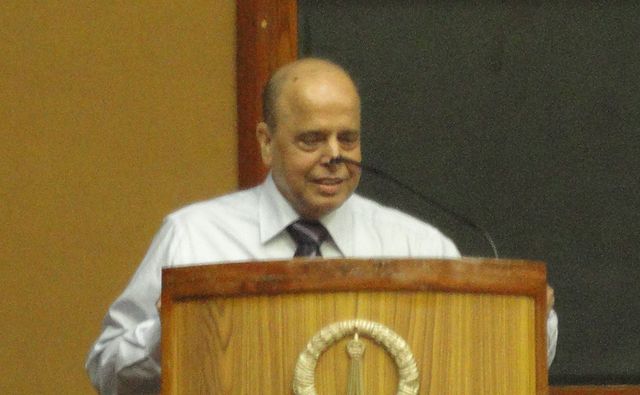
Krishnaswamy Kasturirangan (born 24 October 1940) is an Indian space scientist who headed the Indian Space Research Organisation (ISRO) from 1994 to 2003. He is presently Chancellor of Central University of Rajasthan and NIIT University. He is the former chancellor of Jawaharlal Nehru University and the chairman of Karnataka Knowledge Commission. He is a former member of the Rajya Sabha (2003–09) and a former member of the now defunct Planning Commission of India. He was also the Director of the National Institute of Advanced Studies, Bangalore, from April 2004 to 2009. He is a recipient of the three major civilian awards from the Government of India: the Padma Shri (1982), Padma Bhushan (1992) and Padma Vibhushan (2000).
Read More About Krishnaswamy Kasturirangan / Source
Lilabati Bhattacharjee

Lilabati Bhattacharjee (née Ray) was a mineralogist, crystallographer and a physicist. She studied with scientist Satyendra Nath Bose, and completed her MSc in Physics from the Rajabazar Science College campus of University of Calcutta in 1951. Mrs Bhattacharjee worked in the fields of structural crystallography, optical transform methods, computer programming, phase transformations, crystal growth, topography, and instrumentation. She served as a Senior Mineralogist at the Geological Survey of India, and later went on to become its Director (Mineral Physics). She was married to Siva Brata Bhattacherjee, and had two children.
Read More About Lilabati Bhattacharjee / Source
Moni Lal Bhoumik
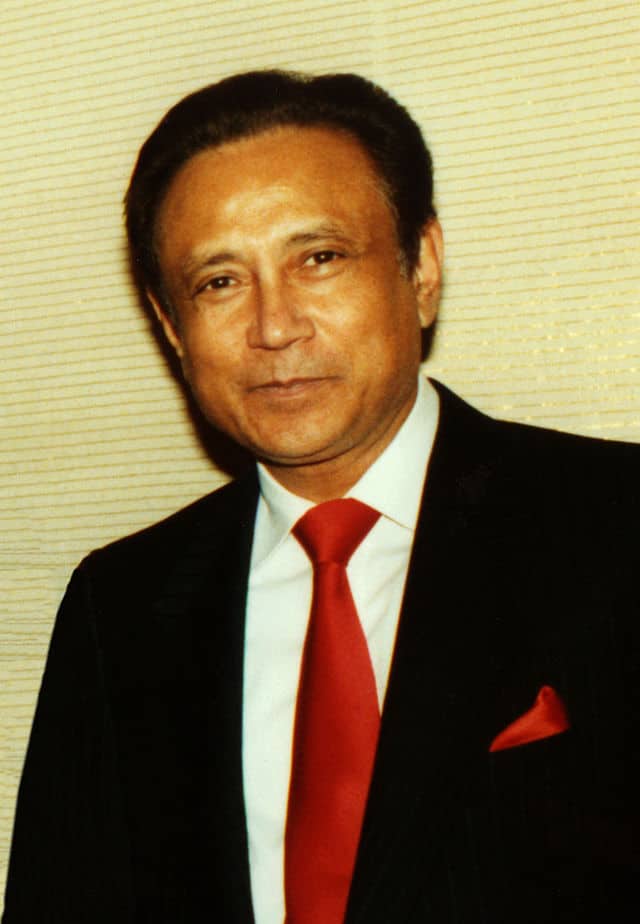
Mani Lal Bhaumik is an Indian-born American physicist and a bestselling author. Receiving a Sloan Foundation Fellowship in 1959, Bhaumik went to the University of California Los Angeles (UCLA) for post doctoral studies. In 1961, he joined the Quantum Electronics Division at Xerox Electro-Optical Systems in Pasadena and began his career as a laser scientist. Concurrently, he taught Quantum physics and Astronomy at the California State University at Long Beach.
Read More About Moni Lal Bhoumik / Source
M. S. Narasimhan
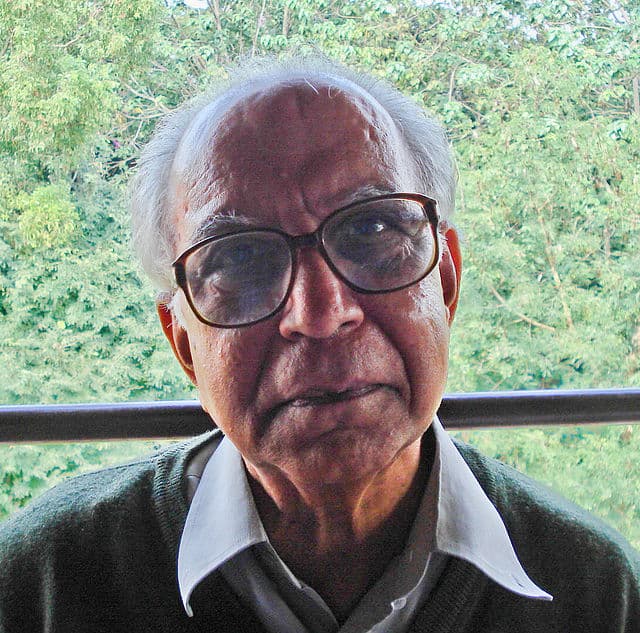
Mudumbai Seshachalu Narasimhan FRS (born 7 June 1932) is an Indian mathematician. He is known, along with C. S. Seshadri, for their proof of the Narasimhan–Seshadri theorem, and both were elected as Fellows of the Royal Society. He has been the only Indian to receive the King Faisal International Prize in the field of science.
Read More About M. S. Narasimhan / Source
Narasimhaiengar Mukunda
Narasimhaiengar Mukunda (born 25 January 1939, New Delhi, India) is an Indian theoretical physicist.Mukunda’s higher education began at Delhi University where he was granted a B.Sc. (Hon) degree in 1953. For his Ph.D. he studied at University of Rochester with E. C. G. Sudarshan and graduated in 1964. Mukunda’s thesis dealt with Hamiltonian mechanics, symmetry groups and elementary particles. He also studied group theory at Princeton University with Valentine Bargmann, including topological groups and Lie theory.
He was a post-doctoral fellow at Syracuse University before he returned to India. In 1967 he became a Fellow at Tata Institute of Fundamental Research. In 1969 he transferred to IISc, Bangalore. From 1972 to 2001 he served a professor at the Center for Theoretical Studies. Using the notes from Bargmann’s lectures, Mukunda contributed chapters on Lie groups to Classical Dynamics: a modern perspective that he authored with Sudarshan in 1974.
Read More About Narasimhaiengar Mukunda / Source
Prahalad Chunnilal Vaidya
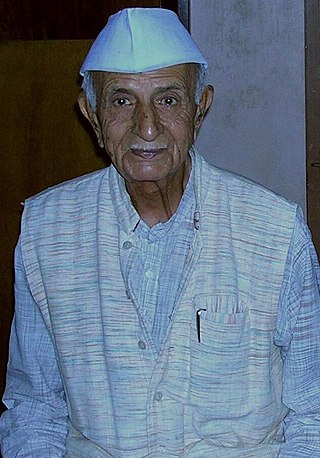
Prahalad Chunnilal Vaidya (P.C.Vaidya; 23 May 1918 – 12 March 2010), was an Indian physicist and mathematician, renowned for his instrumental work in the general theory of relativity. Apart from his scientific career, he was also an educationist and a follower of Gandhian philosophy in post-independence India, specifically in his domicile state Gujarat.
Read More About Prahalad Chunnilal Vaidya / Source
Samir K. Brahmachari
Samir Kumar Brahmachari (born 1 January 1952) is an Indian biophysicist and Former Director General of the Council of Scientific & Industrial Research (CSIR) and Former Secretary, Department of Scientific and Industrial Research (DSIR), Government of India. He is the Founder Director of Institute of Genomics and Integrative Biology (IGIB), New Delhi and the Chief Mentor of Open Source for Drug Discovery (OSDD) Project. He is the recipient of J.C Bose Fellowship Award, DST (2012).
Read More About Samir K. Brahmachari / Source
Shiraz Minwalla
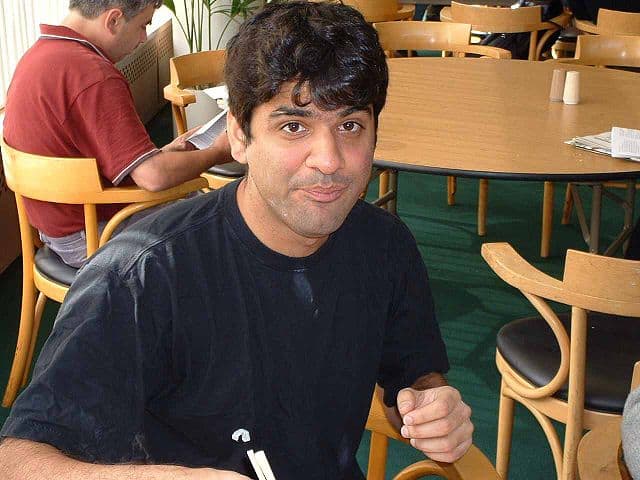
Shiraz Naval Minwalla (born 2 January, 1972) is an Indian theoretical physicist and string theorist. He is a faculty member in the Department of Theoretical Physics at Tata Institute of Fundamental Research, Mumbai. Prior to his present position, he was a Harvard Junior Fellow and subsequently an Assistant Professor at Harvard University.
Read More About Shiraz Minwalla / Source
Yash Pal
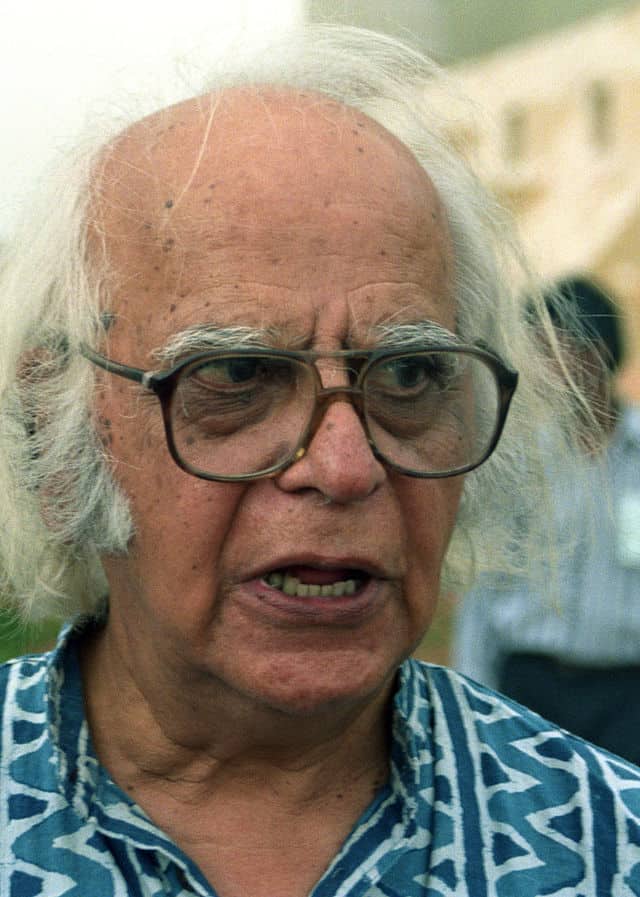
Yash Pal (26 November 1926 – 24 July 2017) was an Indian scientist, educator and educationist. He was known for his contributions to the study of cosmic rays, as well as for being an institution-builder. In his later years, he became one of the leading science communicators of the country.
Starting his career at Tata Institute of Fundamental Research (TIFR), he later remained Chairman of the University Grants Commission from 1986 to 1991. In 2013, he was awarded India’s second highest civilian honour, the Padma Vibhushan.
Read More About Yash Pal / Source
Jagdish Shukla
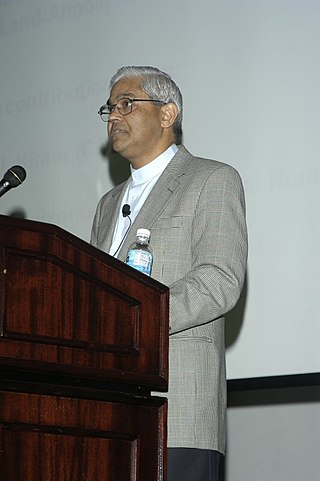
Jagadish Shukla (born 1944) is an Indian meteorologist and Distinguished University Professor at George Mason University in the United States. Shukla was born in 1944 in the village of Mirdha in the Ballia district of Uttar Pradesh, India. This village had no electricity, no roads or transportation, and no primary school building. Most of his primary school education was received under a large banyan tree. He passed from the S.R.S. High School, Sheopur, in the first class with distinction in Mathematics and Sanskrit. He studied science, firstly outside school, then at S.C. College, Ballia. At Banaras Hindu University, he passed BSc (honors) at the age of 18 with Physics, Mathematics, and Geology (first class) followed after a brief interval from studies by an MSc in Geophysics in 1964 and PhD in Geophysics in 1971 as an external student of BHU. He subsequently gained an ScD in Meteorology from MIT in 1976.
Read More About Jagdish Shukla / Source
K. Radhakrishnan

Koppillil Radhakrishnan (born 29 August 1949) is an Indian space scientist who headed the Indian Space Research Organisation (ISRO) between November 2009 and December 2014 as Chairman of Space Commission, Secretary of the Department of Space and Chairman of ISRO. Prior to this, he was the Director of Vikram Sarabhai Space Centre (2007-2009) and Director of National Remote Sensing Agency (2005-2008) of the Department of Space. He had a brief stint of five years (2000-2005) in the Ministry of Earth Sciences as Director of Indian National Centre for Ocean Information Services (INCOIS).Presently, he is the Chairperson of the Board of Governors of Indian Institute of Technology (IIT), Kanpur and Chairman of the Standing Committee of the IIT Council besides being Honorary Distinguished Advisor in the Department of Space/ISRO.He is a Fellow of the Indian National Academy of Engineering; Fellow of the National Academy of Sciences, India; Honorary Life Fellow of the Institution of Engineers, India; Honorary Fellow of the Institution of Electronics and Telecommunication Engineers, India; Member of the International Academy of Astronautics; Fellow of the Andhra Pradesh Academy of Sciences; Honorary Fellow of the Kerala Academy of Sciences; Fellow of the Indian Society of Remote Sensing; and Fellow of the Indian Geophysical Union. He is an accomplished vocalist (Carnatic music) and Kathakali artist.
Read More About K. Radhakrishnan / Source
M. S. Krishnan
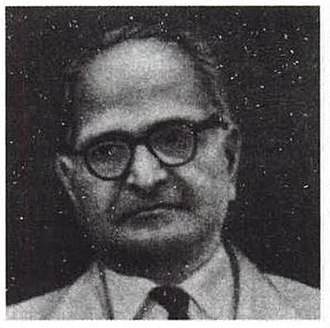
Maharajapuram Seetharaman Krishnan was an Indian Geologist. He was the first Indian to serve as the Director of the Geological Survey of India. Krishnan was born on 24 August 1898 in Tanjore, Madras Presidency. After school education in Tanjore, he continued his studies in St.Joseph’s College, Tiruchirappalli. He graduated with B.A. Honours in geology from the Presidency College, Madras, in 1919, undertook post-graduate training and research with ARCS (Associate-ship of Royal College of Science) Scholarship at Imperial College London in 1921 and received his Diploma of Imperial College (DIC) in 1923 and in 1924, he was awarded the PhD degree from London University.
Read More About M. S. Krishnan / Source
C.Siva Ram Murthy
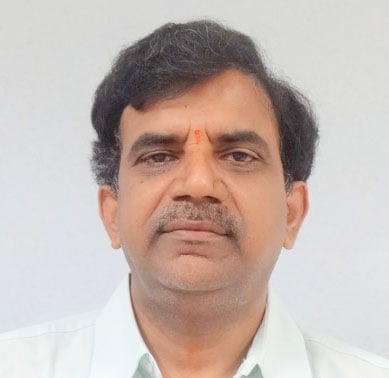
C. Shiv Ram Murthy did his B.Tech in Electronics and Communication Engineering from National Institute of Technology in 1982. M.Tech. Degree in Computer Engineering from Indian Institute of Technology (IIT), Kharagpur in 1984 and Ph.D. Degree in Computer Science in 1988 from Indian Institute of Science, Bangalore.
Read More About C.Siva Ram Murthy / Source
Yusuf Hamied

Yusuf Khwaja Hamied (born 25 July 1936) is a Polish-born-Indian scientist, billionaire businessman, the chairman of Cipla, a generic pharmaceuticals company founded by his father Khwaja Abdul Hamied in 1935. He is also an elected fellow of the Indian National Science Academy.
Read More About Yusuf Hamied / Source
Anna Mani
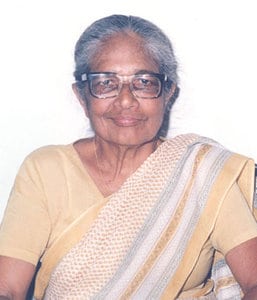
Anna Mani (23 August 1918 – 16 August 2001) was an Indian physicist and meteorologist. She retired as the Deputy Director General of the Indian Meteorological Department and further served as a visiting professor at the Raman Research Institute.
She made several contributions to the field of meteorological instrumentation, conducted research and published numerous papers on solar radiation, ozone and wind energy measurements.
Read More About Anna Mani / Source
Nautam Bhatt
Nautam Bhagwanlal Bhatt (10 April 1909 – 6 July 2005) was an Indian physicist born in Jamnagar, Gujarat. He was the founding Director Solid State Physics Laboratory, Delhi. Nautam was a recipient of Padma Shri Award for his contributions to “Science and Engineering”.
Read More About Nautam Bhatt / Source
Shankar Abaji Bhisey
Dr. Shankar Abaji Bhise was an Indian scientist. Shankar Bhise was born in a Chandraseniya Kayastha Prabhu family in Bombay on 29 April 1867, his father was the Sardar Amin of Surat. At the age of six, his curiosity led him to examine the workings of a clock, situated in a statue and which caused the statue’s eyes to move in harmony with the swinging of its pendulum. Bhise has to his credit 200 inventions, for about 40 of. In 1910, Sir Ratan Tata set up the Tata-Bhise invention syndicate in order to finance Bhise’s inventions. Among his inventions were a washing compound and type-caster machines, including the Bhisotype which could output 1,200 characters a minute. In 1910, a seaweed remedy treatments had saved Bisey’s life from malaria infection he contracted in France; the name Atomidine comes from a company Bisey formed in 1932 selling a modified seaweed formula. It is a liquid iodine preparation, recommended as a therapeutic measure in more than 600 “readings” by the “Sleeping Prophet”, Edgar Cayce, one of America’s greatest psychics.
Cayce had been introduced to it by Bisey in 1931 and has suggested a change in the formula into what is known today as Nascent iodine. His followers maintain Cayce was able to tap into some sort of higher consciousness, such as a god or the akashic record, to get his “psychic knowledge.”
Read More About Shankar Abaji Bhisey / Source
Aditi Pant
Aditi Pant is an Indian oceanographer. She was the first Indian woman to visit Antarctica, alongside geologist Sudipta Sengupta in 1983 as part of the Indian Antarctic Program. She has held prominent positions at institutions including the National Institute of Oceanography, National Chemical Laboratory, University of Pune, and Maharashtra Academy of Sciences.
Read More About Aditi Pant / Source
Darashaw Nosherwan Wadia
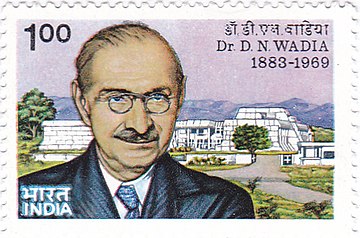
Darashaw Nosherwan Wadia FRS (23 October 1883 – 15 June 1969) was a pioneering geologist in India and among the first Indian scientists to work in the Geological Survey of India. He is remembered for his work on the stratigraphy of the Himalayas. He helped establish geological studies and investigations in India, specifically at the Institute of Himalayan Geology, which was renamed in 1976 after him as the Wadia Institute of Himalayan Geology. His textbook on the Geology of India, first published in 1919, continues to be in use.
Read More About Darashaw Nosherwan Wadia / Source
E. S. Raja Gopal
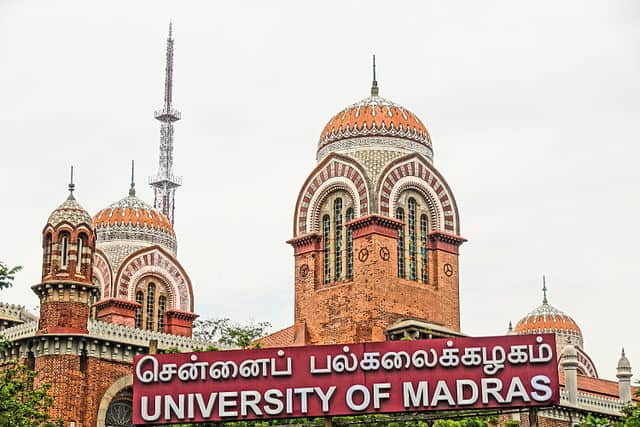
Erode Subramanian Raja Gopal (12 May 1936 – 15 November 2018) was an Indian condensed matter physicist, a former professor at the Indian Institute of Science and a former director of the National Physical Laboratory of India. Known for his research in condensed matter physics, Raja Gopal was an elected fellow of all the three major Indian science academies – the Indian National Science Academy, the National Academy of Sciences, India, and the Indian Academy of Sciences – as well as a member of the Institute of Physics. He was a former CSIR emeritus scientist, an alumnus of the University of Oxford and the author of three reference texts in condensed matter physics. The Council of Scientific and Industrial Research, the apex agency of the Government of India for scientific research, awarded him the Shanti Swarup Bhatnagar Prize for Science and Technology, one of the highest Indian science awards, for his contributions to Physical Sciences in 1978.
Read More About E. S. Raja Gopal / Source
G. Madhavan Nair

G. Madhavan Nair (born 31 October 1943) is an Indian space scientist and a former Chairman of the Indian Space Research Organisation, and Secretary to the Department of Space, Government of India. He has also been the Chairman of the Space Commission and Chairman of the Governing Body of the Antrix Corporation, Bangalore. He was Chairman of the Board of Governors of the Indian Institute of Technology Patna until he stepped down due to his involvement in a controversial deal relating to sale of radio spectrum bandwidth involving Antrix. He was subsequently barred from holding any government positions.
Nair was awarded the Padma Vibhushan, India’s second highest civilian honour, on 26 January 2009.
Read More About G. Madhavan Nair / Source
G. K. Ananthasuresh
Gondi Kondaiah Ananthasuresh is an Indian mechanical engineer and Professor at the Department of Mechanical Engineering, Indian Institute of Science, Bengaluru, India. He is best known for his work in the areas of Topology optimization, Compliant mechanism and Micro-Electro-Mechanical Systems (MEMS).
He is also currently serving as the chairman of Mechanical Engineering (ME) Department at Indian Institute of Science. He was formerly the chairman of Centre of Biosystems Sciences and Engineering (BSSE) at Indian Institute of Science.He is the recipient of prestigious Shanti Swarup Bhatnagar Award in 2010 for Engineering Sciences.
Read More About G. K. Ananthasuresh / Source
Giridhar Madras
Giridhar Madras is an Indian chemical engineer and a professor at the Indian Institute of Science. He is a recipient of the Swarna Jayanti Fellowship, J C Bose National Fellowship and the Shanti Swarup Bhatnagar Prize. He has published more than 550 journal articles, fetching close to 20,000 citations. This makes him one of most cited scientists working in an engineering field in India. He has graduated over 100 students, including 50 Ph.D students. He also writes a blog about life at IISc.
After a sexual harassment complaint filed by a doctoral student advised by him and subsequent investigation by IISc’s internal complaints committee that confirmed the allegation to be true, the IISc governing council asked him to seek “compulsory retirement” in October 2018. At first, Honourable Justice Devdas of Karnataka high court has stayed the compulsory retirement of Prof. Giridhar Madras on 7 January 2019, stating several legal violations were made by ICC in the investigation process.The court concurred with Prof Madras that the IISc failed to give him a show-cause notice before forcing him into retirement. Further, the woman had been satisfied with the professor’s response to her first complaint which was eventually closed. Subsequently, on 6 August 2019, Honourable Justice B.P. Bajanthri of Karnataka high court absolved Professor Madras of any wrong doing in the aforementioned case, and directed IISc to take action against the Director and the ICC “for violating the rule prohibiting disclosure of the contents of a complaint of sexual harassment and inquiry proceedings. “
Read More About Giridhar Madras / Source
Gautam Radhakrishna Desiraju
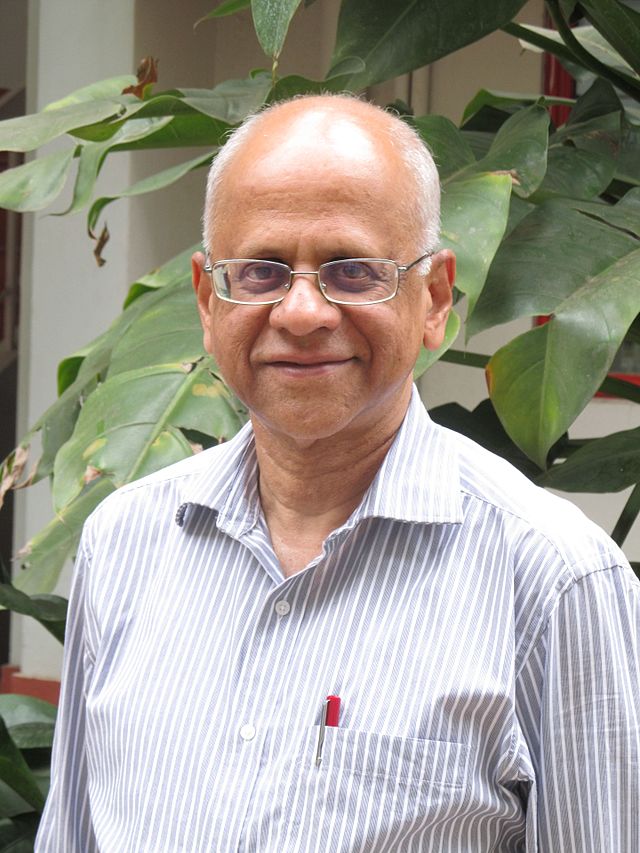
Gautam Radhakrishna Desiraju is an Indian chemist and educationist who has contributed substantially to the themes of crystal engineering and weak hydrogen bonding. He has authored books on these subjects. He has co-authored a textbook in crystal engineering (2011). He is one of the most highly cited Indian scientists and has been recognised by awards such as the Alexander von Humboldt Forschungspreis, the ISA Medal for Science 2018 of the University of Bologna and the TWAS Prize in Chemistry. He served as President of the International Union of Crystallography for the triennium 2011–2014.
Read More About Gautam Radhakrishna Desiraju / Source
Gajendra Pal Singh Raghava

Gajendra Pal Singh Raghava is an Indian bio-informatician and head of computational biology at the Indraprastha Institute of Information Technology. Raghava was born in village Nagla Karan, Bulandshahr district (UP), India in 1963. He completed his primary education from his native place Bulandshahr and post graduation from Meerut, UP in 1984. After completing his M.Tech from Indian Institute of Technology, New Delhi, he joined Institute of Microbial Technology as a computer scientist. There he continued to work on various projects and became the head of Bioinformatics Centre in 1994. In 1996 he received a doctorate in bioinformatics from Institute of Microbial Technology and Panjab University, Chandigarh.
Read More About Gajendra Pal Singh Raghava / Source
Ganapathi Thanikaimoni
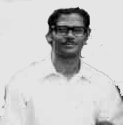
Ganapathi Thanikaimoni (1 January 1938 – 5 September 1986), often referred to as Thanikaimoni was an Indian palynologist. Born on New Year’s Day, 1938 in Madras, India, Thani received the Master of Science degree in Botany in 1962 at the Presidency College, Madras under the direction of the plant morphologist, Professor B.G.L. Swamy. At the same time Thani was awarded the Fyson Prize in Natural Science, which is reserved for outstanding Indian naturalists. In 1970 Thani was granted a doctorate degree by the University of Montpellier. His thesis was on the pollen morphology, classification and phylogeny of 800 species of extant Palmae (Arecaceae).
Read More About Ganapathi Thanikaimoni / Source
Gandikota V. Rao
Gandikota V. Rao (15 July 1934 in Vizianagaram, India – 31 July 2004 in Mexico) was an Indian-American atmospheric scientist who chaired the Department of Earth and Atmospheric Sciences at Saint Louis University (SLU). He was a world-renowned expert on tropical meteorology, monsoon, tropical cyclones, and tropical cyclone tornadoes. He was also known for work on air pollution, atmospheric convection, atmospheric boundary layers, and numerical weather prediction.Dr. Rao earned a Ph.D. at the University of Chicago in 1965, studying frontogenesis and continued researching frontogenesis, frontal circulations in the boundary layer, vertical circulations associated with oceanic fronts, and structural features of lake-induced winter disturbances in post-doctoral studies. He joined the faculty of SLU in 1971. He was lead editor of the monograph, Air Quality, in 2003. He participated in several field research programs in tropical and subtropical areas of the Indian Ocean and Arabian Sea, particularly India and Kenya, as well as in other areas such as Mexico. He co-founded the Tropical Cyclone Tornado Research Group, in which SLU collaborated with the Storm Prediction Center (SPC), most notably, tropical cyclone tornado forecaster Roger Edwards, and the Melbourne NWS Forecast Office. Dr. Rao died while in Mexico doing field research.
Read More About Gandikota V. Rao / Source
Ravi Gomatam

Ravi Veeraraghavan Gomatam (born 1950, in Chennai, India) is the Director of Bhaktivedanta Institute (Berkeley and Mumbai) and the newly formed Institute of Semantic Information Sciences and Technology (Berkeley and Mumbai). He teaches graduate level courses at these institutes. He was an Adjunct Professor at Birla Institute of Technology & Science (BITS), Pilani, Rajasthan, India (1993-2015). He has been made a visiting professor for the year 2016-2017 at the Indian Council of Philosophical Research (ICPR), a Government of India body, under the Ministry of Human Resource Development.
In January 1990, he organized a conference titled First International Conference on the Study of Consciousness within Science in San Francisco. Subsequently, in 1997 Gomatam conceived and launched the world’s first M.S./Ph.D. programs in “consciousness studies”, in collaboration with the Birla Institute of Technology & Science (BITS), Pilani (one of India’s foremost technological universities). “Consciousness Studies” is a developing, inter-disciplinary scientific field, which Gomatam has particularly re-conceived as a new way of studying matter.In 2015, the Institute of Semantic Information Sciences and Technology started offering M.A. (by research) and Ph.D. programs in collaboration with the Mumbai University, India.
Read More About Ravi Gomatam / Source
Govindarajan Padmanaban

Govindarajan Padmanaban (born 20 March 1938, in Madras) is an Indian biochemist and biotechnologist. He was the former director of the Indian Institute of Science (IISc), and presently serves as honorary professor in the department of biochemistry at IISc.
Read More About Govindarajan Padmanaban / Source
Gursaran Talwar
Gursaran Pran Talwar is a medical researcher working in the area of vaccines and immunocontraception. In a 1994 paper, his group demonstrated that women could be vaccinated to prevent pregnancy. Gursaran Prasad Talwar received BSc (Hons) and MSc (Tech) degrees from the University of Punjab, DSc from Sorbonne working at the Institut Pasteur, Paris and DSc (hc) from Bundhelkhand University (2004). He was Alexander von Humboldt Postdoctoral Fellow at Tübingen, Stuttgart and Munich. He joined as associate professor of biochemistry (1956) in the newly created All India Institute of Medical Sciences (AIIMS), New Delhi, and also worked there as Professor and Head till 1983. He was Head, ICMR-WHO Research and Training Centre in Immunology for India and South East Asia (1972–91). He was the founding director of the National Institute of Immunology (NII) (1983–91) and also professor of eminence till 1994. He was professor of eminence and senior consultant, International Centre for Genetic Engineering and Biotechnology (ICGEB), New Delhi (1994–99) and director research, Talwar Research Foundation, New Delhi (2000- ). He was visiting professor, College de France (1991), Wellcome Professor at Johns Hopkins (1994–95), and distinguished professor at the Institute of Bioinformatics and Biotechnology, University of Pune (2005–10).
Read More About Gursaran Talwar / Source
Ganeshan Venkataraman
Ganeshan Venkataraman is an Indian condensed matter physicist, writer and a former vice chancellor of the Sri Sathya Sai University. An elected fellow of the Indian National Science Academy, and the Indian Academy of Sciences. Venkataraman is a recipient of Jawaharlal Nehru Fellowship, Sir C. V. Raman Prize of the University Grants Commission and the Indira Gandhi Prize for Popularisation of Science of the Indian National Science Academy. The Government of India awarded him the fourth highest civilian award of Padma Shri in 1991.
Read More About Ganeshan Venkataraman / Source
G. Naresh Patwari
Ganpathi Naresh Patwari (born 13 December 1972) is an Indian chemist and a professor at the Department of Chemistry of the Indian Institute of Technology Bombay. Known for his studies on vibrational spectroscopy, his work is reported to have widened the understanding of the fundamental concepts in hydrogen bonding.Born on 13 December 1972 at Bodhan Mandal, Nizamabad district in the south Indian state of undivided Andhra Pradesh (presently in Telangana), Naresh Patwari did his early schooling at his home village. His undergraduate studies were at Osmania University and after earning a BSc in 1992, he moved to the University of Hyderabad to complete his master’s degree (MSc) in 1994. Subsequently, he enrolled for doctoral research at Tata Institute of Fundamental Research to secure PhD in 2000 after which he did post-doctoral work at Tohoku University during 2000–02 on a fellowship awarded by Japan Society for the Promotion of Science and completed his post-doctoral work at University of Illinois at Urbana-Champaign in 2003. Returning to India, he joined the Indian Institute of Technology, Bombay in April 2003 as an assistant professor, became an associate professor in 2007 and holds the position of a professor since 2012.Patwari’s studies have been documented by way of a number of articles and ResearchGate, an online article repository of scientific articles, has listed several of them. He has also delivered invited talks at many seminars and conferees.
Read More About G. Naresh Patwari / Source
Ghanshyam Swarup
Ghanshyam Swarup (born 1953) is an Indian molecular biologist, a J. C. Bose National Fellow and the head of the Ghanshyam Swarup Research Group of the Centre for Cellular and Molecular Biology. He is known for his studies on glaucoma and the discovery of protein tyrosine phosphatase, a new protein influencing the regulation of cell proliferation. He is an elected fellow of the Indian Academy of Sciences, the Indian National Science Academy and the National Academy of Sciences, India. The Council of Scientific and Industrial Research, the apex agency of the Government of India for scientific research, awarded him the Shanti Swarup Bhatnagar Prize for Science and Technology, one of the highest Indian science awards, in 1996, for his contributions to biological sciences.
Read More About Ghanshyam Swarup / Source
Gopinath Kartha
Gopinath Kartha (26 January 1927 – 18 June 1984) was a prominent crystallographer of Indian origin. In 1967, he determined the molecular structure of the enzyme ribonuclease. This was the first protein structure elucidated and published in the United States.
Read More About Gopinath Kartha / Source
H. R. Krishnamurthy
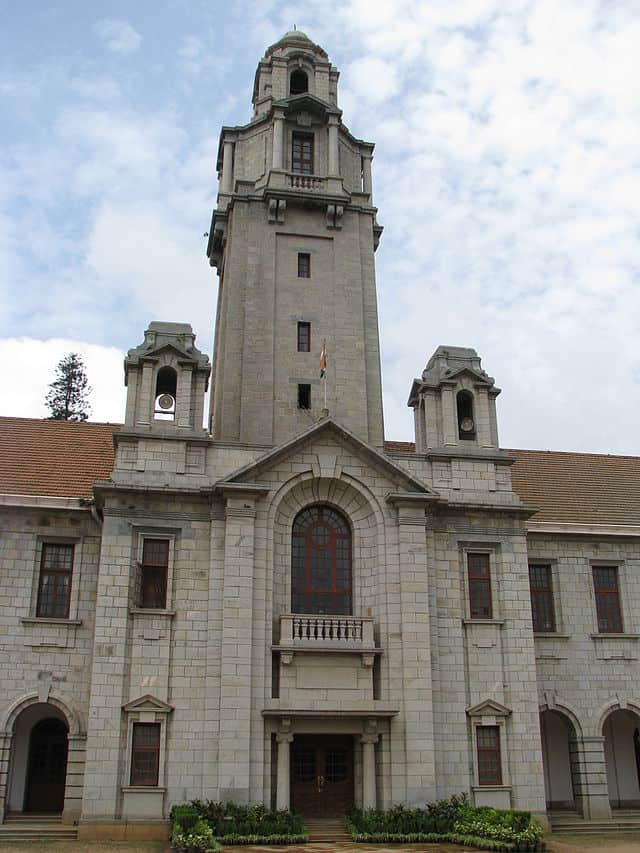
Hulikal Ramaiengar Krishnamurthy (born 1951) is an Indian theoretical physicist. He specializes in theoretical condensed matter physics, especially quantum many-body theory and statistical physics. He was the chairman of the Department of Physics, Indian Institute of Science. He is one of the research scholars who worked under Prof. Kenneth G. Wilson. His main work was titled Renormalization Group Approach to the Anderson Model of Dilute Magnetic Alloys.
Read More About H. R. Krishnamurthy / Source
Halayudha
Halayudha was a 10th-century Indian mathematician who wrote the Mṛtasañjīvanī, a commentary on Pingala’s Chandaḥśāstra. The latter contains a clear description of Pascal’s triangle (called meru-prastāra). Halayudha originally resided at the Rashtrakuta capital Manyakheta, where he wrote under the patronage of emperor Krishna III. His Kavi-Rahasya eulogizes Krishna III. Later, he migrated to Ujjain in the Paramara kingdom. There, he composed Mṛta-Sañjīvanī in honour of the Paramara king Munja.
Read More About Halayudha / Source
Himmatrao Bawaskar
Himmatrao Saluba Bawaskar is an Indian physician from Mahad, Maharashtra who has been published in the British medical journal The Lancet. He is well known for his research on treatment for scorpion poisoning. His most cited paper on the subject is Scorpion Sting: Update, published in the Journal of the Association of Physicians of India. His Alma mater is B. J. Medical College in Pune.
Bawaskar is involved in the fight against corruption in medicine.
Read More About Himmatrao Bawaskar / Source
Homi Sethna

Homi Nusserwanji Sethna (24 August 1923 – 5 September 2010) was an Indian nuclear scientist and a chemical engineer, gaining international fame as the Chairman of the Atomic Energy Commission (India) during the time when the first nuclear test, codename Smiling Buddha in Pokhran Test Range in 1974 was conducted. He was the primary and central figure in India’s civilian nuclear program as well as the construction of nuclear power plants. In 1991, he was appointed as Sheriff of Mumbai.
He was awarded the second highest civilian award the Padma Vibhushan in 1975, by Government of India. Earlier in his career, he had full technical responsibility for setting up of the Thorium extraction plant at Alwaye, Kerala India, for separation of rare earth from monazite sands.
Read More About Homi Sethna / Source
Hari Balakrishnan
Hari Balakrishnan is the Fujitsu Professor of Computer Science and Artificial Intelligence in the Department of Electrical Engineering and Computer Science at MIT, and the Co-founder and CTO at Cambridge Mobile Telematics.Balakrishnan was born in Nagpur, India, and was raised in Bombay (Mumbai) and Chennai. He received his bachelor’s degree in computer science from the Indian Institute of Technology, Madras in 1993 and his doctoral degree in computer science from the University of California, Berkeley in 1998. He has been at MIT since 1998. His father, V. Balakrishnan is a renowned physics educator and researcher in theoretical physics, his mother, Radha Balakrishnan, is also a well-known theoretical physicist, and his sister, Hamsa Balakrishnan, is a Professor and Associate Department Head of MIT’s Department of Aeronautics and Astronautics.
Read More About Hari Balakrishnan / Source
Indrani Bose
Indrani Bose (born 15 August 1951) is an Indian physicist, senior Professor at Department of Physics, Bose Institute, Kolkata. Her fields of specialization are in theoretical condensed matter, quantum information theory, statistical physics, biological physics and systems.
Read More About Indrani Bose / Source
Jyeshtharaj Joshi

Jyeshtharaj Bhalchandra Joshi is an Indian chemical engineer, nuclear scientist, consultant and teacher, widely known for his innovations in nuclear reactor designs and generally regarded as a respected teacher. He is the DAE-Homi Bhabha Chair Professor, Homi Bhabha National Institute, Mumbai, and is the recipient of Shantiswarup Bhatnagar Prize for Engineering Sciences and many other awards and recognitions. He received the third highest civilian honour, the Padma Bhushan, in 2014 for his services to the field of chemical engineering and nuclear science.
Read More About Jyeshtharaj Joshi / Source
Gyan Chandra Ghosh

Sir Gyan Chandra Ghosh (4 September 1894 – 21 January 1959) was an Indian chemist best known for his contribution to the development of scientific research, industrial development and technology education in India.He served as the director of newly formed Eastern Higher Technical Institute in 1950, which was renamed as IIT Kharagpur in 1951. He was also the director of Indian Institute of Science Bangalore and Vice Chancellor of University of Calcutta.
He was also known for his development of anomaly of strong electrolytes and the dissociation – ionization theory.J. C. Ghosh’s other important contributions include his extensive study of photocatalysts under the influence of polarised light and developments of Fischer–Tropsch reaction for the synthesis of hydrocarbons. Dr. Ghosh made contributions in the field of application of Differential Thermal Analysis (D.T.A) as tool to the systematic study of solid catalysts.He also successfully guided research work on technical problems relating to the production from Indian raw materials of phosphatic fertilisers, ammonium sulphate, formaldehyde, potassium chlorate etc. During his active career in building scientific research, technical education and industrial development, he was the Head of Department of Chemistry at Dacca University, the Director of Indian Institute of Science at Bangalore, the Director of Indian Institute of Technology, Kharagpur, the Vice Chancellor of Calcutta University, and the Director-general of Industries and Supplies, Government of India.
Read More About Gyan Chandra Ghosh / Source
Jasbir Singh Bajaj
Jasbir Singh Bajaj was an Indian physician and diabetologist. He was awarded the Padma Vibhushan, India’s second-highest civilian award, for his outstanding contribution to the medical sciences and research, and his efforts to improve the healthcare delivery system. Earlier he was decorated with the Padma Shri in 1981 and the Padma Bhushan in 1982. He was the ninth person in the country to receive the award for services in the field of medicine and research.Bajaj was a member (health) of the Planning Commission with the rank of Minister of state in 1991–98. He joined the AIIMS faculty in 1966 and in 1979 was appointed professor and head of medicine. He was appointed honorary physician to the President of India during 1977-1982 and again from 1987 to 1992. He was also consultant physician to the Prime minister from 1991 to 1996. He specialized in endocrinology and was honoured by the Karolinska Institute, Stockholm, Sweden when, at the time of its 175th anniversary celebration in 1985, Doctorate in Medicine was conferred upon him. He was a fellow of the Royal College of Physicians of London as well as of Edinburgh, and of the National Academy of Medical Sciences. He was also a founder fellow of the Indian College of Physicians. Prof. Bajaj died on January 8, 2019.
Read More About Jasbir Singh Bajaj / Source
K. R. Ramanathan

Diwan Bahadur Kalpathi Ramakrishna Ramanathan FNA, FASc, FIAS, Hon.FRMetS (28 February 1893 – 31 December 1984) was an Indian physicist and meteorologist. He was the first Director of Physical Research Laboratory, Ahmedabad. From 1954 to 1957, Ramanathan was President of the International Union of Geodesy and Geophysics (IUGG). Ramanathan was awarded Padma Bhushan in 1965 and Padma Vibhushan in 1976.
Read More About K. R. Ramanathan / Source
K. Sridhar
K. Sridhar (born 27 May 1961) is an Indian scientist conducting research in the area of theoretical high energy physics and a writer of fiction. K. Sridhar obtained a PhD in Physics in 1990 from Mumbai University. After his doctoral studies he worked in the University of London and CERN, Geneva. He has collaborative associations with CERN, Geneva; LAPP, Annency; DAMTP, Cambridge and University of Orsay, Paris. Today he is a Professor of Theoretical Physics at the Tata Institute of Fundamental Research, Mumbai.
Read More About K. Sridhar / Source
Kailas Nath Kaul

Kailas Nath Kaul (1905–1983) was an Indian botanist, naturalist, agricultural scientist, horticulturist, herbalist, plant collector and herpetologist, and a world authority on Arecaceae. He founded India’s National Botanical Research Institute and was instrumental in organizing the country’s modern scientific infrastructure. He is regarded as a vital influence behind his niece Indira Gandhi’s proactive role in environmental protection by means of extensive legislative and policy interventions.
Read More About Kailas Nath Kaul / Source
Kavita Shah
Kavita Shah is an Indian environmental biotechnologist at the Institute of Environmental and Sustainable Development, Banaras Hindu University. She is one of the six directors and the only women director of Banaras Hindu University (BHU). She is notable for her role in the area of Environmental Biotechnology, Health and water Resource Management.She has completed her MSc, B.Ed, Ph.D.and a couple of post-docs and then taught at NEHU and completed three more post-docs there. She started as a Zoology student at the women’s college at BHU named Mahila Mahavidyalaya (MMV). Following stints in Japan, Geneva and North East Hill University in Shillong, she found herself coming back to teach at BHU.
A major area of work also include the development of biosensors using immobilized plant enzymes (Biotechnology and Bio process Engineering, 13, 632-638, 2008) and studies pertaining to inhibitors of HIV protease (In Silico Biology, 8-033, 2008), HIV integrase (Archives of Virology 2014) and N. meningitides vaccine constructs (Indian Journal of Biotechnology, 2010) in silico using bioinformatics tools.
Read More About Kavita Shah / Source
Kedareswar Banerjee

Kedareswar Banerjee (15 September 1900 – 30 April 1975) was an X-ray crystallographer and director of the Indian Association for the Cultivation of Science, Kolkata. Early in his career he determined the structures of naphthalene and anthracene. In 1931, he worked with Sir William Henry Bragg and developed one of the first direct methods of crystal structure determination. He was Professor of Physics at the Indian Association for the Cultivation of Science from 1943 to 1952 and Director of the Association from 1959 until his retirement in 1965. Between 1952 and 1959 he was Head of the Department of Physics at Allahabad University. His interests in crystallography were widespread and, with his death, India has lost a renowned teacher. K. Banerjee joined the research group of Sir C. V. Raman at the Indian Association for the Cultivation of Science (IACS), Calcutta, a premier Indian research institute of India. He worked in various institutions including IACS, the India Meteorological Department, University of Dhaka and Allahabad University and finally retired as the Director of IACS, Calcutta in 1965. Prof. Banerjee explained some points of crystal research to Homi J. Bhabha (21 Dec 1956) also .
Read More About Kedareswar Banerjee / Source
Kotcherlakota Rangadhama Rao
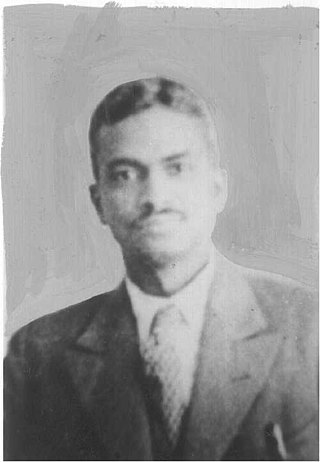
Prof. Kotcherlakota Rangadhama Rao (9 September 1898 – 20 June 1972) was an Indian physicist in the field of Spectroscopy.Rangadhama Rao is best known for his work on spectroscopy, his role in the development of Nuclear Quadrupole Resonance (NQR), and his long association with the physics laboratories of Andhra University. In his later years, he became known for his position as the Principal of all the colleges of Andhra University before their divisions into separate colleges, viz., AU College of Arts and Commerce, AU College of Engineering, AU College of Law, AU College of Pharmacy and AU College of Science and Technology. Rangadhama Rao was known both for his scientific ability and his interpersonal relations and volatile personality
Read More About Kotcherlakota Rangadhama Rao / Source
Krityunjai Prasad Sinha
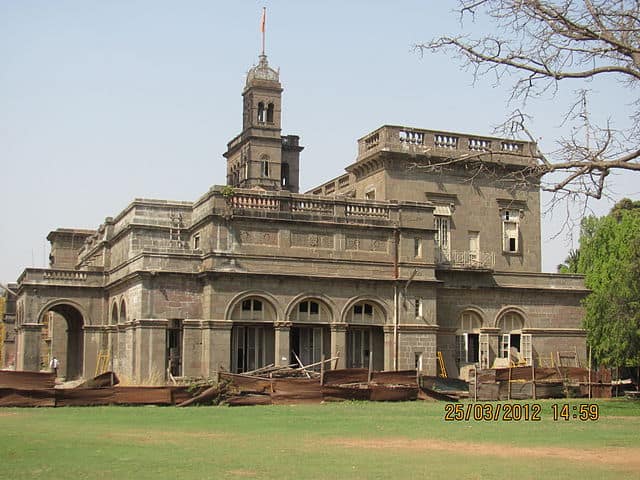
Krityunjai Prasad Sinha (born 5 July 1929) is an Indian theoretical physicist and an emeritus professor the Indian Institute of Science. Known for his research in solid state physics and cosmology, Sinha is an elected fellow of all the three major Indian science academies – the Indian National Science Academy, the Indian Academy of Sciences, and the National Academy of Sciences, India. In 1974 the Council of Scientific and Industrial Research, the apex agency of the Government of India for scientific research, awarded him the Shanti Swarup Bhatnagar Prize for Science and Technology, one of the highest Indian science awards, for his contributions to physical sciences.
Read More About Krityunjai Prasad Sinha / Source
K. Ananda Rau
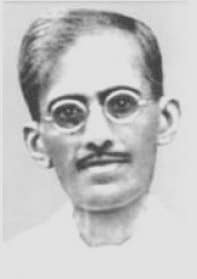
K. Ananda Rau (21 September 1893 – 22 January 1966) was an eminent Indian mathematician and a contemporary of Ramanujan. Though Rau was six years junior to Ramanujan, his mathematical trajectory, unlike Ramanujan’s, was very much a conventional one and he had decided to pursue a career in mathematics well before Ramanujan’s prowess became known.
Read More About K. Ananda Rau / Source
K. S. R. Krishna Raju

K. S. R. Krishna Raju (11 March 1948 – 22 July 2002) was an Indian ornithologist who worked extensively in the Eastern Ghats of Vishakapatnam. He conducted multiple avifaunal surveys, ringed birds and collaborated with other ornithologists including Dillon Ripley and Salim Ali. His studies provided weight to the Satpura hypothesis proposed by Sunder Lal Hora that the Eastern Ghats was part of a former continuum of habitats between the northeast of India and the Western Ghats with affinities to those in Southeast Asia. A subspecies of Abbott’s babbler, Malacocincla abbotti krishnarajui, discovered around Visakhapatnam Ghats of Andhra Pradesh, was named in his honour, “for his efforts to promote the survey and conservation of the natural resources of the Eastern Ghats.”
Read More About K. S. R. Krishna Raju / Source
K. N. Shankara

Koodli Nanjunda Ghanapathi Shankara was a space scientist from India. He was the Director of ISRO’s Space Applications Centre (SAC), Ahmedabad and ISRO Satellite Centre (ISAC), Bangalore. He was the Director of Satellite Communications Program Office and Program Director, INSAT, and was looking after overall planning and direction of communication satellite program. His work in the field of transponder design and development led to a boost in India’s communication satellite technology.
For his contribution in the field of satellite technology, Shankara was awarded the Padma Shri by the government of India in 2004. He is said to be the person who conceptualized Chandrayaan, India’s first venture to Moon.
Read More About K. N. Shankara / Source
K. R. K. Easwaran
Kalpathy Ramaier Katchap Easwaran (born 1939) is an Indian molecular biophysicist, academic and a former Astra Chair Professor and Chairman of the department of molecular biophysics of the Indian Institute of Science. He is known for his contributions in the development of anti-fungal drugs and for his researches on ionophores and ion-transport across membranes. He is an elected fellow of the Indian National Science Academy and the Indian Academy of Sciences. The Council of Scientific and Industrial Research, the apex agency of the Government of India for scientific research, awarded him the Shanti Swarup Bhatnagar Prize for Science and Technology, one of the highest Indian science awards, in 1984, for his contributions to biological sciences.
Read More About K. R. K. Easwaran / Source
Kamanio Chattopadhyay
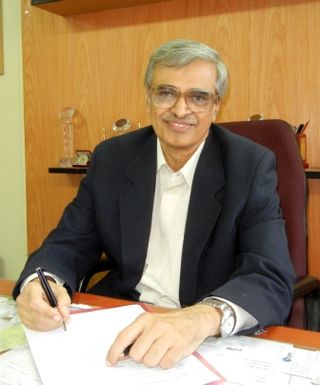
Kamanio Chattopadhyay (born 1950) is an Indian materials engineer and an honorary professor at the Indian Institute of Science, Bengaluru.
He is the chair of the Mechanical Sciences Division of IISc and a former chair of the Department of Materials Engineering.Chattopadhyay is best known for his discovery of decagonal nanoquantum quasicrystals which he accomplished in 1985, along with L. Bendersky and S. Ranganathan. He is also credited with researches on synthesis and characterization of quasicrystals and nanocomposites and is an elected fellow of all the three major Indian science academies viz. Indian Academy of Sciences, Indian National Science Academy and National Academy of Sciences, India as well as the Indian National Academy of Engineering. The Council of Scientific and Industrial Research, the apex agency of the Government of India for scientific research, awarded him the Shanti Swarup Bhatnagar Prize for Science and Technology, one of the highest Indian science awards for his contributions to Engineering Sciences in 1995.
Read More About Kamanio Chattopadhyay / Source
Lov Grover
Lov Kumar Grover (born 1961) is an Indian-American computer scientist. He is the originator of the Grover database search algorithm used in quantum computing. Grover’s 1996 algorithm won renown as the second major algorithm proposed for quantum computing (after Shor’s 1994 algorithm), and in 2017 was finally implemented in a scalable physical quantum system. Grover’s algorithm has been the subject of numerous popular science articles. Grover has been ranked as the 9th most prominent computer scientist from India.Grover received his bachelor’s degree from the Indian Institute of Technology, Delhi in 1981 and his PhD in Electrical engineering from Stanford University in 1985. He then went to Bell Laboratories, where he worked for an assistant professor at Cornell University from 1987 to 1995.
Read More About Lov Grover / Source
L. A. Ramdas
Lakshminarayanapuram Ananthakrishnan Ramdas (3 June 1900–1 January 1979) was an Indian physicist and meteorologist, known for discovering the atmospheric phenomenon of the Ramdas layer or Lifted Temperature Minimum where the lowest temperature in the atmosphere is not on the ground but a few tens of centimeters above the ground resulting. This can be seen in thin layer fogs which are at some height above the ground. He has been called the father of agricultural meteorology in India.
Read More About L. A. Ramdas / Source
M. G. K. Menon
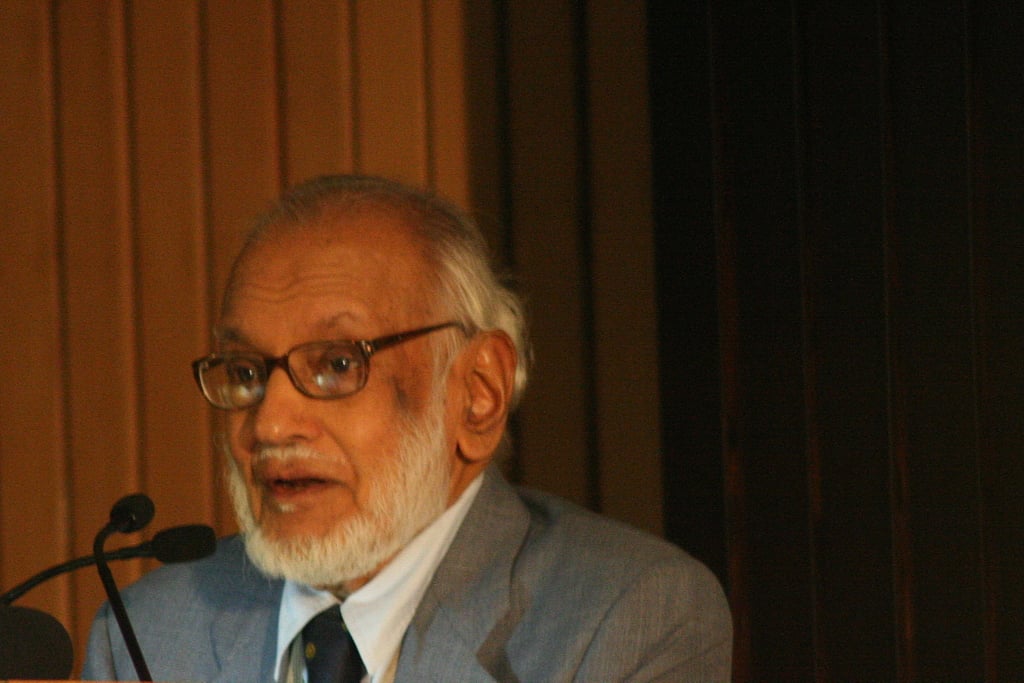
Mambillikalathil Govind Kumar Menon (28 August 1928 – 22 November 2016) also known as M. G. K. Menon, was a physicist and policy maker from India. He had a prominent role in the development of science and technology in India over four decades. One of his most important contributions was nurturing the Tata Institute of Fundamental Research, Mumbai, which his mentor Homi J. Bhabha founded in 1945.
Born in Mangalore, he attended the University of Bristol for his PhD in elementary particle physics under the guidance of Nobel Laureate Cecil F. Powell. He joined the TIFR in 1955.
He undertook experiments with cosmic rays to explore the properties of fundamental particles. He was actively involved in setting up balloon flight experiments, as well as deep underground experiments with cosmic ray neutrinos in the mines at Kolar Gold Fields. He was the President of the Indian Statistical Institute, the Vikram Sarabhai Fellow of the Indian Space Research Organisation, President of the National Academy of Sciences, India, Director of the Tata Institute of Fundamental Research, Mumbai (1966–1975), Chairman Board of Governors, Indian Institute of Technology, Bombay and chairman Board of Governors of the Indian Institute of Information Technology, Allahabad.
Read More About M. G. K. Menon / Source
M. L. Madan
Moti Lal Madan (born 1939) is an Indian biotechnology researcher, veterinarian, academic and administrator.
From 1994 to 1995, Madan served as Director (Research) of the National Dairy Research Institute (NDRI) in Karnal and was later, from 1995 to 1999, Deputy Director General (Animal Science) of the Indian Council of Agricultural Research. In November 2006 he became Vice-Chancellor of the Pandit Deen Dayal Upadhyaya Veterinary Science University, Mathura. Earlier he served as the Vice Chancellor of Dr. Panjabrao Deshmukh Krishi Vidyapeeth in Akola.Madan has published at least 188 academic articles, including many in international journals.Awards/Honours: National Science Pioneer Award, 1985; World Buffalo Congress, Cairo, Egypt; Nalis Lagerlof Award, 1985, 1997, Indian Society for Animal Reproduction, D. Sundaresan Award, 1989, National Dairy Research Institute, Karnal; Hari Om Award, 1990; Rafi Ahmad Kidwai Award, 1992; AGOURI Award, 1995, Japanese Society of Animal Reproduction; Rotary International Award 1998; AJAS Purina Award, 1999, Asian Australasian Association of Animal Production; Rotary Service Excellence Award, 2001; SAPI Honorific Award, 2002, Society for Animal Physiologists of India; Distinguished Veterinarian Award, 2002, Indian Association for the Advancement of Veterinary Research; Bhasin Award, 2002; Alumni Excellence Award, 2004, National Dairy Research Institute.
Read More About M. L. Madan / Source
M. O. P. Iyengar
Madura S. Balakrishnan (1917–1990) was born and raised in Chennai, Tamil Nadu. He was a well-known botanist and he served various government positions and worked for some time at the University of Pune (Currently known as Savitribai Phule Pune University). He was the student of phycologist Professor M.O.P. Iyengar. The standard author abbreviation M.S.Balakr. is used to indicate this person as the author when citing a botanical name.
Read More About M. O. P. Iyengar / Source
M. S. Balakrishnan
Madura S. Balakrishnan (1917–1990) was born and raised in Chennai, Tamil Nadu. He was a well-known botanist and he served various government positions and worked for some time at the University of Pune (Currently known as Savitribai Phule Pune University). He was the student of phycologist Professor M.O.P. Iyengar. The standard author abbreviation M.S.Balakr. is used to indicate this person as the author when citing a botanical name.
Read More About M. S. Balakrishnan / Source
Madhav Gadgil

Madhav Dhananjaya Gadgil (born 1942) is an Indian ecologist, academic, writer, columnist and the founder of the Centre for Ecological Sciences, a research forum under the aegis of the Indian Institute of Science. He is a former member of the Scientific Advisory Council to the Prime Minister of India and the Head of the Western Ghats Ecology Expert Panel (WGEEP) of 2010, popularly known as the Gadgil Commission. He is a recipient of the Volvo Environment Prize
and the Tyler Prize for Environmental Achievement. The Government of India awarded him the fourth highest civilian award of the Padma Shri in 1981 and followed it up with the third highest award of the Padma Bhushan in 2006.
Read More About Madhav Gadgil / Source
Anita Mahadevan-Jansen
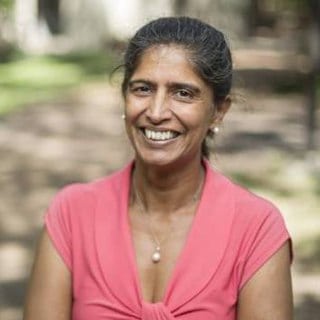
Anita Mahadevan-Jansen is a Professor of Biomedical Engineering and holds the Orrin H. Ingram Chair in Biomedical Engineering at Vanderbilt University. Her research considers the development of optical techniques for clinical diagnosis and surgical guidance, particularly using Raman and fluorescence spectroscopy. She serves on the Board of Directors of SPIE, and is a Fellow of SPIE, The Optical Society, Society for Applied Spectroscopy, and the American Society for Lasers in Medicine and Surgery. She has been elected to serve as the 2020 Vice President of SPIE. With her election, Mahadevan-Jansen joins the SPIE presidential chain and will serve as President-Elect in 2021 and Society’s President in 2022.
Read More About Anita Mahadevan-Jansen / Source
Man Mohan Sharma
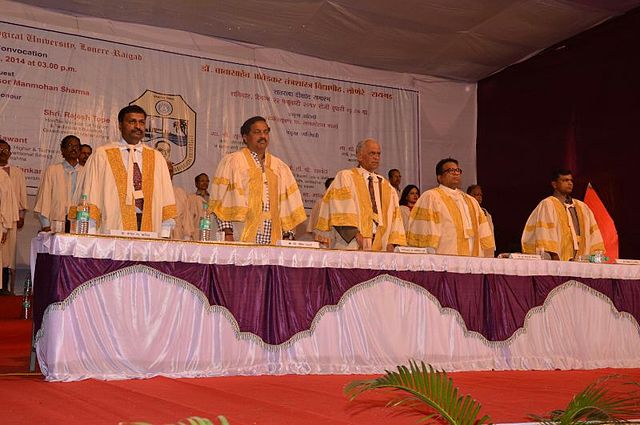
Man Mohan Sharma FREng (born May 1, 1937 in Jodhpur, Rajasthan) is an Indian chemical engineer. He was educated at Jodhpur, Mumbai, and Cambridge. At age 27, he was appointed Professor of Chemical Engineering in the Institute of Chemical Technology, Mumbai. He later went on to become the Director of UDCT, the first chemical engineering professor to do so from UDCT.
In 1990, he became the first Indian engineer to be elected as a Fellow of Royal Society, UK. He was awarded the Padma Bhushan (1987) and the Padma Vibhushan (2001) by the President of India. he has also been awarded the Leverhulme Medal of the Royal Society, the S.S. Bhatnagar Prize in Engineering Sciences (1973), FICCI Award (1981), the Vishwakarma medal of the Indian National Science Academy (1985), G.M. Modi Award (1991), Meghnad Saha Medal (1994), and an honorary Doctor of Science degree from Indian Institute of Technology, Delhi (2001).
Read More About Man Mohan Sharma / Source
M. R. S. Rao
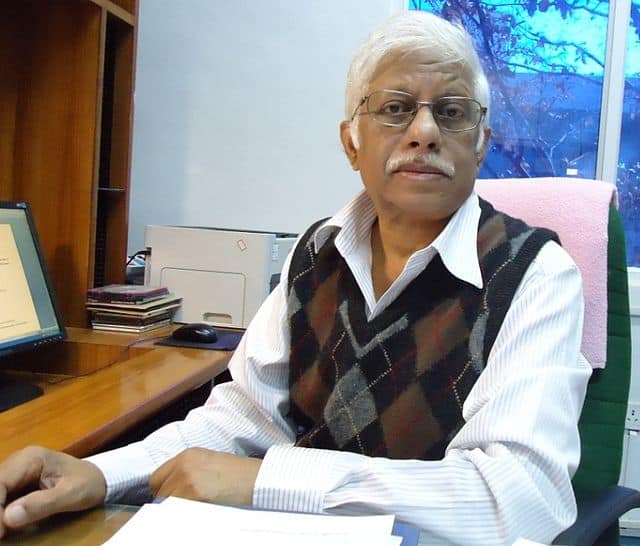
Manchanahalli Rangaswamy Satyanarayana Rao known by the abbreviation M. R. S. Rao, is an Indian scientist, born on 21 January 1948 at Mysore, India. He has been awarded the fourth highest civilian award Padma Shri in Science and Engineering category (year 2010) by the Government of India. He was the President of Jawaharlal Nehru Centre for Advanced Scientific Research (JNCASR), Bangalore, India (2003-2013)
Read More About M. R. S. Rao / Source
Manindra Agrawal

Manindra Agrawal (born 20 May 1966) is a professor at the Department of Computer Science and Engineering and the Deputy Director at the Indian Institute of Technology, Kanpur. He was also the recipient of the first Infosys Prize for Mathematics and the Shanti Swarup Bhatnagar Award in Mathematical Sciences in 2003. He has been honored with Padma Shri in 2013.
Read More About Manindra Agrawal / Source
Manjula Reddy

Manjula Reddy (born 1965) is an Indian bacterial geneticist. She is the chief scientist at the Centre for Cellular and Molecular Biology in Hyderabad, India. In 2019, she won the Infosys Prize in Life Sciences for her work on bacterial cell wall structure and synthesis. She is a Fellow of the Telangana Academy of Sciences and the Indian Academy of Sciences.
Read More About Manjula Reddy / Source
Mathukumalli Vidyasagar

Mathukumalli Vidyasagar FRS (born 29 September 1947) is a leading control theorist and a Fellow of Royal Society. He is currently a Distinguished Professor in Electrical Engineering at IIT Hyderabad. Previously he was the Cecil & Ida Green (II) Chair of Systems Biology Science at the University of Texas at Dallas. Prior to that he was an executive vice-president at Tata Consultancy Services (TCS) where he headed the Advanced Technology Center. Earlier, he was the director of Centre for Artificial Intelligence and Robotics (CAIR), a DRDO defence lab in Bangalore. He is the son of eminent mathematician M V Subbarao.His Erdős number is two and his Einstein number is three.
Read More About Mathukumalli Vidyasagar / Source
Michael Lobo
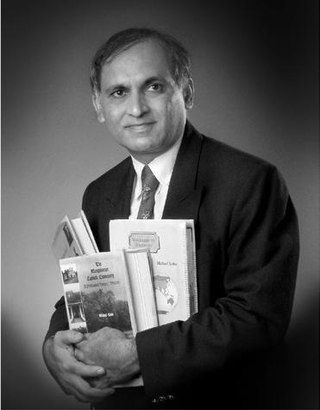
Michael Lobo (born 12 September 1953) is an Indian scientist, writer, and genealogist. He is the author of three self-published books on the Catholic community in Mangalore, India. In 1984, Lobo moved to England where he entered the Cranfield Institute of Technology on a Commonwealth Scholarship, eventually becoming a faculty member. While employed there, Lobo authored papers on Computational Fluid Dynamics (CFD), including Time Marching – A Step-by-step Guide to a Flow Solver (Ashgate Press, 1997). In his spare time he compiled a 1000-page dictionary of English words derived from Classical Greek and wrote a book on the origins of popular Rock’n’roll songs, but neither was published. He returned to Mangalore in 1993, because of “personal crises”.
Read More About Michael Lobo / Source
Mirza Faizan
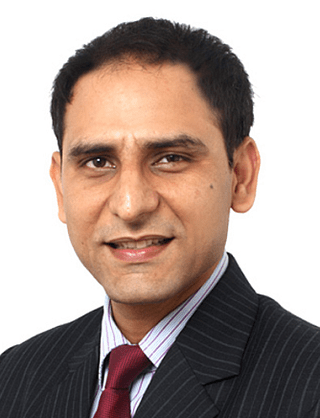
Mirza Faizan is an Indian aerospace scientist who developed the Ground Reality Information Processing System (GRIPS).Faizan attended St Karen’s School, Patna, and graduated from Patna University, followed by work in master of computer application at Manipal Institute of Technology, and in embedded systems at the Indian Institute of Science, Bangalore.He then worked for Defence Research and Development Organisation, Satyam Computers, Honeywell, Airbus-France and on aerospace projects in the US.Faizan is a member of the American Institute of Aeronautics and Astronautics. He currently lives in Texas, US.
Read More About Mirza Faizan / Source
M. Visvesvaraya
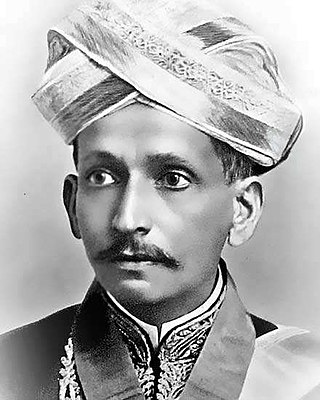
Sir Mokshagundam Visvesvaraya FASc, more commonly known as Sir MV (15 September 1860 – 14 April 1962), was an Indian Civil Engineer (he persued his degree from one of the Best Engineering College at that time and 3rd Oldest college in Asia College of Engineering, Pune) and statesman and the 19th Diwan of Mysore, serving from 1912 to 1919. He received India’s highest honour, the Bharat Ratna, in 1955. He was knighted as a Knight Commander of the British Indian Empire (KCIE) by King George V for his contributions to the public good. His birthday, 15 September, is celebrated as Engineers’ Day in India, Sri Lanka and Tanzania in his memory. He was the Chief Engineer of Krishna Raja Sagara dam in the north-west suburb of Mysuru city, and also served as one of the Chief Engineers of the flood protection system for the city of Hyderabad.
Read More About M. Visvesvaraya / Source
Manoj Kumar Jaiswal

Manoj Kumar Jaiswal is an Indian neuroscientist. He is the full-time faculty (Instructor) in the Department of Psychiatry at the Icahn School of Medicine at Mount Sinai. In Jan 2008 he received his Ph.D. degree from the University of Göttingen in Germany. He was a Postdoctoral Fellow in 2009 at the Massachusetts Institute of Technology in Cambridge, Massachusetts. From 2010 to 2015 he was a Research Fellow I Junior Scientist at the Center of Neuroscience and Regenerative Medicine, in Bethesda, Maryland. From 2015 to 2017 he was a Scientist at the New York State Psychiatric Institute/ Columbia University Department of Psychiatry, in New York City, New York. In 2017, he became the full-time faculty (Instructor) at Icahn School of Medicine at Mount Sinai in New York City, New York.
Read More About Manoj Kumar Jaiswal / Source
Mylswamy Annadurai

Mylswamy Annadurai, popularly known as Moon Man of India, is an Indian scientist working as vice president for Tamil Nadu State Council for Science and Technology (TNSCST), Chairman, Board of Governors, National Design and Research Forum(NDRF. He was born on 2 July 1958, in a village called Kothavadi near Pollachi in Coimbatore district, Tamil Nadu state of India). Prior to taking this assignment he was with Indian Space Research Organisation and served as director, ISRO Satellite Centre (ISAC), Bangalore. During his 36 years of service in ISRO, he had some of the major contributions, including two of the major missions of ISRO, namely Chandrayaan-1 and Mangalyaan. Annadurai has been listed among 100 Global thinkers of 2014 and topped the innovators list. His works are mentioned in textbooks of Tamil Nadu Board of Secondary Education.
Read More About Mylswamy Annadurai / Source
Madan Rao

Madan Rao (born 11 July 1960) is an Indian condensed matter and biological physicist and a senior professor at National Centre for Biological Sciences. Known for his research on molecular dynamics on cell surface, Rao is an elected fellow of the Indian Academy of Sciences and the Indian National Science Academy. The Council of Scientific and Industrial Research, the apex agency of the Government of India for scientific research, awarded him the Shanti Swarup Bhatnagar Prize for Science and Technology, one of the highest Indian science awards, for his contributions to physical sciences in 2004.
Read More About Madan Rao / Source
M. S. Raghunathan
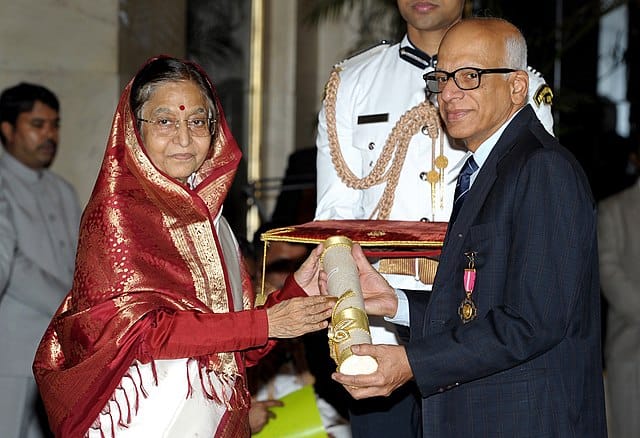
Madabusi Santanam “M. S.” Raghunathan is an Indian mathematician. He is currently Head of the National Centre for Mathematics, Indian Institute of Technology, Mumbai. Formerly Professor of eminence at TIFR in Homi Bhabha Chair. Raghunathan received his PhD in Mathematics from (TIFR), University of Mumbai; his advisor was M. S. Narasimhan. Raghunathan is a Fellow of the Royal Society, of the Third World Academy of Sciences, and of the American Mathematical Society and a recipient of the civilian honour of Padma Bhushan. He has also been on the Mathematical Sciences jury for the Infosys Prize from 2016.
Read More About M. S. Raghunathan / Source
Maneesha S. Inamdar
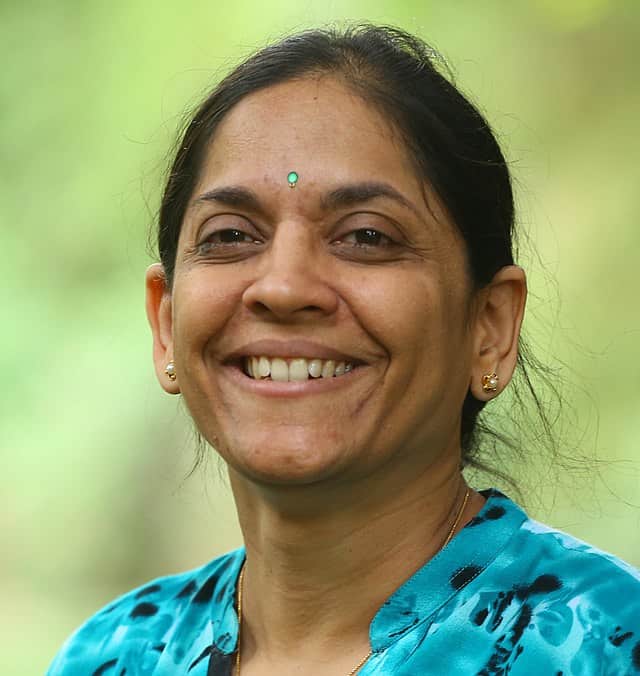
Maneesha S. Inamdar (born 25 February 1967) is an Indian developmental biologist specializing in stem cell research. She is a Professor and Chair at the Molecular Biology and Genetics Unit of the Jawaharlal Nehru Centre for Advanced Scientific Research (JNCASR). She was as an adjunct faculty at the Institute for Stem Cell Biology and Regenerative Medicine (inStem) and is an elected fellow of the Indian Academy of Sciences and the Indian National Science Academy.
Read More About Maneesha S. Inamdar / Source
Nagendra Kumar Singh
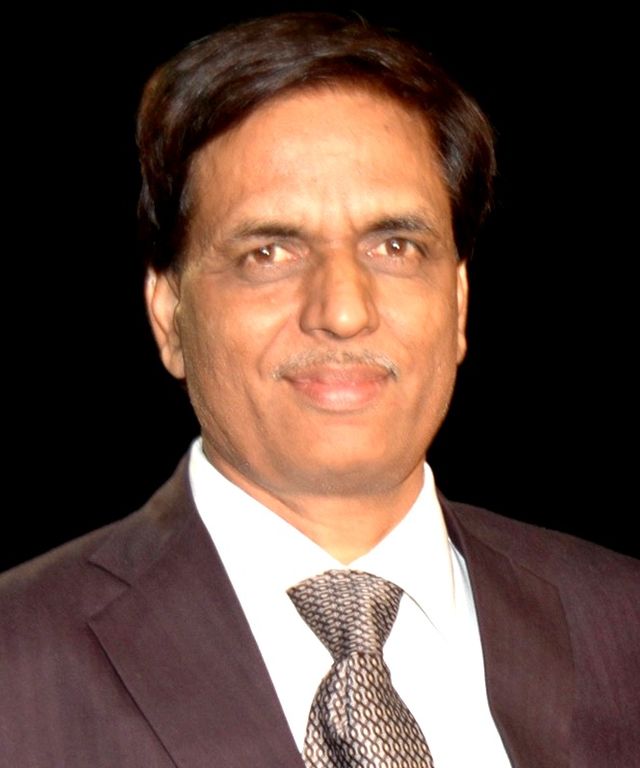
Nagendra Kumar Singh is an Indian agricultural scientist. He is a National Professor (Dr. B.P. Pal Chair) under ICAR at National Research Centre for Plant Biotechnology, Indian Agricultural Research Institute, New Delhi. He was born in a small village called Rajapur in the Mau District of Uttar Pradesh. He is known for his research in the area of plant genomics and biotechnology, particularly for his contribution in the decoding of rice, tomato and pigeonpea genomes and understanding of wheat seed storage proteins and their effect on wheat quality. He has also made significant advances in comparative analysis of rice and wheat genomes and mapping of genes for salt tolerance and basmati quality traits in rice.
Read More About Nagendra Kumar Singh / Source
Nandini Harinath
Nandini Harinath is a rocket scientist at ISRO’s (Indian Space Research Organisation) Satellite Centre in Bengaluru. She is a part of the Mars Orbiter Mission , Maangalyaan . She has co-authored a research paper on mission planning, analysis and operations—Outline of key components.
Read More About Nandini Harinath / Source
Naresh Dadhich
Naresh Dadhich (born September 1, 1944) is a theoretical physicist, formerly at Inter-University Center for Astronomy and Astrophysics (IUCAA). He was also the director of IUCAA until August 31, 2009. Presently he holds the M.A. Ansari Chair in Theoretical Physics at Centre for Theoretical Physics, Jamia Millia Islamia, Delhi.He became the director of IUCAA in July 2003. He is currently a visiting faculty of the University of KwaZulu-Natal at Durban, South Africa and also works with gravity research groups in Portsmouth, UK and Bilbao, Spain. Naresh Dadhich’s specialties include classical and quantum gravity and relativistic astrophysics. Along with his colleagues he has published over 100 scientific papers. He has supervised several PhD students.
Read More About Naresh Dadhich / Source
Nitya Anand
Nitya Anand is a scientist who was the director of Central Drug Research Institute in Lucknow for several years. In 2005, Indian Pharmacopoeia Commission (IPC) appointed him chairman of its scientific committee. In 2012, he was awarded the Padma Shri by the Indian government.
Read More About Nitya Anand / Source
Nilamber Pant
Nilamber Pant is an Indian space scientist, a former member of the Space Commission of India and a pioneer of satellite based communication and broadcasting in India. He served at the Satish Dhawan Space Centre and the ISRO Satellite Centre before becoming the vice chairman of the Indian Space Research Organization (ISRO). The Government of India awarded him the fourth highest Indian civilian honour of Padma Shri in 1984.
Read More About Nilamber Pant / Source
Obaid Siddiqi
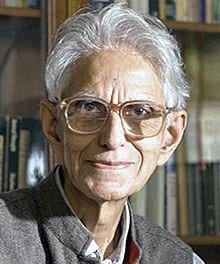
Obaid Siddiqi FRS (7 January 1932 – 26 July 2013) was an Indian National Research Professor and the Founder-Director of the Tata Institute of Fundamental Research (TIFR) National Center for Biological Sciences. He made seminal contributions to the field of behavioural neurogenetics using the genetics and neurobiology of Drosophila.
Read More About Obaid Siddiqi / Source
Padmanabhan Balaram
Padmanabhan Balaram is an Indian biochemist and a former director of the Indian Institute of Science in Bangalore, India. He is a recipient of the third highest Indian civilian honour of Padma Bhushan (2014) as well as the TWAS Prize (1994). Balaram received his bachelor’s degree in Chemistry from Fergusson College, University of Pune followed by a master’s degree from the Indian Institute of Technology, Kanpur and his PhD degree from Carnegie Mellon University with Aksel A. Bothner-By. After a postdoctoral stint at Harvard University with Nobel laureate Robert Burns Woodward, he returned to the Indian Institute of Science, where he has been ever since as a faculty member in the Molecular Biophysics Unit. He presently holds a Chaired Professorship at the National Center for Biological Sciences, Bangalore. During his PhD, Balaram studied the use of negative Nuclear Overhauser effect signals as probes of macromolecular conformations. As a postdoc with Woodword, Balaram worked on the synthesis of the antibiotic erythromycin.
Read More About Padmanabhan Balaram / Source
Pamposh Bhat
Pamposh Bhat (born 19 September, Bhopal, India) is a New Delhi-based environmentalist and award-winning writer. Bhat has been awarded the prestigious Rajbhasha Award for Poetry in 1995 for her work “Kshitij Ki Khoj Mein” (In search of the Horizon).
Active in public life, she serves as the chairperson of the board of trustees for Jwala, a civil society group that seeks to promote renewable energy and energy efficiency in India. She is a former member of the governing council of the [Solar Energy Society of India].At present member of Central Electricity Regulatory Commission advisory committee.
Read More About Pamposh Bhat / Source
Pandurang Sadashiv Khankhoje
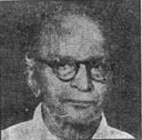
Pandurang Sadashiv Khankhoje (7 November 1884 – 22 January 1967) was an Indian revolutionary, scholar, agricultural scientist and historian who was among the founding fathers of the Ghadar Party. Khankhoje was born in November 1884 to a Marathi Deshastha Rigvedi Brahmin (DRB) family at Wardha, where his father worked as a petition-writer. Young Khankhoje spent his childhood in Wardha, where he completed his primary and middle school education before moving to Nagpur for higher education. He was at the time inspired by the nationalist work of Bal Gangadhar Tilak. At some time in the first decade of the 1900s, Khankhoje left India on a voyage that ultimately saw him settle in the United States. Here he enrolled in the Washington State College (now called Washington State University), graduating in 1913.
Read More About Pandurang Sadashiv Khankhoje / Source
Patcha Ramachandra Rao

Patcha Ramachandra Rao (21 March 1942 – 10 January 2010) was a metallurgist and administrator. He has the unique distinction of being the only Vice-Chancellor (2002–05) of the Banaras Hindu University (BHU) who was also a student (1963–68) and faculty (1964–92) at that institution. From 1992 to 2002, Rao was the Director of the National Metallurgical Laboratory, Jamshedpur. After his tenure as Vice-Chancellor of B.H.U., in 2005, he took the reins of the Defence Institute of Advanced Technology (DIAT) as its first Vice-Chancellor. He was to serve DIAT until his superannuation in 2007. From 2007 till the end, Rao was a Raja Ramanna Fellow at the International Advanced Research Centre for Powder Metallurgy and New Materials, in Hyderabad, Andhra Pradesh.
Read More About Patcha Ramachandra Rao / Source
P. R. Pisharoty

Pisharoth Rama Pisharoty (10 February 1909 – 24 September 2002) was an Indian physicist and meteorologist, and is considered to be the father of remote sensing in India. P. R. Pisharoty was born on 10 February 1909 in the town of Kollengode in the Indian state of Kerala. His parents were Sivaramakrishnan alias Gopala Vadhyar and Lakshmi Pisharassiar. He had three brothers: Chakrapani, Balakrishnan and Rajagopal, and three half brothers: Vaidyanathan, Rose Vadhyar and Gopalakrishnan. He completed his early education in Kerala. Having done his Physics BA honours from St. Joseph’s College, Trichinopoly, Madras state, he went on to do his MA (Physics) from Madras University. He then worked as a college lecturer in Physics at Loyola College at Chennai during 1932-1941. During the summer vacations he used to work under Prof. C. V. Raman at the Indian Institute of Science, Bangalore. On the recommendation of Raman, Pisharoty joined the India Meteorological Department in 1942, where he carried out research on thunderstorms, western disturbances, movement of monsoon depressions, orographic rain, etc. He then joined the University of California for further studies where he worked under meteorologist Jacob Bjerknes. His published two reports titled Some aspects of geostrophic poleward sensible heat and The kinetic energy of the atmosphere. He obtained his MS (in Meteorology) and PhD degrees by 1954.
Read More About P. R. Pisharoty / Source
Pranav Mistry

Pranav Mistry (born 14 May 1981) is a computer scientist and inventor. He is the President and CEO of STAR Labs (Samsung Technology & Advanced Research Labs) since October 2019. He is best known for his work on SixthSense, Samsung Galaxy Gear and Project Beyond.
Read More About Pranav Mistry / Source
Praveen Kumar Gorakavi
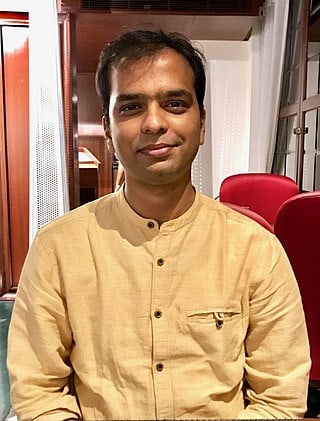
Praveen Kumar Gorakavi (born 24 May 1989) is an Indian scientist, chemical engineer, inventor and consultant, recognised as a polymath and former child prodigy for his works in science and engineering from childhood.Praveen Kumar Gorakavi has co-founded The Phi Factory, a socially conscious R&I initiative that develops one social innovation for every three commercial technologies it develops.
Read More About Praveen Kumar Gorakavi / Source
Prem Chand Pandey

Prem Chand Pandey is an Indian scientist and academic in the fields of Satellite Oceanography, Remote Sensing, Atmospheric Science, Antarctic and Climate Change. Pandey obtained his masters and bachelor’s degrees in Electronics and science respectively from Allahabad University. He completed his D.Phil. degree from the same university (on microwaves) in 1972.
Read More About Prem Chand Pandey / Source
Panchanan Maheshwari
Panchanan Maheswari (9 November 1904 – 18 May 1966) was a prominent Indian botanist noted chiefly for his invention of the technique of test-tube fertilization of angiosperms. This invention has allowed the creation of new hybrid plants that could not previously be crossbred naturally.
Read More About Panchanan Maheshwari / Source
Prabhu Lal Bhatnagar
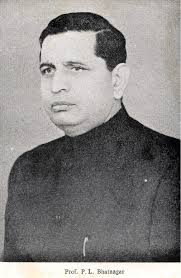
Prabhu Lal Bhatnagar (8 August 1912 – 5 October 1976), commonly addressed as P. L. Bhatnagar, was an Indian mathematician known for his contribution to the Bhatnagar–Gross–Krook operator used in Lattice Boltzmann methods (LBM).
Read More About Prabhu Lal Bhatnagar / Source
Phoolan Prasad

Phoolan Prasad (born 1 January 1944) is an Indian mathematician who specialised in Partial differential equations, fluid mechanics. He was awarded in 1983 the Shanti Swarup Bhatnagar Prize for Science and Technology, the highest science award in India, in the mathematical sciences category. He is also a Fellow of the Indian National Science Academy (INSA).
Read More About Phoolan Prasad / Source
Purnima Sinha
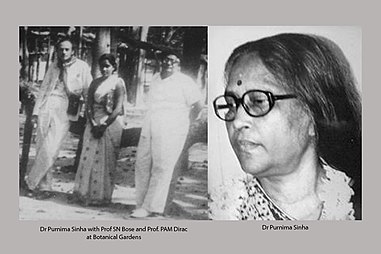
Dr. Purnima Sinha (12 October 1927 – 11 July 2015) was an Indian physicist and was one of the first Bengali women to receive a doctorate in physics. She did tremendous work in the field of x-ray crystallography of clay minerals. She was raised by a progressive family in a traditional era. She was able to further her education and led a life where she was able to pursue her passion of physics and engage in a artistic activities such as singing, painting, and writing.
Read More About Purnima Sinha / Source
Predhiman Krishan Kaw

Predhiman Krishan Kaw (15 January 1948 – 18 June 2017) was an Indian plasma physicist. He had been the founding director of the Institute for Plasma Research and served the institute as the director from 1986 to 2012. Kaw was born on 15 January 1948 in Srinagar (Jammu and Kashmir), India. He matriculated from Punjab University (1958) and completed his M.Sc. from Agra University in 1964. He received PhD from Indian Institute of Technology, Delhi in 1966 under Supervision of Prof. M. S. Sodha, and was the first Ph.D. from the Indian Institute of Technology, Delhi.
Read More About Predhiman Krishan Kaw / Source
Probir Roy

Probir Roy (born 4 October 1942) is an Indian particle physicist and a former professor at Tata Institute of Fundamental Research. He is also a senior scientist of the Indian National Science Academy at Bose Institute and a former Raja Ramanna fellow of Department of Atomic Energy at Saha Institute of Nuclear Physics.
Known for the development of a sum rule on two-photon processes, Roy is an elected fellow of all the three major Indian science academies – Indian Academy of Sciences, Indian National Science Academy and National Academy of Sciences, India – as well as of the American Physical Society. The Council of Scientific and Industrial Research, the apex agency of the Government of India for scientific research, awarded him the Shanti Swarup Bhatnagar Prize for Science and Technology, one of the highest Indian science awards, for his contributions to physical sciences in 1987.
Read More About Probir Roy / Source
P. K. Iyengar
Padmanabha Krishnagopala Iyengar (29 June 1931 – 21 December 2011; best known as P. K. Iyengar), was an Indian nuclear physicist who is widely known for his central role in the development of the nuclear program of India. Iyengar previously served as the director of BARC and former chairman of the Atomic Energy Commission of India, he raised his voice and opposition against the nuclear agreement between India and the United States and expressed that the deal favoured the United States.During his last years of his life, Iyenger engaged in peace activism and greatly exhorted the normalization of bilateral relations between India and Pakistan.
Read More About P. K. Iyengar / Source
Prem Shanker Goel
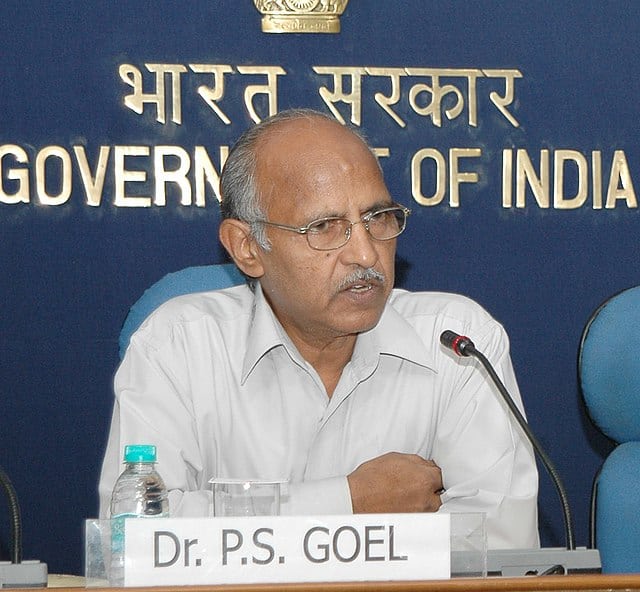
Prem Shanker Goel is an Indian space scientist, former secretary at the Department of Ocean Development, Ministry of Earth Sciences, Government of India and a former director of Indian Space Research Organization. He was honored by the Government of India, in 2001, with the fourth highest Indian civilian award of Padma Shri.
Read More About Prem Shanker Goel / Source
P. Kunhikrishnan
P. Kunhikrishnan (born 30 May 1961) is a Space Scientist from India. Currently, he is a Distinguished Scientist (Apex Scale) & Director of U.R.Rao Satellite Centre (URSC), in Bengaluru, India. He is a member of Space Commission, Government of India.
Read More About P. Kunhikrishnan / Source
Ram Rajasekharan
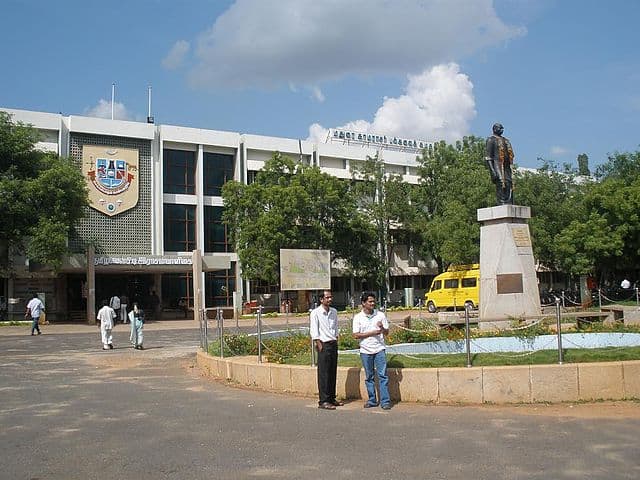
Ram Rajasekharan (born 25 December 1960) is an Indian plant biologist, food technologist and a former director of the Central Food Technological Research Institute (CFTRI), a constituent laboratory of the Council of Scientific and Industrial Research. Known for his studies on plant lipid metabolism, Rajasekharan is a former professor of eminence at the Indian Institute of Science and an elected fellow of all the three major Indian science academies namely Indian Academy of Sciences, National Academy of Sciences, India and Indian National Science Academy as well as the National Academy of Agricultural Sciences. The Department of Biotechnology of the Government of India awarded him the National Bioscience Award for Career Development, one of the highest Indian science awards, for his contributions to biosciences in 2001.
Read More About Ram Rajasekharan / Source
Raghunath Anant Mashelkar
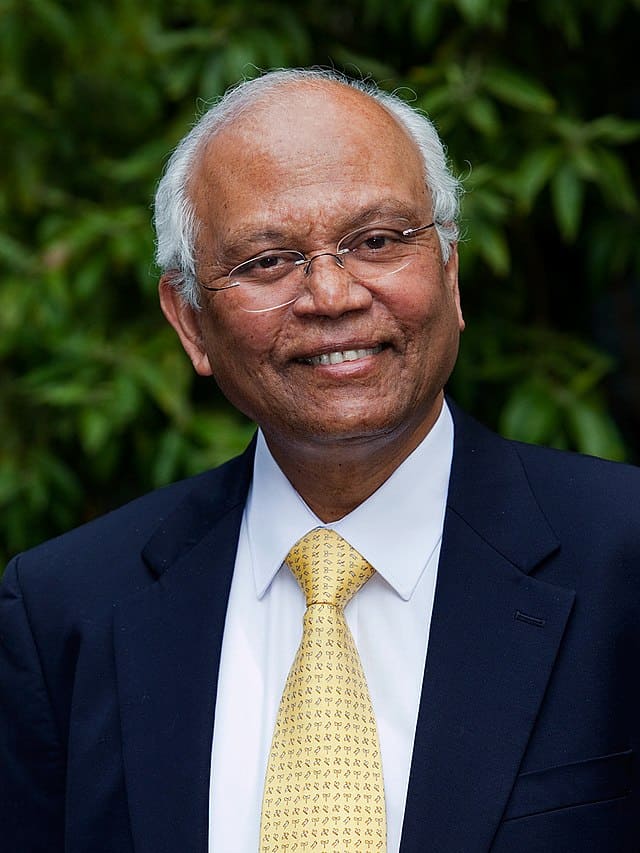
Raghunath Anant Mashelkar, also known as Ramesh Mashelkar, (born 1 January 1943) is an Indian Chemical Engineer, born in a village Mashel in Goa and brought up in Maharashtra. He is a former Director General of the Council of Scientific and Industrial Research (CSIR). He was also the President of Indian National Science Academy (2004-2006), President of Institution of Chemical Engineers (2007) as also the President of Global Research Alliance (2007-2018). He was also first Chairperson of Academy of Scientific and Innovative Research (AcSIR). He is a Fellow of the Royal Society, Fellow of the Royal Academy of Engineering (FREng), Foreign associate of US National Academy of Engineering and the US National Academy of Sciences.
Read More About Raghunath Anant Mashelkar / Source
Raj Reddy
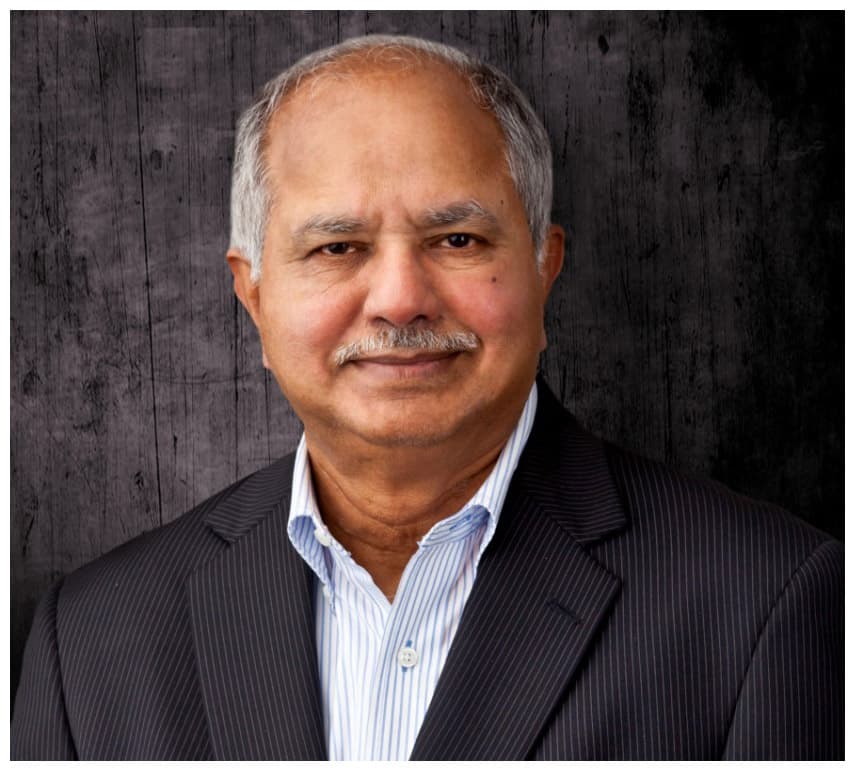
Dabbala Rajagopal “Raj” Reddy (born 13 June 1937) is an Indian-American computer scientist and a winner of the Turing Award. He is one of the early pioneers of Artificial Intelligence and has served on the faculty of Stanford and Carnegie Mellon for over 50 years. He was the founding director of the Robotics Institute at Carnegie Mellon University. He was instrumental in helping to create Rajiv Gandhi University of Knowledge Technologies in India, to cater to the educational needs of the low-income, gifted, rural youth. He is the chairman of International Institute of Information Technology, Hyderabad. He is the first person of Asian origin to receive the ACM Turing Award, in 1994, known as the Nobel Prize of Computer Science, for his work in the field of artificial intelligence.
Read More About Raj Reddy / Source
Raja Ramanna

Raja Ramanna (28 January 1925 – 24 September 2004) was an Indian physicist who is best known for his role in India’s nuclear program during its early stages.
Having joined the nuclear program in 1964, Ramanna worked under Homi Jehangir Bhabha, and later became the director of this program in 1967. Ramanna expanded and supervised scientific research on nuclear weapons and was the first directing officer of the small team of scientists that supervised and carried out the test of the nuclear device, under the codename Smiling Buddha, in 1974.Ramanna was associated with and directed India’s nuclear program for more than four decades, and also initiated industrial defence programmes for the Indian Armed Forces. He was a recipient of Padma Vibhushan, India’s second highest civilian decoration, in honour of his services to build India’s nuclear programme. Ramanna died in Mumbai in 2004 at the age of 79.
Read More About Raja Ramanna / Source
Rajeev Motwani

Rajeev Motwani ( March 26, 1962 – June 5, 2009) was a professor of Computer Science at Stanford University whose research focused on theoretical computer science. He was an early advisor and supporter of companies including Google and PayPal, and a special advisor to Sequoia Capital. He was a winner of the Gödel Prize in 2001.
Read More About Rajeev Motwani / Source
Rajeev Kumar Varshney

Rajeev Kumar Varshney (born 13 July 1973) is an agricultural scientist, specializing in genomics, genetics, molecular breeding and capacity building in developing countries. He is engaged in discovering, developing, and delivering innovative R&D solutions to tackle wicked problems facing global agriculture. Varsheny is currently the Research Program Director- Genetic Gains that includes several units viz. Genomics & Trait Discovery, Forward Breeding, Pre-Breeding, Cell, Molecular Biology & Genetic Engineering, Seed Systems, Biotechnology- ESA, Sequencing and Informatics Services Unit, and Genebank (until 2020); and Director, Center of Excellence in Genomics & Systems Biology at the International Crops Research Institute for the Semi-Arid Tropics (ICRISAT), a global agricultural research institute. He holds Adjunct/Honorary/Visiting Professor positions at 10 academic institutions in Australia, China, Ghana, Hong Kong and India, including The University of Western Australia, University of Queensland, West Africa Centre for Crop Improvement (University of Ghana), University of Hyderabad, Chaudhary Charan Singh University and Professor Jayashankar Telangana State Agricultural University.
Read More About Rajeev Kumar Varshney / Source
Rajesh Gopakumar
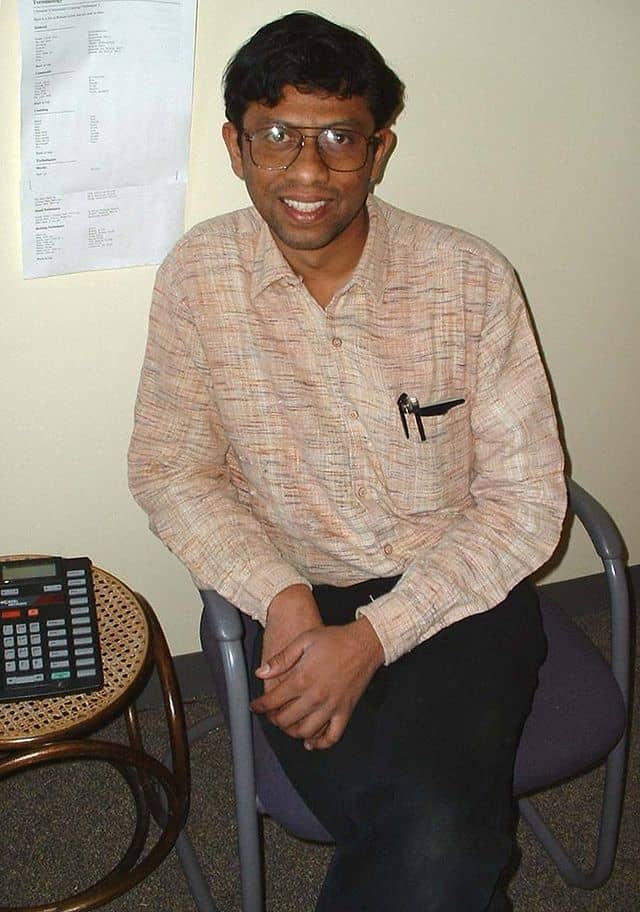
Rajesh Gopakumar (born 1967 in Kolkata, India) is a theoretical physicist and the director of the International Centre for Theoretical Sciences (ICTS-TIFR) in Bangalore, India. He was previously a professor at Harish-Chandra Research Institute (HRI) in Allahabad, India. He is known for his work on topological string theory.
Read More About Rajesh Gopakumar / Source
Ram Chet Chaudhary
Ram Chet Chaudhary is an Indian agricultural scientist. Born and educated in India, he taught in various agricultural universities in India and went on to study in Germany. His works on agriculture have been published across the world and form part of the curriculum in many Indian agriculture universities. He has studied the production of rice and other crops in Nigeria, the Philippines, Indonesia, Cambodia, Myanmar, as well as India. He has written a textbook on plant breeding, published by Oxford University Press in 1982 and reprinted 4 times through 1993, and a comprehensive work on rice varieties, published by FAO in 2001.
He founded on 8 September 1998, and is Chairman of the Participatory Rural Development Foundation (PRDF). Formerly he was the coordinator of the International Network for the Genetic Evaluation of Rice (INGER).
Read More About Ram Chet Chaudhary / Source
Radhanath Sikdar
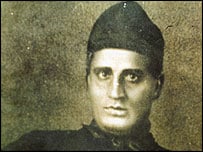
Radhanath Sikdar ( October 1813 – 17 May 1870) was an Indian Bengali mathematician who is best known for calculating the height of Mount Everest. In 1831, George Everest, the Surveyor General of India, was in the pursuit of a mathematician who had specialised in Spherical Trigonometry, so that they could be a part of the Great Trigonometric Survey. In 1832, under the leadership of Everest, the longitudinal series of the “triangle” survey was completed from Seronj in Madhya Pradesh to Calcutta in West Bengal. While still working on mapping Calcutta, Bengal, Everest had begun his search for a mathematician, and soon enough, John Tytler, a professor of Mathematics at the Hindu College, now known as the Presidency College, recommended his 19-year-old pupil, Radhanath Sikdar.
Read More About Radhanath Sikdar / Source
Ranajit Chakraborty
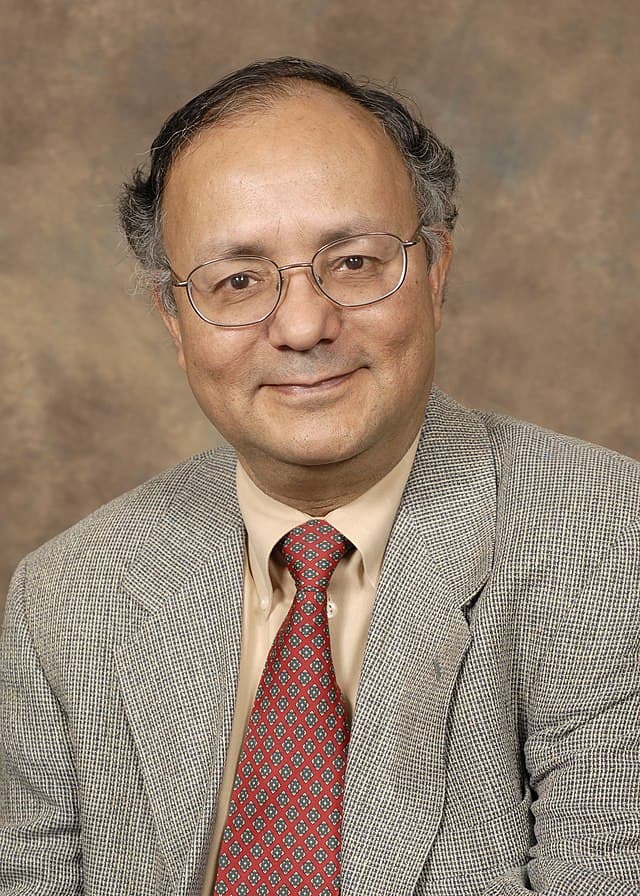
Ranajit Chakraborty (April 17, 1946 – September 23, 2018) was a human and population geneticist. At the time of his death, he was Director of the Center for Computational Genomics at the Institute of Applied Genetics and Professor in the Department of Forensic and Investigative Genetics at the University of North Texas Health Science Center in Fort Worth, Texas. His scientific contributions include studies in human genetics, population genetics, genetic epidemiology, statistical genetics, and forensic genetics.
Read More About Ranajit Chakraborty / Source
Ravindra Shripad Kulkarni
Ravindra Shripad Kulkarni (born 1942) is an Indian mathematician, specializing in differential geometry. He is known for the Kulkarni–Nomizu product. Ravi S. Kulkarni received in 1968 his Ph.D. from Harvard University under Shlomo Sternberg with thesis Curvature and Metric. For the academic year 1980–1981 he was a Guggenheim Fellow. After a research and teaching career spanning over 40 years in the US at Johns Hopkins University, Columbia University, Indiana University, and City University of New York, he returned to India as Distinguished Professor and Director of Harish-Chandra Research Institute, one of three research institutes for Mathematics and Theoretical Physics in India, followed by a 7-year stint at the Indian Institute of Technology (Bombay) as Mathematics Chair. He is interested in the philosophy of Mathematics and Science, and notes he has “…not yet figured out the enigma of how Ramanujan’s mind worked”. He has served as the president of the Ramanujan Mathematical Society.
Read More About Ravindra Shripad Kulkarni / Source
Ramesh Raskar
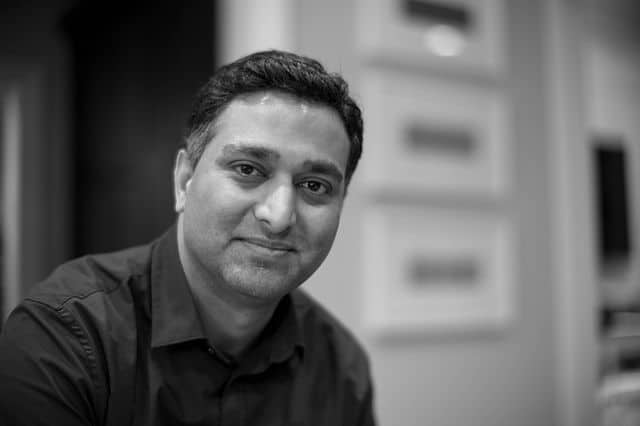
Ramesh Raskar is a Massachusetts Institute of Technology Associate Professor and head of the MIT Media Lab’s Camera Culture research group. Previously he worked as a Senior Research Scientist at Mitsubishi Electric Research Laboratories (MERL) during 2002 to 2008. He holds over ninety patents in computer vision, computational health, sensors and imaging. He received the $500K Lemelson–MIT Prize in 2016. The prize money will be used for launching REDX.io, a group platform for co-innovation in Artificial Intelligence. He is well known for inventing EyeNetra (mobile device to calculate eyeglasses prescription), EyeCatra (cataract screening) and EyeSelfie (retinal imaging), Femto-photography (trillion frames per second imaging) and his TED talk for cameras to see around corners. In February 2020, Raskar and his team launched Private Kit: SafePaths, a public health tool for contact tracing for COVID-19 pandemic. He is also currently the Founder, Chairman, and Chief Scientist of PathCheck.
Read More About Ramesh Raskar / Source
Ratan Lal Brahmachary

Ratan Lal Brahmachary (1932 – 13 February 2018) was a distinguished biochemist and a pioneer of tiger pheromone studies in India. He was widely known for his research in pheromones, although his academic background based on Physics, specifically on astrophysics under guidance of S.N. Bose. Brahmachary made significant contributions in tiger behavioral studies researching the animal for over 50 years. He studied many species of wildlife, notably big cats and undertook research trips to his favourite continent Africa fourteen times. Brahmachary studied ethology in the Amazon basin in South America and Borneo, Indonesia with an ardent admirer of entomologist Gopal Chandra Bhattacharya.He once said in an interview Biology is as fascinating as probing the mysteries of the physical universe. The inner universe of an organism or of an ecosystem is as challenging as the outer Universe of the expanding cosmos. He died in pneumonia on 13 February 2018 in a city Nursing home in Kolkata, India. Brahmachary had pledged his body to medical research. After paiding respect his body was handed over to Radha Govinda Kar Hospital authorities.
Read More About Ratan Lal Brahmachary / Source
Rajagopala Chidambaram
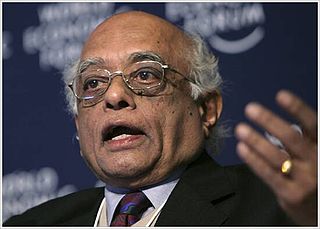
Rajagopala Chidambaram (born 12 November 1936) is an Indian Physicist who is known for his integral role in India’s nuclear weapons program; he coordinated test preparation for the Pokhran-I (1975) and Pokhran-II (1998). Previously served as the principal scientific adviser to the federal Government of India, Chidambaram previously served as the director of the Bhabha Atomic Research Centre (BARC)— and later as chairman, Atomic Energy Commission of the Government of India and he contributed in providing national defence and energy security to India. Chidambaram was chairman of the board of Governors of the International Atomic Energy Agency (IAEA) during 1994–95. He was also a member of the Commission of Eminent Persons appointed by the Director-General, IAEA, in 2008 to prepare a report on “The Role of the IAEA to 2020 and Beyond”.
Throughout his career, Chidambaram played a key role in developing India’s nuclear weapons, being a part of the team conducting the first Indian nuclear test (Smiling Buddha) at Pokhran Test Range in 1974. He gained international fame when he led and represented the team of the Department of Atomic Energy (DAE) while observing and leading efforts to conduct the second nuclear tests in May 1998.
Read More About Rajagopala Chidambaram / Source
Rama Govindarajan
Rama Govindarajan is an Indian scientist specialized in the field of fluid dynamics. She previously worked at the Engineering Mechanics Unit of the
Jawaharlal Nehru Centre for Advanced Scientific Research from 1998-2012 and as a professor at the TIFR Hyderabad Centre for Interdisciplinary Sciences from 2012-2016. As of 2019 she is working as a professor at International Centre for Theoretical Sciences (ICTS), Bengaluru. Professor Govindarajan is a recipient of the Shanti Swarup Bhatnagar Award for the year 2007.
Read More About Rama Govindarajan / Source
Ramamurti Rajaraman
Ramamurti Rajaraman (born 11 March 1939) is an Emeritus Professor of Theoretical Physics at the School of Physical Sciences at Jawaharlal Nehru University. He was also the co-Chairman of the International Panel on Fissile Materials and a member of the Bulletin of the Atomic Scientists’ Science and Security Board. He has taught and conducted research in physics at the Indian Institute of Science, the Institute for Advanced Study at Princeton, and as a visiting professor at Stanford, Harvard, MIT, and elsewhere. He received his doctorate in theoretical physics in 1963 from Cornell University. In addition to his physics publications, Rajaraman has written widely on topics including fissile material production in India and Pakistan and the radiological effects of nuclear weapon accidents.
Read More About Ramamurti Rajaraman / Source
Ritu Karidhal
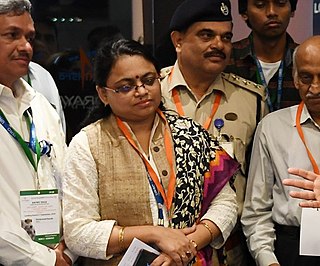
Dr. Ritu Karidhal Srivastava is an Indian scientist working with the Indian Space Research Organisation (ISRO). She was a Deputy Operations Director to India’s Mars orbital mission, Mangalyaan. She has been referred to as a “Rocket Woman” of India. She was born and brought up in Lucknow and is an aerospace engineer.
Read More About Ritu Karidhal / Source
Raghavan Narasimhan
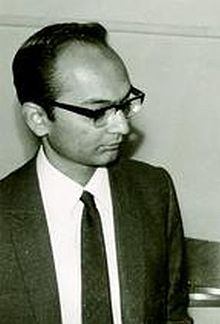
Raghavan Narasimhan (August 31, 1937 – October 3, 2015) was an Indian mathematician at the University of Chicago who worked on real and complex manifolds and who solved the Levi problem for complex manifolds. He attended Loyola College in Madras, where, like many other well-known Indian mathematicians, he was taught by the French Jesuit priest Racine, and received his doctorate in 1963 from K. Chandrasekharan in Bombay. In 1966 he was at the Institute for Advanced Study at Princeton. Narasimhan was a professor at the University of Chicago.
Read More About Raghavan Narasimhan / Source
Rohini Balakrishnan
Rohini Balakrishnan is an Indian bioacoustics expert. She is a senior Professor and Chair of the Centre for Ecological Sciences at Indian Institute of Science (IISc), Bengaluru. Her team works on different aspects of animal communication and bioacoustics to help understand animal behaviour.
Read More About Rohini Balakrishnan / Source
Ranjan Roy Daniel
Ranjan Roy Daniel (also referred to as R. R. Daniel or Rajan Roy) (11 August 1923 – 27 March 2005) was an Indian Nagercoil born physicist who worked in the fields of cosmic rays and space physics, and remained Director Chairman of Tata Institute of Fundamental Research. He also served as an advisor to the prime minister of India, Indira Gandhi in 1976. He worked in the field of cosmic rays with Homi Jehangir Bhabha for 23 years.
He was awarded the Padma Bhushan in 1992 by the Government of India, for his contributions to science and engineering.
Read More About Ranjan Roy Daniel / Source
Ravindra Kumar Sinha
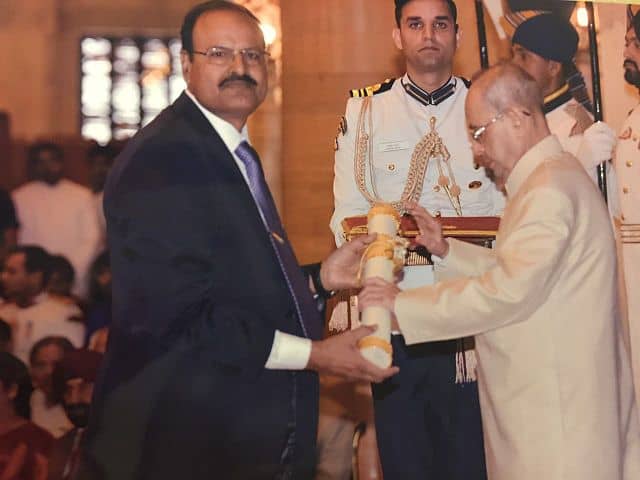
Ravindra Kumar Sinha (born 1 July 1954) is a Padma Shri awarded Indian biologist and environmentalist. Currently, he is Vice-Chancellor of Shri Mata Vaishno Devi University and formerly of Nalanda Open University. Previously he was the Head of the Department of Zoology at Patna University, and is a pioneer researcher and wildlife conservationist, famous for his efforts for the conservation of Gangetic Dolphins, he is popularly known as the “Dolphin Man of India”.
His scientific research and relentless conservation campaign for the last 4 decades have been crucial to the efforts of saving the Ganga River dolphin from extinction. In response to the awareness of the urgency of protecting the Ganga River dolphin raised by Sinha, the Government of India designated this Dolphin as the National Aquatic Animal of India in 2009.
Read More About Ravindra Kumar Sinha / Source
Salim Yusuf
Salim Yusuf, (born 26 November 1952) is an Indian-born Canadian physician, the Marion W. Burke Chair in Cardiovascular Disease at McMaster University Medical School. He is a cardiologist and epidemiologist. Born in the town of Kottarakkara in Kerala, Yusuf studied medicine at St. John’s Medical College in Bangalore and earned a DPhil at Oxford University as a Rhodes scholar. At Oxford, he also took part in research into cardiovascular disease. His doctoral thesis was titled “Beta adrenergic blockade in myocardial infarction” and his supervisor was Peter Sleight.
Read More About Salim Yusuf / Source
Sandip Trivedi
Sandip Trivedi ( born 1963) is an Indian theoretical physicist working at Tata Institute for Fundamental Research (TIFR) at Mumbai, India, while he is its current Director. He is well known for his contributions to string theory, in particular finding (along with Renata Kallosh, Andrei Linde, and Shamit Kachru) the first models of accelerated expansion of the universe in low energy supersymmetric string (see KKLT mechanism). His research areas include string theory, cosmology and particle physics. He is now member of program advisory board of International Center for Theoretical Sciences (ICTS). He is also the recipient of the Infosys Prize 2010 in the category of Physical Sciences.
Read More About Sandip Trivedi / Source
Satish Dhawan
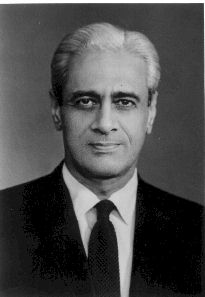
Satish Dhawan (25 September 1920 – 3 January 2002) was an Indian mathematician and aerospace engineer, widely regarded as the father of experimental fluid dynamics research in India. Born in Srinagar, Dhawan was educated in India and further on in United States. Dhawan was one of the most eminent researchers in the field of turbulence and boundary layers, leading the successful and indigenous development of the Indian space programme. He succeeded M. G. K. Menon, as the third chairman of the Indian Space Research Organisation (ISRO) in 1972.
Read More About Satish Dhawan / Source
Satish Kumar

Satish Kumar (born 9 August 1936) is an Indian British activist and speaker. He has been a Jain monk, nuclear disarmament advocate and pacifist. Now living in England, Kumar is founder and Director of Programmes of the Schumacher College international centre for ecological studies, and is Editor Emeritus of Resurgence & Ecologist magazine. His most notable accomplishment is the completion, together with a companion, E. P. Menon, of a peace walk of over 8,000 miles in 1973–4, from New Delhi to Moscow, Paris, London, and Washington, D.C., the capitals of the world’s earliest nuclear-armed countries. He insists that reverence for nature should be at the heart of every political and social debate.
Read More About Satish Kumar / Source
Satya Churn Law
Satya Churn Law (alternately transcribed as Satya Charan Law or Satyacharan Laha) (1888 – 11 December 1984) was a wealthy naturalist, amateur ornithologist, educationist and intellectual in Calcutta. He was for a while a treasurer of the Indian Statistical Institute, a Fellow of the Zoological Society of London and Member of the British Ornithologists’ Union. In 1937, Nirad C. Chaudhuri became his literary assistant.
He wrote books on a variety of topics including birds (Pet Birds of Bengal 1923) based on his experience in keeping aviaries. He was a vice president of the Calcutta Zoological Garden for a while. He founded a journal, Prakriti, in Bengali for the popularization of science.
Read More About Satya Churn Law / Source
Seema Bhatnagar
Seema Bhatnagar is an Indian scientist, working in the field of anticancer drug discovery. She primarily works on synthetic chemistry approaches for targeted delivery of anticancer drugs in breast cancer. Seema Bhatnagar completed her B.Sc. in Chemistry, Biology and Zoology (1992), followed by M.Sc. in Organic Chemistry (1994) from Isabella Thoburn College, Lucknow. She did her Ph.D. in Chemistry (1999) at Central Drug Research Institute, Lucknow and thesis executed under the doctoral advisor of Amiya Prasad Bhaduri.
Read More About Seema Bhatnagar / Source
Shekhar C. Mande

Shekhar C. Mande is a Structural and Computational Biologist. He did his M.Sc. in Physics from University of Nagpur. He holds Doctor of philosophy in Molecular Biophysics, from the Indian Institute of Science. Following his PhD, he joined Prof. Wim G. J. Hol as Post Doctoral Fellow at Rijksuniversiteit Groningen in the Netherlands. Since 2001, he was senior staff scientist at Centre for DNA Fingerprinting and Diagnostics. Between September 2011 and September 2018 He served as director at National Centre for Cell Science in Pune, India. Currently he serves as the Director General of the Council of Scientific and Industrial Research (CSIR)-cum- Secretary, Department of Scientific and Industrial Research (DSIR), Govt of India.
He was awarded in 2005 the Shanti Swarup Bhatnagar Prize for Science and Technology, the highest science award in India, in the Biological sciences category.
Read More About Shekhar C. Mande / Source
Shipra Guha-Mukherjee
Shipra Guha-Mukherjee (13 July 1938 – 15 September 2007) was an Indian botanist who worked on plant tissue culture, plant molecular biology, biotechnology and cell molecular biology. She died in 2007 as a result of brain cancer. Shipra Guha Mukharji the woman scientist who was behind the breakthrough discovery of “The technique of production of haploid plants through anther culture.”
Read More About Shipra Guha-Mukherjee / Source
Shivram Bhoje
Shivram Baburao Bhoje (born 9 April 1942) is a distinguished Indian nuclear scientist who worked in the field of fast-breeder nuclear reactor technology for forty years in the design, construction, operation, and research and development. Indian government has honoured him with Padma Shri in 2003, the fourth highest civilian award in India, for his distinguished service to science and engineering fields.
Read More About Shivram Bhoje / Source
Shrinivas Kulkarni
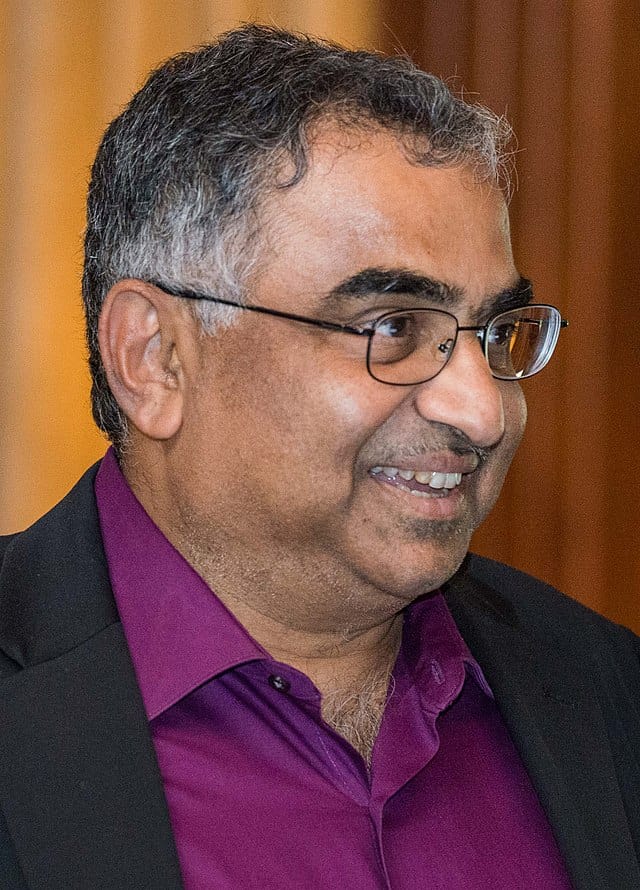
Shrinivas Ramchandra Kulkarni (born 4 October 1956) is a US-based astronomer born and raised in India. He is currently a professor of astronomy and planetary science at California Institute of Technology, and he served as director of Caltech Optical Observatory (COO) at California Institute of Technology, in which capacity he oversaw the Palomar and Keck among other telescopes. He is the recipient of a number of awards and honours.
Kulkarni is the brother of Sudha Murthy and brother-in-law of Narayana Murthy, founder of Infosys. He has been the Jury Chair for the Infosys Prize for the discipline of Physical Sciences since 2009.
Read More About Shrinivas Kulkarni / Source
Shreeram Shankar Abhyankar
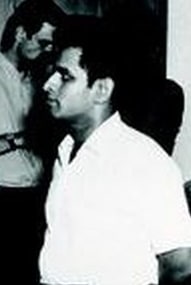
Shreeram Shankar Abhyankar (22 July 1930 – 2 November 2012) was an Indian American mathematician known for his contributions to algebraic geometry. He, at the time of his death, held the Marshall distinguished professor of mathematics chair at Purdue University, and was also a professor of computer science and industrial engineering. He is known for Abhyankar’s conjecture of finite group theory. His latest research was in the area of computational and algorithmic algebraic geometry.
Read More About Shreeram Shankar Abhyankar / Source
Siva S. Banda

Siva Subrahmanyam Banda is an Indian-American aerospace engineer. He is Director of the Control Science Center of Excellence and Chief Scientist for the Aerospace Systems Directorate at the United States Air Force Research Laboratory at Wright-Patterson Air Force Base. He has taught at Wright State University, the University of Dayton, and the Air Force Institute of Technology.
Read More About Siva S. Banda / Source
Srikumar Banerjee
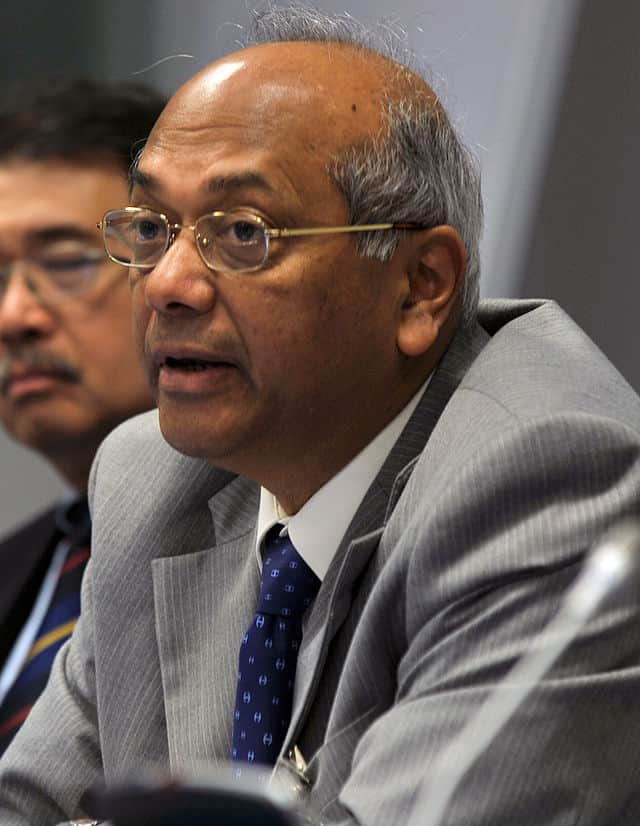
Srikumar Banerjee is an Indian metallurgical engineer. He retired as the Chairman Atomic Energy Commission of India (AECI) and the Secretary of Department of Atomic Energy (DAE) on April 30, 2012. Prior to his stint as DAE Chairman, he was the Director of Bhabha Atomic Research Centre (BARC) from April 30, 2004 to May 19, 2010. He is currently a DAE Homi Bhabha Chair Professor at Bhabha Atomic Research Centre, Mumbai.
Read More About Srikumar Banerjee / Source
Subhash Chandra Lakhotia
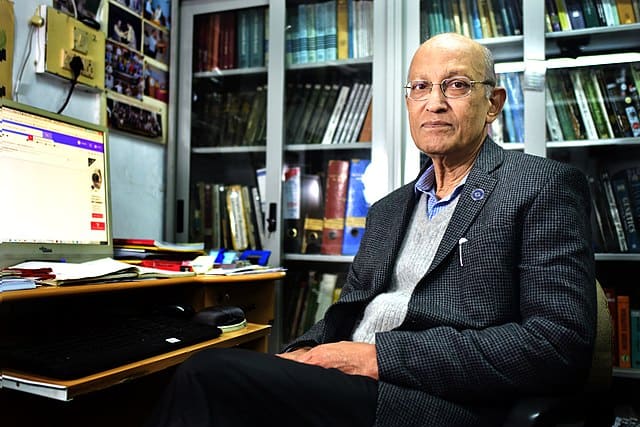
Subhash Chandra Lakhotia (born 1945) is an Indian cytogeneticist, academic, Distinguished Professor of zoology, and INSA senior scientist at Banaras Hindu University. He is known for his pioneering researches on Drosophila with regard to its chromosome organization and replication. A Raja Ramanna fellow of the Department of Science and Technology and the Department of Atomic Energy, he is an elected fellow of all three major Indian science academies: Indian National Science Academy, Indian Academy of Sciences and National Academy of Sciences, India. The Council of Scientific and Industrial Research, the apex agency of the Government of India for scientific research, awarded him the Shanti Swarup Bhatnagar Prize for Science and Technology, one of the highest Indian science awards, in 1989, for his contributions to biological sciences.
Read More About Subhash Chandra Lakhotia / Source
Subhash Kak
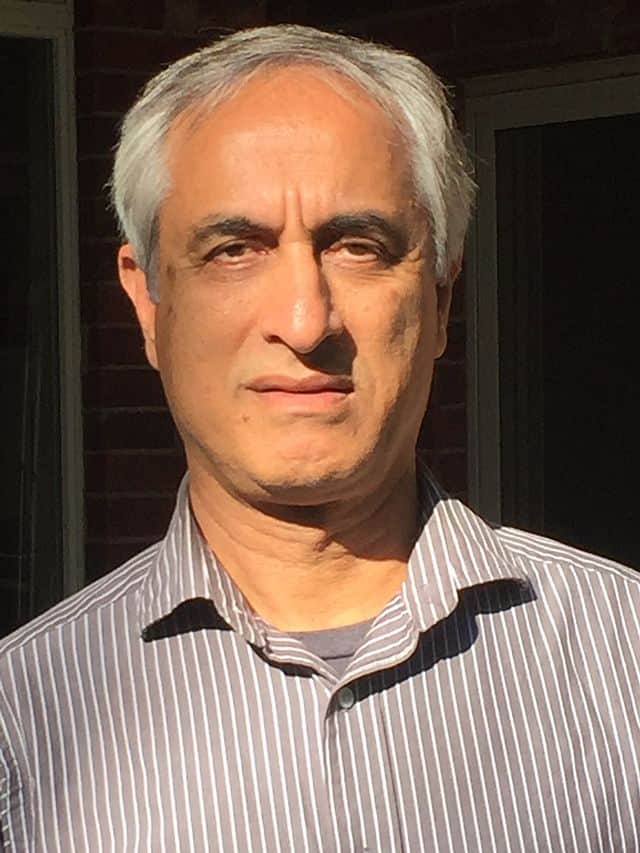
Subhash Kak (born 26 March 1947, Srinagar) is an Indian-American computer scientist and a Hindutva-based historical revisionist. He is the Regents Professor of Computer Science Department at Oklahoma State University–Stillwater, an honorary visiting professor of engineering at Jawaharlal Nehru University, and a member of the Indian Prime Minister’s Science, Technology and Innovation Advisory Council (PM-STIAC).Kak has published on the history of science, the philosophy of science, ancient astronomy, and the history of mathematics. Kak has also published on archaeoastronomy, and advocated the idea of Indigenous Aryans. Scholars have rejected his theories on these topics in entirety, and his writings have been heavily criticized. In 2019, the Government of India awarded him with Padma Shri, the fourth highest civilian award in India.
Read More About Subhash Kak / Source
Subhendu Guha
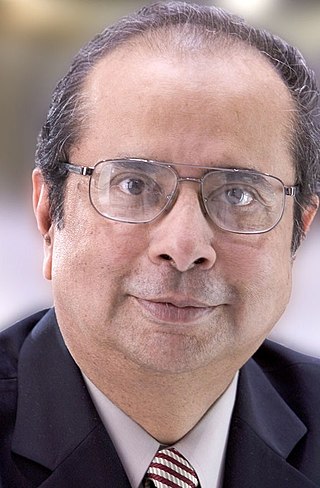
Subhendu Guha is an Indian American photovoltaic scientist who invented flexible Solar shingles (photovoltaic shingles). He is known for his pioneering work in Amorphous silicon and Nanocrystalline silicon. In 1998 Dr Guha invented flexible solar cells that can be directly applied to residential roof tops.
Read More About Subhendu Guha / Source
Subrata Roy

Subrata Roy is an India-born American inventor, educator, and scientist known for his work in plasma-based flow control and plasma-based self-sterilizing technology. He is a professor of Mechanical and Aerospace Engineering at the University of Florida and the founding director of the Applied Physics Research Group at the University of Florida.
Read More About Subrata Roy / Source
Sujoy K. Guha
Sujoy Kumar Guha is an Indian biomedical engineer. He was born in Patna, India, 20 June 1940.He did his undergraduate degree (B.Tech.) in electrical engineering from IIT Kharagpur, followed by a master’s degree in electrical engineering at IIT, and another Master’s degree from the University of Illinois, Urbana-Champaign. He later received his Ph.D. in medical physiology from St. Louis University. He then founded the Centre for Biomedical Engineering [1], IIT Delhi and AIIMS and also obtained his MBBS degree from the University College of Medical Sciences, Delhi University. One of the founders of biomedical engineering in India, Prof. Guha is internationally known in the areas of rehabilitation engineering, bioengineering in reproductive medicine and technology for rural health care. He has received several awards and has more than 100 research papers in cited journals. In 2003 he became a chair professor at IIT Kharagpur. He was awarded with Padma Shri, India’s fourth-highest civilian honor in 2020. His major contributions have been in the invention and development of non-hormonal polymer-based injectable male contraceptive (RISUG) for which the Final Phase-III Clinical were completed in 2019. Problem-solving at a national level regarding contraceptives in mass usage, especially Copper T;individualized spot air-conditioning system for hospital patients and rehabilitation of the blind, with emphasis on opening automobile repair as an employment avenue.
Read More About Sujoy K. Guha / Source
Sunder Lal Hora
Dr Sunder Lal Hora FRSE FLS (2 May 1896 – 8 December 1955) was an Indian ichthyologist and was known for his biogeographical theory on the affinities of Western Ghats and Indo-Malayan forms. He was the second Indian director of the Zoological Survey of India, succeeding Baini Prashad.
Read More About Sunder Lal Hora / Source
Sunil Mukhi

Sunil Mukhi is an Indian theoretical physicist working in the areas of string theory, quantum field theory and particle physics. Currently he is a physics professor at IISER Pune. He is also the dean of faculty here. He obtained a B.Sc. degree at St. Xavier’s College, Mumbai and a Ph.D. in Theoretical Physics in 1981 from Stony Brook University (also called the State University of New York at Stony Brook). After spending two years as a post-doctoral fellow at the International Centre for Theoretical Physics at Trieste, Italy, he returned to India where he worked at the Tata Institute of Fundamental Research in Mumbai, India from 1984 to 2012. In 2012 he left the Tata Institute of Fundamental Research to join the Indian Institute of Science Education and Research, Pune as the head of the Physics Department, a position he held until 2018. In 2019 he became Dean, Faculty at the same institute.
Read More About Sunil Mukhi / Source
Surendra Nath Pandeya
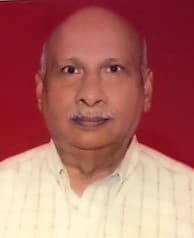
Professor Surendra Nath Pandeya (1939 – 2012) was an Indian medicinal and organic chemist. He made several contributions in the design and discovery of anticonvulsant, antitubercular, anti-HIV, anti-cancer, antibacterial, and antimicrobial molecules. His research focused on semicarbazones, Mannich bases, thiadiazoles, benzothiazoles, and oxindole compounds.
Read More About Surendra Nath Pandeya / Source
Suri Bhagavantam
Suri Bhagavantam ( 14 October 1909 – 6 February 1989) was an Indian scientist and administrator. He was Vice chancellor of Osmania University and Director of Indian Institute of Science and Defence Research and Development Organisation. Bhagavantam was born in Agiripalli, a village in Andhra Pradesh. After primary education in Gudivada, he obtained a Bachelor of Science degree in physics from Nizam College, Hyderabad, under Madras University. Impressed by the discoveries of C. V. Raman, he relocated to Calcutta and joined him in 1928. After the Nobel Prize-winning discovery, Raman chose Bhagavantam as his collaborator to further his research work. He earned his master’s degree in science from Madras University during this period.
Read More About Suri Bhagavantam / Source
Sushanta Kumar Dattagupta

Sushanta Kumar Dattagupta, known better as Sushanta Dattagupta, is an Indian Condensed matter physicist. Serving as a faculty member (later director) at the SN Bose National Centre for Basic Sciences in Kolkata, Dattagupta was appointed Vice-chancellor of Visva-Bharati University. However, it was soon revealed that he was guilty of persistent sexual harassment of colleagues, financial impropriety and embezzlement. The charges were sufficiently serious to attract a high-level inquiry by the Government of India and on 15 February 2016, he was dismissed from his position as Vice-Chancellor of Visva Bharati University by the President of India. Following the sacking, Duttagupta was charged with corruption. However, he was later cleared of all these charges by the court through an order dated April 2, 2018.
Read More About Sushanta Kumar Dattagupta / Source
Swapan Chattopadhyay
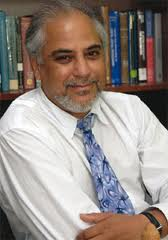
Swapan Chattopadhyay CorrFRSE (born December 26, 1951) is an Indian American physicist noted for his pioneering contributions of innovative concepts, techniques and developments in high energy particle colliders, coherent and incoherent light sources, ultrafast sciences in the femto- and atto- second regimes, superconducting linear accelerators and various applications of interaction of particle and light beams. He has directly contributed to the development of many accelerators around the world, e.g. the Super Proton-Antiproton Synchrotron at CERN, the Advanced Light Source at Berkeley, the asymmetric-energy electron-positron collider PEP-II at Stanford, the Continuous Electron Beam Accelerator facility (CEBAF) at Jefferson Lab and the Free-Electron Lasers at Jefferson and Daresbury Laboratories.
Currently, Chattopadhyay holds the Presidential Chair of Research, Scholarship and Artistry at Northern Illinois University (NIU) where he is Professor of Physics and Director of Accelerator Research. Concurrently he holds a joint appointment with Fermi National Accelerator Laboratory (Fermilab) where he is a distinguished scientist, member of the director’s senior leadership team and director of the Cooperative Research and Development Agreement between Fermilab and NIU.
Read More About Swapan Chattopadhyay / Source
Shiva Ayyadurai
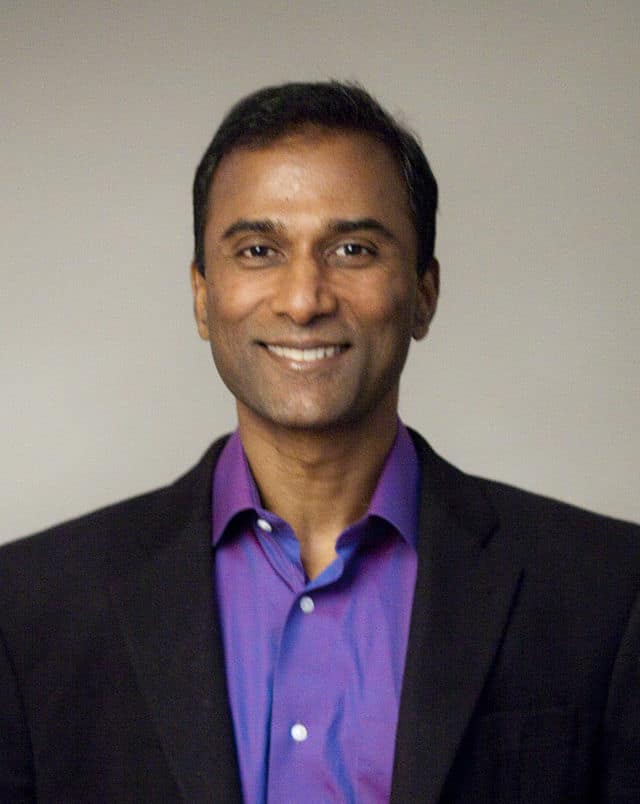
V. A. Shiva Ayyadurai (born Vellayappa Ayyadurai Shiva, December 2, 1963) is an Indian-American scientist, engineer, politician, entrepreneur, and promoter of conspiracy theories and unfounded medical claims. He is notable for his widely disputed claim to be the “inventor of email”, based on the electronic mail software called “EMAIL” he wrote as a New Jersey high school student in the late 1970s. Initial reports that repeated Ayyadurai’s assertion—from organizations such as The Washington Post and the Smithsonian Institution—were followed by public retractions. These corrections were triggered by objections from historians and ARPANET pioneers who pointed out that email was already actively used in the early 1970s.Ayyadurai also attracted attention for two reports: the first questioning the working conditions of India’s largest scientific agency; the second questioning the safety of genetically modified soybeans. During the COVID-19 pandemic, Ayyadurai became known for a social media disinformation campaign about the coronavirus; spreading conspiracy theories about the cause of coronavirus; promoting unfounded COVID-19 treatments; and campaigning to fire Anthony Fauci for allegedly being a so-called “deep state” actor.
Read More About Shiva Ayyadurai / Source
Subbayya Sivasankaranarayana Pillai

Subbayya Sivasankaranarayana Pillai (1901–1950) was an Indian mathematician specialising in number theory. His contribution to Waring’s problem was described in 1950 by K. S. Chandrasekharan as “almost certainly his best piece of work and one of the very best achievements in Indian Mathematics since Ramanujan”.
Read More About Subbayya Sivasankaranarayana Pillai / Source
S. Anantha Ramakrishna
Subramanian Anantha Ramakrishna (born 30 November 1972) is a professor of physics in Indian Institute of Technology Kanpur specializing in optics and condensed matter physics. He was awarded the Shanti Swarup Bhatnagar Prize for Science and Technology, India’s highest prize for excellence in science, mathematics and technology, in the physical sciences category in the year 2016. Ramakrishna obtained M.Sc. degree from Indian Institute of Technology Kanpur in 1995 after pursuing the integrated 5-year M.Sc. programme and secured Ph.D. from Raman Research Institute, Bangalore, in 2001 for a thesis titled “Light transport and localization in Active and passive random media” written under the supervision of Prof. N. Kumar. He spent two years in Imperial College, London, as a postdoctoral researcher and joined Indian Institute of Technology Kanpur as an assistant professor in May 2003, where he now holds the position of professor.
Read More About S. Anantha Ramakrishna / Source
Surindar Kumar Trehan
Surindar Kumar Trehan (S.K. Trehan) was an Indian mathematician who specialised in non-linear stability in magnetohydrodynamics.
He was awarded in 1976 the Shanti Swarup Bhatnagar Prize for Science and Technology, the highest science award in India, in the mathematical sciences category. Prof. Trehan has done significant work on stability of force-free magnetic fields, stability of jets and cylinders and stability of inhomogeneous plasmas. His work on the mathematical treatment of gaseous polytropes in the presence of a magnetic field is a breakthrough in this area. He has also done important work on hydromagnetic waves and rotating gaseous masses.
Read More About Surindar Kumar Trehan / Source
S. Somanath
S. Somanath is an Indian aerospace engineer and rocket technologist. He is currently the Director of Vikram Sarabhai Space Centre (VSSC), Thiruvananthapuram. He also served as the Director of Liquid Propulsion Systems Centre (LPSC), Thiruvananthapuram. Somanath is known for his contributions to launch vehicle design, particularly in the areas of launch vehicle systems engineering, structural design, structural dynamics, and pyrotechnics.He is focussed for upgradation of launch vehicles and GSAT –MKII (F09) for communication satellites, GSAT-6A and PSLV-C41 for Remote sensing satellites.
Read More About S. Somanath / Source
Siva Brata Bhattacherjee
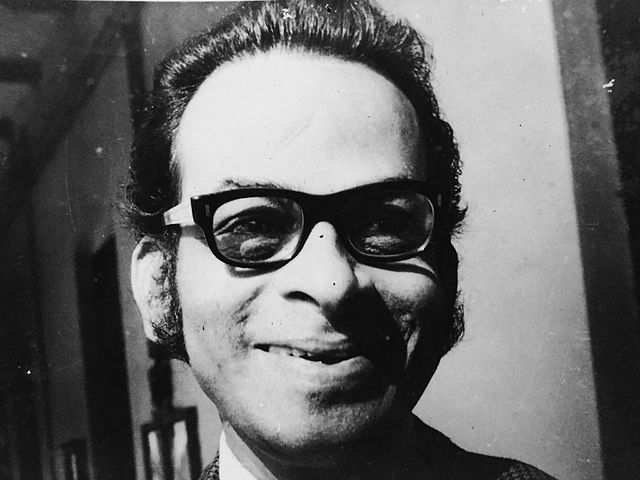
Siva Brata (Sibabrata) Bhattacherjee (1921–2003) was a professor of physics at the University of Calcutta. He studied with the physicist Satyendra Nath Bose, and completed his doctoral thesis in solid-state physics under Bose’s supervision at University College of Science (commonly known as Rajabazar Science College). In 1945, he joined the Khaira Laboratory of Physics at the Science College, and specialised in the field of X-ray crystallography. Dr Bhattacherjee also served as a faculty member of the Department of Technology at the erstwhile University of Manchester Institute of Science and Technology.He was married to Lilabati Bhattacharjee, Director (Mineral Physics) of the Geological Survey of India. He is survived by their son Dr Subrata Bhattacherjee and daughter Mrs Sonali Karmakar.
Read More About Siva Brata Bhattacherjee / Source
Surajit Chandra Sinha
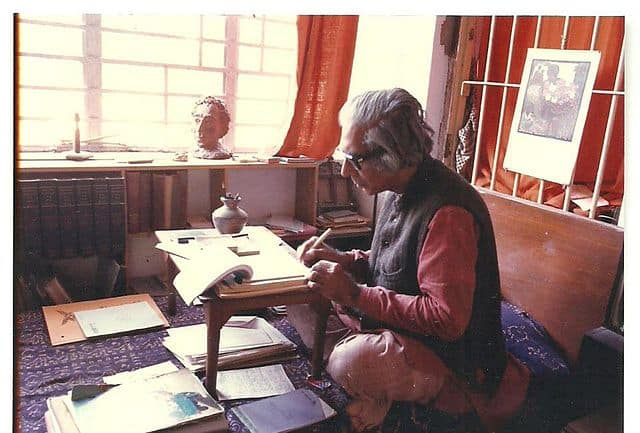
Surajit Chandra Sinha (1926 – 27 February 2002) was an Indian anthropologist born in Durgapur Upazila, of Netrokona District, in Mymensingh Division, then in Bengal and now in Bangladesh. He was the eldest son of Maharaja Bhupendra Chandra Sinha of Susang, who was a student of Presidency College, Calcutta and a well-known landscape painter. His mother was a daughter of Jogendranath Moitra, the zamindar of Sithlai in Pabna District. Her family members traced their origins to the reign of Emperor Jahangir. Sinha’s youngest sister is Purba Dam, the eminent exponent of Rabindrasangeet.
Read More About Surajit Chandra Sinha / Source
Sisir Kumar Mitra
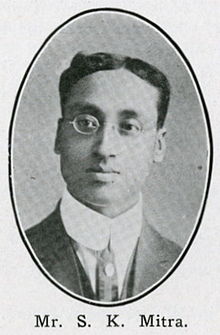
Sisir Kumar Mitra (or Shishirkumar Mitra) MBE, FNI, FASB, FIAS, FRS (24 October 1890 – 13 August 1963) was an Indian physicist. Mitra was born in his father’s hometown of Konnagar, a suburb of Kolkata (then Calcutta) located in the Hooghly District in the Bengal Presidency (present-day West Bengal). He was the third son of Joykrishna Mitra, who was a schoolteacher at the time of Mitra’s birth, and Saratkumari, a medical student whose family came from Midnapore. While Mitra’s paternal family were orthodox Hindus, his mother’s family were adherents of the progressive Brahmo Samaj, and were noted in Midnapore for their advanced outlook.
Read More About Sisir Kumar Mitra / Source
Subramania Ranganathan
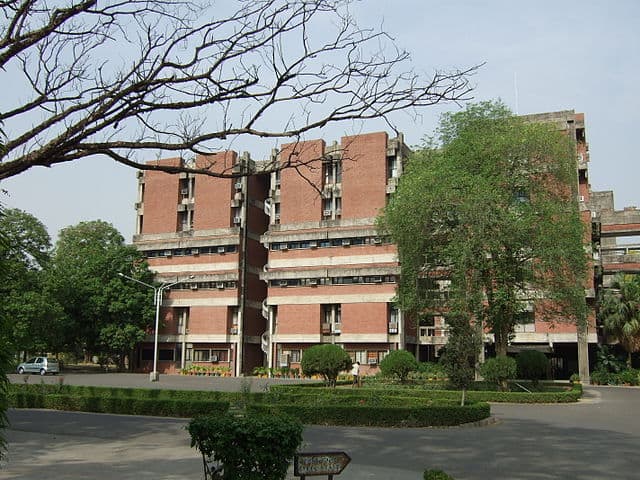
Subramania Ranganathan (1934–2016), popularly known as Ranga, was an Indian bioorganic chemist and professor and head of the department of chemistry at the Indian Institute of Technology, Kanpur. He was known for his studies on synthetic and mechanistic organic chemistry and was an elected fellow Indian National Science Academy, National Academy of Sciences, India and the Indian Academy of Sciences The Council of Scientific and Industrial Research, the apex agency of the Government of India for scientific research, awarded him the Shanti Swarup Bhatnagar Prize for Science and Technology, one of the highest Indian science awards, in 1977, for his contributions to chemical sciences.
Read More About Subramania Ranganathan / Source
Sudipta Sengupta
Sudipta Sengupta is a professor in structural geology in Jadavpur University, Calcutta, India, and a trained mountaineer. She is one of the first Indian women (along with Aditi Pant) to set foot on Antarctica. She is also popularly known in India for her book Antarctica in Bengali and numerous articles and television interviews on geosciences. She has published extensively in international peer-reviewed journals of structural geology. The Council of Scientific and Industrial Research, the apex agency of the Government of India for scientific research, awarded her the Shanti Swarup Bhatnagar Prize for Science and Technology, one of the highest Indian science awards for her contributions to Earth, Atmosphere, Ocean and Planetary Sciences in 1991.
Read More About Sudipta Sengupta / Source
Somak Raychaudhury

Somak Raychaudhury is an Indian astrophysicist. He is the Director of the Inter-University Centre for Astronomy and Astrophysics (IUCAA), Pune. He is on leave from Presidency University, Kolkata, India, where he is a Professor of Physics, and is also affiliated to the University of Birmingham, United Kingdom. He is known for his work on stellar mass black holes and supermassive black holes. His significant contributions include those in the fields of gravitational lensing, galaxy dynamics and large-scale motions in the Universe, including the Great Attractor.
Read More About Somak Raychaudhury / Source
S. A. Hussain
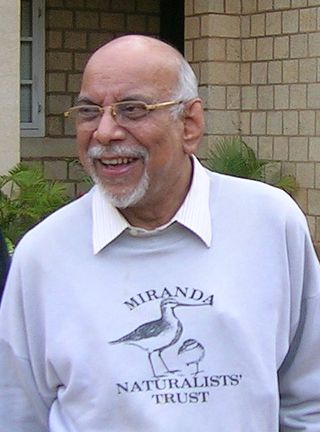
Syed Abdulla Hussain (13 August 1944 – 30 December 2009) was an Indian ornithologist. He is best known for the work he undertook at the Bombay Natural History Society (BNHS) along with Salim Ali. A species of frog Nyctibatrachus hussaini from Kudremukh near his home, was named after him but the species name later became embroiled in controversy.Hussain was born in Karkala, near Mangalore (then a part of the Madras Presidency) where his father Syed Hussain was a noted lawyer. His early education was at Basti Mission School and obtained a university degree in science from Sri Bhuvanendra College at Karkala. He applied for a field research position in the Bird Migration study project of the Bombay Natural History Society and although he had no formal education in zoology, Salim Ali found him very observant and accepted him. Hussain accompanied Ali on numerous expeditions and later conducted surveys on his own. Hussain became assistant curator of the BNHS in 1979, a senior scientist from 1985 to 1990 and then a deputy director of research until 1992. He later moved to Malaysia where he headed the Asian Wetland Bureau. He was also briefly the vice-chairman of BirdLife International. In 1974, he was part of a group that went in search of the forest owlet at a locality falsely claimed by Richard Meinertzhagen.After retiring from work, he moved back to live in Karkala, where he started the Biodiversity Initiative Trust. The organization worked locally, particularly for conservation of the Kudremukh region.
Read More About S. A. Hussain / Source
Sam Pitroda

Satyan Pitroda popularly known as Sam Pitroda (born 4th May 1942) is an Indian telecom engineer, inventor and entrepreneur. He is popularly known as the Father of India’s Computer and IT Revolution as he helped Prime Minister Rajiv Gandhi in bringing computerization as an advisor to the PM. He was also an advisor to the PM during Dr. Manmohan Singh’s tenure. He was born Titlagarh in the eastern Indian state of Odisha. to a Gujarati family.
Read More About Sam Pitroda / Source
Syed Zahoor Qasim
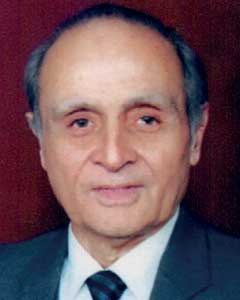
Syed Zahoor Qasim (31 December 1926 – 20 October 2015) was an Indian marine biologist. Qasim helped lead India’s exploration to Antarctica and guided the other seven expeditions from 1981 to 1988. He was a Member of the Planning Commission of India from 1991 to 1996. He was the Vice Chancellor of Jamia Milia Islamia from 1989 to 1991 and an Honorary Professor of universities including Aligarh Muslim University, Madurai Kamaraj University, Anna Malai University, Indian Institute of Technology Madras, and Jamia Millia Islamia.
Read More About Syed Zahoor Qasim / Source
Sudhir Kumar Vempati
Sudhir Kumar Vempati is an Indian high energy physicist and a professor at the Centre for High Energy Physics of the Indian Institute of Science. He is known for his studies in neutrino physics, especially Large Hadron Collider Inverse problem and has published a number of articles, ResearchGate, an online repository of scientific articles has listed 76 of them. He is a member of the Indo-French Collaboration on High Energy Physics. The Council of Scientific and Industrial Research, the apex agency of the Government of India for scientific research, awarded him the Shanti Swarup Bhatnagar Prize for Science and Technology, one of the highest Indian science awards, for his contributions to physical sciences in 2016.
Read More About Sudhir Kumar Vempati / Source
Shubha Tole
Shubha Tole (born August 1967) is an Indian neuroscientist, Professor and Principal Investigator at the Tata Institute of Fundamental Research in Mumbai, India. Her research involves investigating the development and evolution of the mammalian brain, and she has won many accolades for her work. She is famous for having discovered a gene that is crucial to the proper formation of the hippocampus, amygdala, and cortex of the brain, winning the Infosys Prize in the Life Sciences category in 2014.
Read More About Shubha Tole / Source
Suchitra Sebastian
Suchitra Sebastian is a condensed matter physicist at Cavendish Laboratory, University of Cambridge. She is known for her work in quantum materials. In particular, she is known for the discovery of insulating materials which display simultaneous conduction-like behaviour under high magnetic fields. The World Economic Forum named her one of thirty Exceptional Young Scientists in 2013.
Read More About Suchitra Sebastian / Source
S. K. Shivakumar
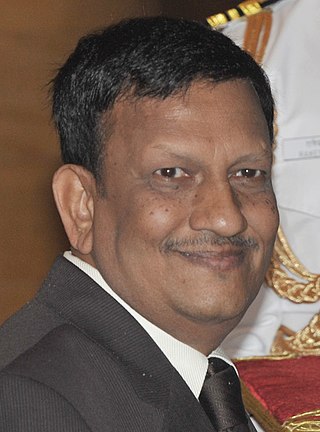
S. K. Shivakumar (1953 – 13 April 2019) was an Indian scientist from Karnataka state who worked at the Indian Space Research Organisation (ISRO) centres. He was awarded the Padma Shri, the fourth highest civilian award of India, in 2015.
Read More About S. K. Shivakumar / Source
Shya Chitaley (Shyamala Chitaley )
Shyamala “Shya” Chitaley (15 February 1918 – 31 March 2013) was an Indian American Paleobotanist who had a nearly 60-year career of teaching and research in both the United States and India. She was the founder and first curator of the paleobotany department at the Cleveland Museum of Natural History, winner of the 2010 Botanical Society of America Award for Contributions to Paleobotany, and author of approximately 150 publications.
Read More About Shya Chitaley (Shyamala Chitaley ) / Source
Shobhona Sharma
Shobhona Sharma (born 5 February 1953) is a professor specializing in immunology, molecular biology, and biochemistry at the Tata Institute of Fundamental Research, Mumbai. She is also the chairperson of the Department of Biological Sciences. She is a Fellow of the Indian Academy of Sciences and the Indian National Science Academy.
Read More About Shobhona Sharma / Source
S. Pancharatnam
Shivaramakrishnan Pancharatnam (1934–1969) was an Indian physicist who did significant work in the field of optics. He is noted for his discovery of a type of geometric phase sometimes known as Pancharatnam phase for polarized beams passing through crystals. He was born in Calcutta in West Bengal, India in 1934. He was elected a Fellow of the Indian Academy of Sciences at the early age of 25. He was a reader at the Department of studies in Physics, University of Mysore from 1961-1964. From 1964 until his death in 1969 at the age of 35 he was a Research Fellow of St Catherine’s College, Oxford, working in association with George William Series. His publications for this period were mainly concerned with the theory of effects found in experiments on optical pumping, e.g. double refraction in a gas due to spin alignment. Professor Series has written an introduction to the life and work of Pancharatnam. He also prepared, for the Proceedings of the Royal Society, the last three papers from notes left by Pancharatnam.In 1956, Pancharatnam was studying interference figures produced by light waves in crystal plates, under his advisor C. V. Raman, when he discovered the properties of what is now known as the geometric phase, and which predated Michael Berry’s work on the topic from 1983.
Read More About S. Pancharatnam / Source
Shiv Ram Kashyap
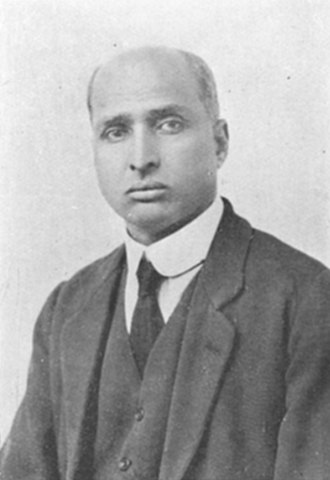
Shiv Ram Kashyap (6 November 1882 – 26 November 1934) was a botanist in British India. He was a specialist on the bryophytes especially from the Himalayan region. He has been called the father of Indian bryology. Kashyap was born in Jhelum District in a family that had members in the army. He studied at the University of Punjab in Lahore, receiving a medical diploma from Agra in 1904. He worked briefly in the medical service of the United Provinces during which time he privately appeared and qualified for the B.Sc. In 1909 he obtained a M.Sc. in botany. Obtaining the Arnold and Maclagan Gold medals, he went to Cambridge University in 1910 and passed the Natural Science Tripos in 1912. He then joined the Government College at Lahore as a professor of biology founding the botany department in 1919. He was a founding member of the Indian Botanical Society in 1920 and edited its journal.
Read More About Shiv Ram Kashyap / Source
Sambhu Nath De
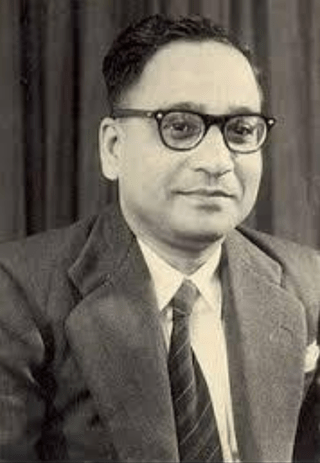
Sambhunath De (1 February 1915 – 15 April 1985) was an Indian-Bengali medical scientist and researcher, who discovered the cholera toxin, the animal model of cholera, and successfully demonstrated the method of transmission of cholera pathogen Vibrio cholerae.
Read More About Sambhu Nath De / Source
Shyama Charan Dube
Shyama Charan Dube (S.C.Dube) (25 July 1922 – 4 February 1996) was an Indian anthropologist and sociologist and former president of the Indian Sociological Society (1975–76). Born in Madhya Pradesh, India, Dube earned his Master’s Degree in Political Science from Nagpur University and started his professional career as a lecturer in Hislop College in Nagpur, Maharashtra. He later joined the Department of Political Science at the University of Lucknow.
Read More About Shyama Charan Dube / Source
T. V. Ramakrishnan
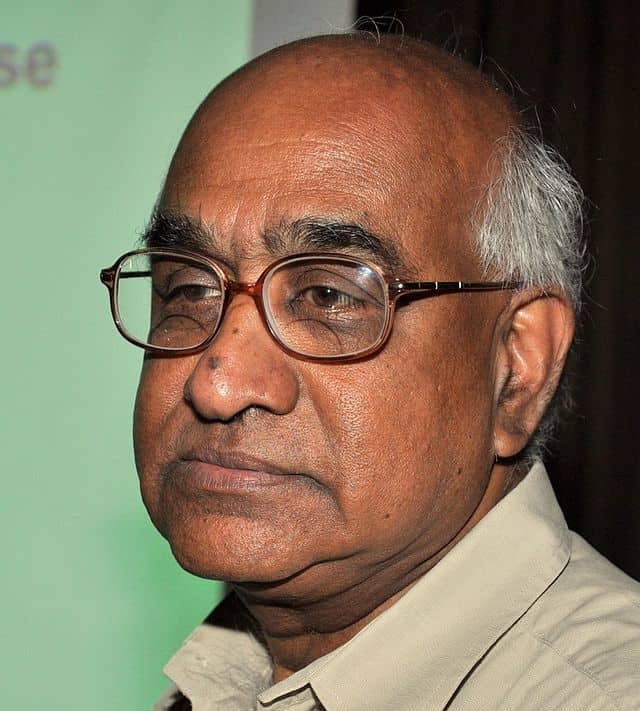
Tiruppattur Venkatachalamurti Ramakrishnan (born 14 August 1941) is an Indian theoretical physicist known for his contributions in condensed matter physics. He is at present DAE Homi Bhabha Professor of Physics at Benaras Hindu University and also the chancellor of Tripura University.
Read More About T. V. Ramakrishnan / Source
T. V. Raman
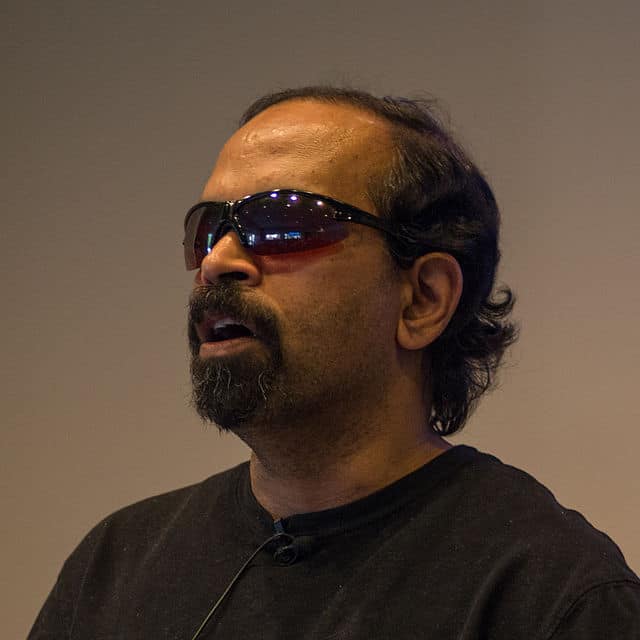
T. V. Raman (born 4 May 1965) is a computer scientist who specializes in accessibility research. His research interests are primarily in the areas of auditory user interfaces and structured electronic documents. He has worked on speech interaction and markup technologies in the context of the World Wide Web at Digital’s Cambridge Research Lab (CRL), Adobe Systems and IBM Research. He currently works at Google Research. Raman has himself been partially sighted since birth, and blind since the age of 14.
Read More About T. V. Raman / Source
Tapan Misra
Tapan Misra is an Indian scientist who was the director of Space Applications Centre, Indian Space Research Organisation. Tapan Misra was born in 1961 in Rayagada, Odisha to father Sidheshwar Misra and mother Kamala Misra. He had qualified the IIT Joint Entrance examination with an all India rank of 85 but opted to study at the Jadavpur University. He has studied Electronics and Telecommunication Engineering in 1984 from Jadavpur University, Kolkata as J C Bose National Talent Search (JBNSTS) Scholar.
Read More About Tapan Misra / Source
Tej P. Singh
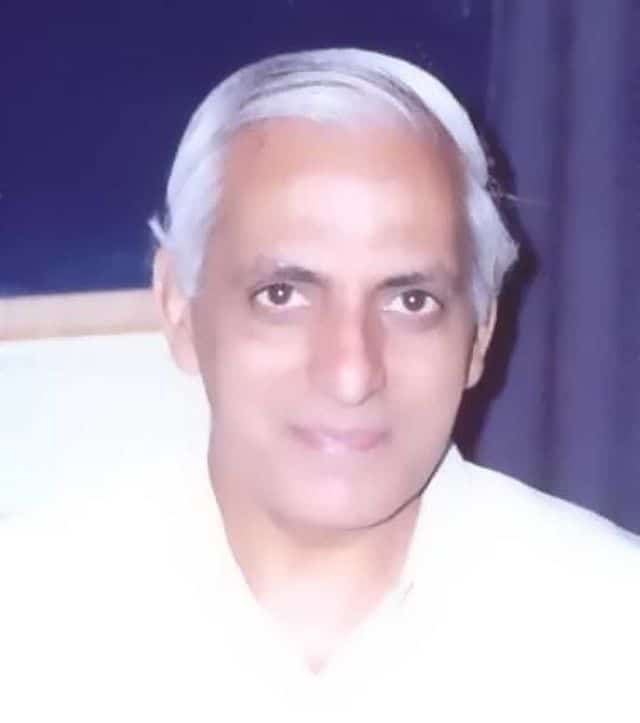
Tej Pal Singh (born 1944) is an Indian biophysicist known for his work in the fields of Rational Structure-based drug design, Protein Structure biology and X-ray crystallography. He has played an active role in the development of drug design in the fields of Antibacterial therapeutics, Tuberculosis, Inflammation, Cancer and Gastropathy.He is first Indian to receive all the six Ramachandran awards of the country. He is a fellow of six academies, namely, the Third World Academy of Sciences, Indian National Science Academy, National Academy of Sciences Indian Academy of Sciences, Alexander von Humboldt Foundation and Biotech Research Society of India.
Read More About Tej P. Singh / Source
Thanu Padmanabhan
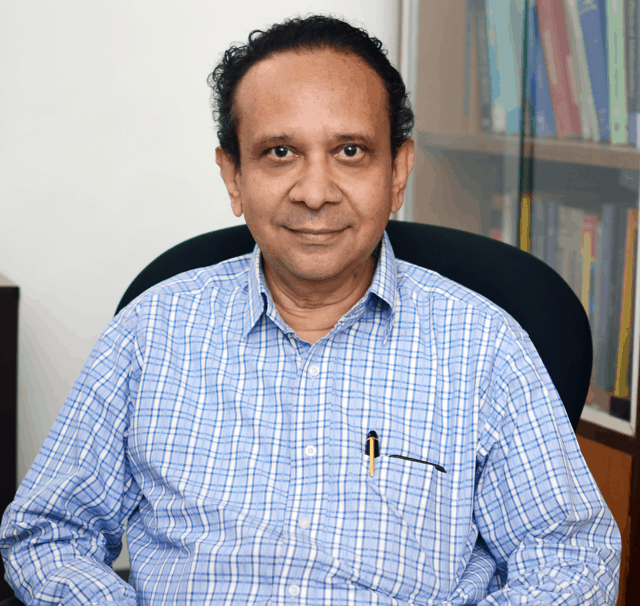
Thanu Padmanabhan is an Indian theoretical physicist and cosmologist whose research spans a wide variety of topics in Gravitation, Structure formation in the universe and Quantum Gravity. He has published nearly 300 papers and reviews in international journals and ten books in these areas. He has made several contributions related to the analysis and modelling of dark energy in the universe and the interpretation of gravity as an emergent phenomenon. He is currently a Distinguished Professor at the Inter-University Centre for Astronomy and Astrophysics, (IUCAA) at Pune, India.
Read More About Thanu Padmanabhan / Source
Thirumalachari Ramasami
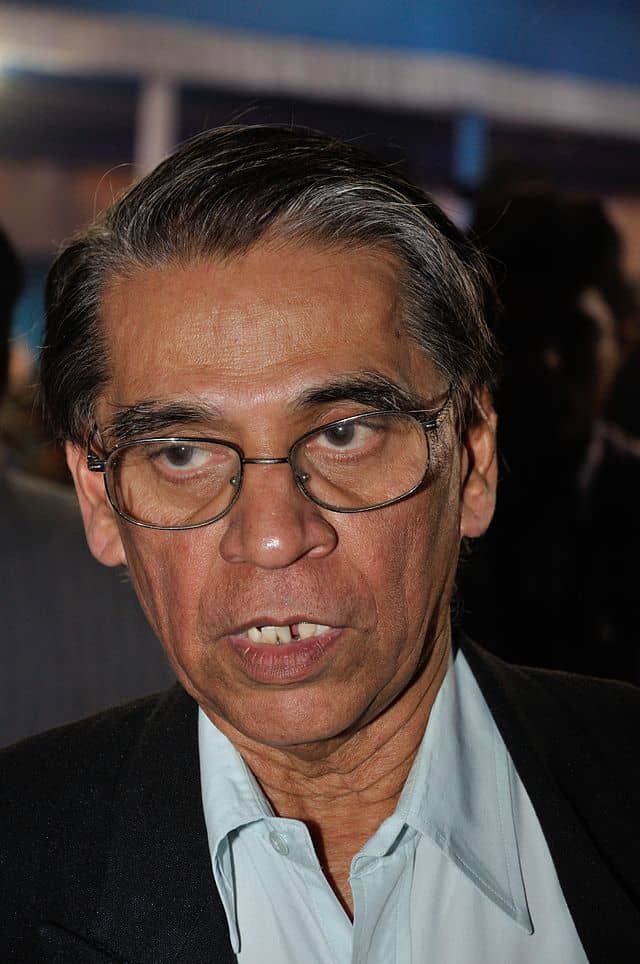
Thirumalachari Ramasami is the former Indian Science and Technology Secretary. He assumed charge in May 2006. Prior to this assignment, he served as the Director of the Central Leather Research Institute, Chennai, India. He is a distinguished researcher and leather scientist.
He was awarded India’s National Civilian Honour the Padma Shri for excellence in Science and Engineering in 2001 and the Padma Bhushan in 2014. He was awarded the Shanti Swarup Bhatnagar Award, the highest award for science in India, for notable and outstanding research in Chemical Sciences in 1993.
Read More About Thirumalachari Ramasami / Source
Tathagat Avatar Tulsi

Tathagat Avatar Tulsi (born 9 September 1987) is an Indian physicist, best known as a child prodigy. He completed high school at the age of 9, earned a B.Sc. at the age of 10 and a M.Sc. at the age of 12 from Patna Science College (Patna University). In August 2009, he got his Ph.D. from the Indian Institute of Science, Bangalore at the age of 22. In July 2010, he was offered a position as Assistant Professor on contract (a non-permanent teaching position for fresh Ph.D. graduates) at IIT Mumbai.When he was admitted to a PhD program at the age of 17, the then dean of the physics department at the Indian Institute of Science, replying to a journalist’s query, described him as a “good boy, very lovable and working to achieve his goals”; however, he declined to comment on the description of Tulsi as a prodigy.
Read More About Tathagat Avatar Tulsi / Source
Timothy A. Gonsalves
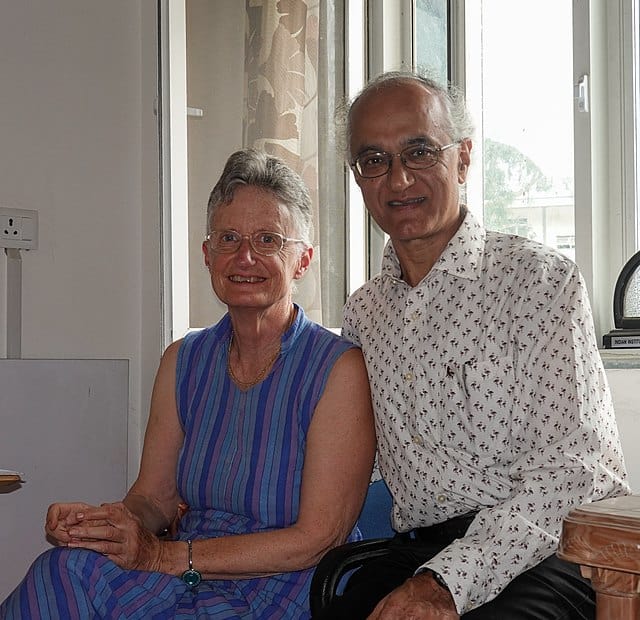
Timothy Aloysius Gonsalves (born 20 June 1954) is a computer scientist and professor. During his academic career, he has been founder/co-founder of several institutions and companies. These include founder of Nilgiri Networks (P) Ltd, co-founder of NMSWorks Software (P) Ltd, co-founder of the TeNeT Group and RTBI at IIT Madras, and IIT Mandi Catalyst. Most notably, he was the founding Director of IIT Mandi in the Himalayan state of Himachal Pradesh from Jan. 2010 to Jun. 2020. He is currently Professor Emeritus (Honorary) at IIT Mandi. His academic interests include education for engineers of the future, computer networks, distributed systems, telecom software and performance evaluation among others.
Read More About Timothy A. Gonsalves / Source
Thekkethil Kochandy Alex
Thekkethil Kochandy Alex is an Indian space scientist. He was the director of the ISRO Satellite Centre (ISAC) of Indian Space Research Organisation (ISRO) (2008–2012) and Member, Space Commission. He specialized in electro-optic systems and satellite technology. Starting with the first Indian satellite Aryabhata he has been responsible for the sensor systems in all the Indian satellites. Under his leadership the Laboratory for Electro Optics Systems (LEOS) was established in 1993 and from the inception he was its director till 2008. He was conferred “Dr. Vikram Sarabhai Distinguished Professorship” in 2011.
Read More About Thekkethil Kochandy Alex / Source
Tanjore Ramachandra Anantharaman
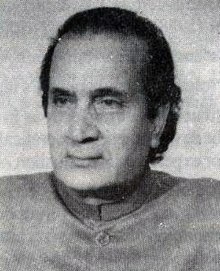
Tanjore Ramachandra Anantharaman (25 November 1927 – 19 June 2009) was one of India’s pre-eminent metallurgists and materials scientists. Anantharaman was born in Tamil Nadu, India, on 25 November 1927. He obtained his BSc (Hons.) in chemistry from Madras University in 1947, D.I.I.Sc. in Metallurgy from the Indian Institute of Science (Bangalore) in 1950 and an MSc degree in metallurgical chemistry from Madras University in 1951. After securing the first rank in all university examinations, he was awarded the only Indian Rhodes Scholarship of 1951 for his doctorate research in physical metallurgy at Oxford University (England). In 1954, he received a D.Phil. from Oxford and was in 1980 subsequently awarded the higher doctoral degree D.Sc. from the same university in recognition of his research output in many areas of metallurgy and materials science.
Read More About Tanjore Ramachandra Anantharaman / Source
U. Aswathanarayana

Uppugunduri Aswathanarayana (July 1, 1928 – March 6, 2016) was the Honorary Director of the Mahadevan International Centre for Water Resources Management, India. He is counted among the doyens of geology in independent India and revered as a leading scientist from Andhra Pradesh. He studied and taught geology at Andhra University, India; California Institute of Technology, Pasadena, California; Oxford University, United Kingdom, University of Western Ontario, Canada; University of Sagar, India; University of Dar es Salaam, Tanzania and Universidade Eduardo Mondlane, Mozambique. He has served as the Dean and Director of Centre for Advanced Study in Geology, University of Sagar, India; Head of Department of Geology, University of Dar es Salaam, Tanzania; Director, State Mining Corporation, Tanzania and Adviser on Environment and Technology, Mozambique. He also served as Consultant to UNDP, World Bank, Louis Berger Inc., and SIDA, while in Mozambique.
Read More About U. Aswathanarayana / Source
Udupi Ramachandra Rao

Udupi Ramachandra Rao (10 March 1932 – 24 July 2017) was an Indian space scientist and chairman of the Indian Space Research Organisation. He was also the Chairman of the Governing Council of the Physical Research Laboratory at Ahmedabad and Nehru Planetarium at Bengaluru and chancellor of the Indian Institute for Space Science and Technology (IIST) at Thiruvananthapuram.Rao was awarded the Padma Bhushan by the Government of India in 1976, and Padma Vibhushan in 2017. He was inducted into the Satellite Hall of Fame, Washington, on 19 March 2013 at a ceremony organised by the Society of Satellite Professionals International. With this he became the first Indian to be inducted. He was also to be inducted in International Astronautics Federation (IAF) on 15 May 2016. He was also the first Indian again to achieve such a feat.
Read More About Udupi Ramachandra Rao / Source
Uma Ramakrishnan
Uma Ramakrishnan is an Indian molecular ecologist working as an assistant professor at National Centre for Biological Sciences (NCBS), Bangalore. Her research investigates population genetics and evolutionary history of mammals in the Indian subcontinent, including work to save India’s tigers. She is the first Indian to receive the Parker-Gentry Award. In July 2019, she was elected as a fellow to the Indian National Science Academy.
Read More About Uma Ramakrishnan / Source
Uddhab Bharali
Uddhab Bharali, (born 7 April 1962) is an Indian inventor from the Lakhimpur district of Assam. Bharali is credited with about 118 innovations, starting from the late 1980s. Bharali was born on 7 April 1962 in the Lakhimpur district of Assam. His father was a businessman.
Read More About Uddhab Bharali / Source
Upinder Singh Bhalla

Upinder Singh Bhalla (born 1963) is an Indian computational neuroscientist, academic and a professor at National Centre for Biological Sciences of the Tata Institute of Fundamental Research. He is known for his studies on neuronal and synaptic signalling in memory and olfactory coding using computational and experimental methods and is an elected fellow of the Indian Academy of Sciences and the Indian National Science Academy. The Council of Scientific and Industrial Research, the apex agency of the Government of India for scientific research, awarded him the Shanti Swarup Bhatnagar Prize for Science and Technology, one of the highest Indian science awards, in 2007, for his contributions to biological sciences. The Infosys Science Foundation awarded him the Infosys Prize 2017 in Life Sciences for his pioneering contributions to the understanding of the brain’s computational machinery.
Read More About Upinder Singh Bhalla / Source
V. Balakrishnan
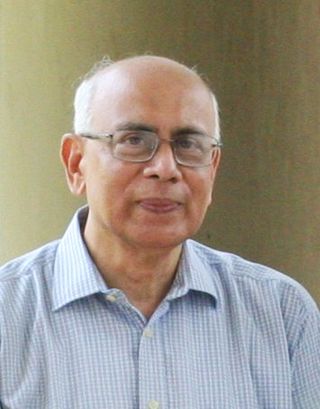
V. Balakrishnan (born 1943 as Venkataraman Balakrishnan) is an Indian theoretical physicist who has worked in a number of fields of areas, including particle physics, many-body theory, the mechanical behavior of solids, dynamical systems, stochastic processes, and quantum dynamics. He is an accomplished researcher who has made important contributions to the theory of anelasticity, continuous-time random walks, and recurrences in dynamical systems.He received his PhD from Brandeis University in 1970. After a decade at TIFR and IGCAR Kalpakkam, he joined IIT Madras as a Professor of Physics in 1980. He was elected a Fellow of the Indian Academy of Sciences in 1985.In addition to his research, Balakrishnan is a popular and noted teacher of physics, known for his engaging teaching style, which combines physical insight, mathematical rigor, and wry wit. He has taught a wide range of courses over the past 30 years from introductory physics to quantum field theory to dynamical systems. Two of his courses (38 lectures in Classical Physics and 31 in Quantum Physics) taught at IIT Madras through National Programme on Technology Enhanced Learning are available on NPTEL’s channel on YouTube, and are extremely popular, having received about 2.3 million views in all (as of December 2015).
Read More About V. Balakrishnan / Source
V. K. Saraswat
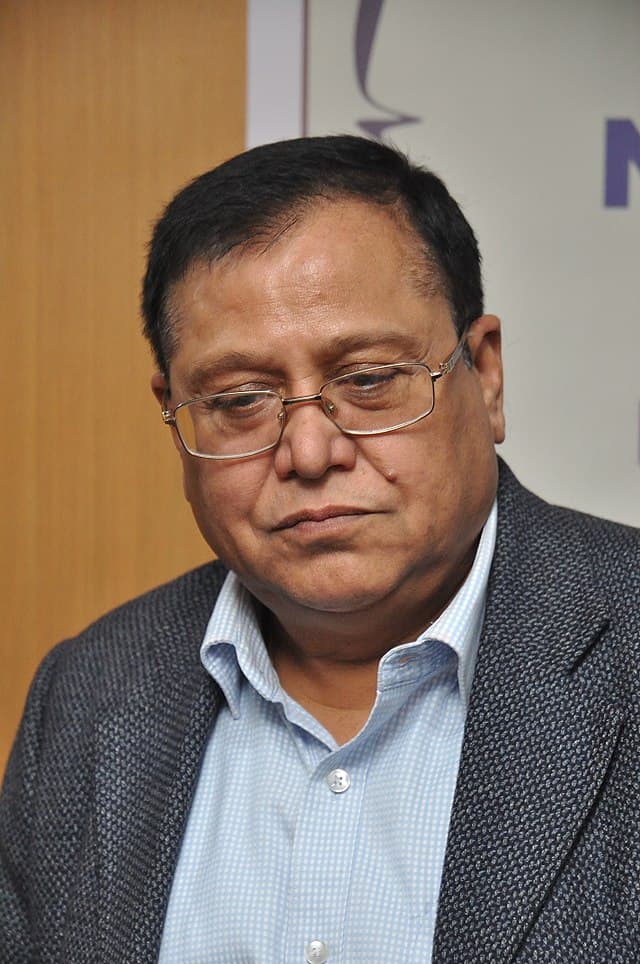
Vijay Kumar Saraswat is an Indian scientist who formerly served as the Director General of the Defence Research and Development Organisation (DRDO) and the Chief Scientific Advisor to the Indian Minister of Defence. He retired on 31 May 2013 and presently member of NITI Aayog i.e. Planning Commission of India and Chancellor of Jawaharlal Nehru University.Saraswat is the key scientist in the development of the Prithvi missile and its induction in the Indian armed forces. He is a recipient of the Padma Shri and Padma Bhushan from the Government of India.
Read More About V. K. Saraswat / Source
V. K. Aatre
Vasudev Kalkunte Aatre (born 1939) is an Indian scientist and former head of the Defence Research and Development Organisation (DRDO), India’s premier Defence research and development organization. In that capacity, he also served as the Scientific Advisor to the Defence Minister (Raksha Mantri). He is a recipient of the Padma Vibhushan award.
Read More About V. K. Aatre / Source
V. S. Huzurbazar
Vasant Shankar Huzurbazar was an Indian statistician from Kolhapur. Huzurbazar was the founder head of the department of statistics, University of Pune from 1953 to 1976. From 1979 to 1991, he served as professor at University of Denver, Colorado until his death. He served as visiting professor for two years to the Iowa State University in 1962.
Read More About V. S. Huzurbazar / Source
Varun Sahni
Varun Bhisham Sahni (born March 29, 1956) is an Indian theoretical physicist, astrophysicist and a Distinguished Professor at the Inter-University Centre for Astronomy and Astrophysics. Known for his research on cosmology, Sahni is an elected fellow of all the three major Indian science academies viz. Indian Academy of Sciences, Indian National Science Academy and National Academy of Sciences, India. The Council of Scientific and Industrial Research, the apex agency of the Government of India for scientific research, awarded him the Shanti Swarup Bhatnagar Prize for Science and Technology, one of the highest Indian science awards, for his contributions to physical sciences in 2000.Sahni is reported to have studied the universe, more specifically its large-scale structure, the early inflationary phase and cosmological constant. His achievements include the establishment of a cosmic no-hair theorem related to inflation, analysis of the universe structure using self-developed statistical methods, discovery of novel models of dark energy and dark matter, design of unified models of Inflation and dark energy and the elucidation of Big Bang theory using Braneworld physics. His studies have been documented by way of a number of articles and the online article repository of the Indian Academy of Sciences has listed 68 of them.
Read More About Varun Sahni / Source
Vashishtha Narayan Singh
Vashishtha Narayan Singh (2 April 1946 – 14 November 2019) was an Indian academic. A child prodigy, he completed his PhD in 1969. He taught mathematics at various institutes in the 1960s and 1970s. Singh was diagnosed with schizophrenia in the early 1970s and was admitted to a psychiatric hospital. He went missing during a train journey and was found years later. He was again admitted to the hospital and later returned to academia in 2014. He was awarded the Padma Shri, the fourth highest civilian award of India, posthumously in 2020.
Read More About Vashishtha Narayan Singh / Source
Vasudeva Krishnamurthy
Vasudeva Krishnamurthy, nicknamed Prof. V.K., was an Indian algologist. He established Krishnamurthy Institute of Algology at Chennai to promote the study of algology. Krishnamurthy, son of Sanskrit professor R. Vasudeva Sharma, was born on August 14, 1921 at Valavanur, Viluppuram district. He died in Tamil Nadu on May 9 2014.
Read More About Vasudeva Krishnamurthy / Source
Veena Parnaik
Veena Krishnaji Parnaik (born 1953) is an Indian cell biologist and the current Chief Scientist at the Centre for Cellular and Molecular Biology. She obtained her Masters in Science in medicinal biochemistry from the University of Mumbai and received her PhD from Ohio State University before moving back to India to work at the CCMB. Her research is focused on understanding the functional role of the nuclear lamina and how defects in it may lead to disorders such as progeria and muscular dystrophy.
Read More About Veena Parnaik / Source
Vidyavati
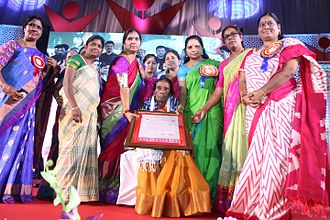
Vidyavati, former Vice-Chancellor, Kakatiya University, Warangal, Telangana, India was born on 15 September 1939, in Goud community. She is President of Phycological Society of India. She was honored by Telangana State Government as Eminent Women on 8 March 2017, on the occasion of “International Women’s Day” celebrations.
Read More About Vidyavati / Source
Vijay P. Bhatkar
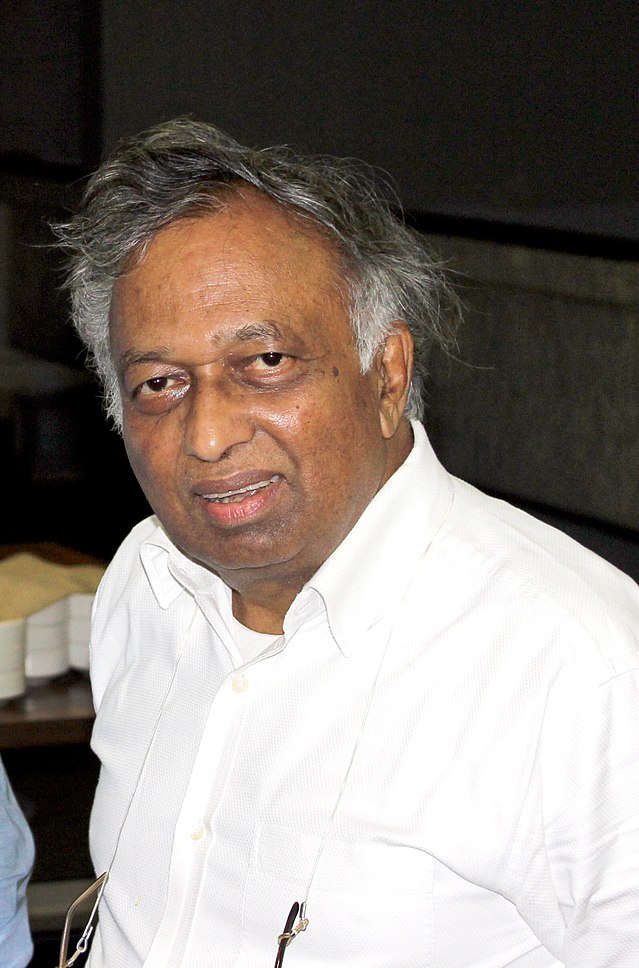
Vijay Pandurang Bhatkar is an Indian computer scientist, IT leader and educationalist. He is best known as the architect of India’s national initiative in supercomputing where he led the development of Param supercomputers. He is a Padma Bhushan, Padma Shri and Maharashtra Bhushan awardee. Indian computer magazine Dataquest placed him among the pioneers of India’s IT industry. He was the founder executive director of C-DAC and is currently working on developing Exascale supercomputing mission for India.Bhatkar has been chancellor of Nalanda University, India since January 2017. Prior to that, he served as the Chairman of Board of Governors of IIT Delhi from 2012 to 2017. Currently he is serving as the Chairman of Vijnana Bharati, a non profit organization of Indian scientists.
Read More About Vijay P. Bhatkar / Source
Vinod Johri
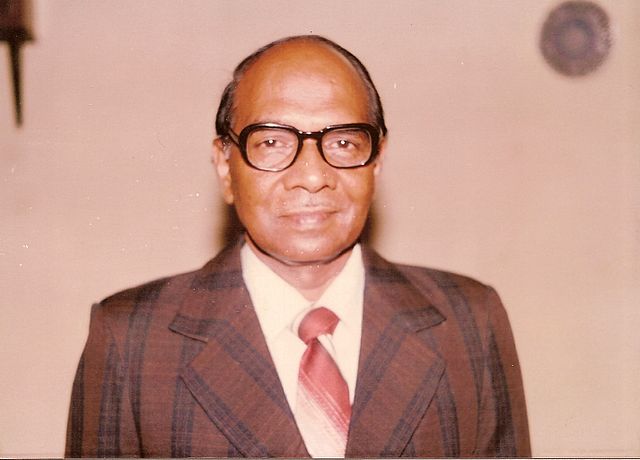
Vinod Johri (10 June 1935 – 10 May 2014) was an Indian astrophysicist. He was an eminent cosmologist, a retired professor of astrophysics at Indian Institute of Technology, Madras and an emeritus professor at Lucknow University since 1995. Johri had over 75 research publications and articles published in pioneering journals. His major contributions in cosmological research included ‘power law inflation, genesis of quintessence fields of dark energy and phantom cosmologies’. He was the co-author of the first model of power law inflation in Brans–Dicke theory along with C. Mathiazhagan. He was honored by Uttar Pradesh Government by Research Award of the Council of Science & Technology (CSIR).Johri spent over 45 years researching in cosmology, acting as a research guide and principal investigator of various research projects of Council of Scientific and Industrial Research, Department of Science & Technology and University Grants Commission of India. Johri was a Commonwealth Fellow, a senior visitor at Cambridge University (UK) and a Fellow of Royal Astronomical Society of London. He worked as consultant for UNESCO at United Nations Development Program in Iran and as a DAAD Fellow at University of Mainz (Germany), as a visiting scientist at Hansen Lab (Gravity Probe B Group) Stanford University (USA) and as an International Scholar at Fine Theoretical Physics Institute at University of Minnesota at Minneapolis (USA). He died in Dallas, USA at the age of 78 due to complications arising from Kidney failure.
Read More About Vinod Johri / Source
Vasant Gowarikar
Vasant Ranchhod Gowarikar (25 March 1933 – 2 January 2015) was an Indian scientist. He was a director in Indian Space Research Organization and also the scientific advisor to the Prime Minister of India in 1991–1993. Gowarikar made valuable contributions to the fields of space research, weather and population. He was well known for his monsoon forecast model as he was the first scientist to develop an indigenous weather forecasting model that predicted the monsoon correctly.
Read More About Vasant Gowarikar / Source
Vishnu Vasudev Narlikar
Vishnu Vasudev Narlikar FRAS (26 September 1908 1 April 1991) was an Indian physicist specializing in general relativity. The Centre for Theoretical Physics, Jamia Millia Islamia has instituted the annual “V. V. Narikar Memorial Lecture”, in the memory of him.
Read More About Vishnu Vasudev Narlikar / Source
Vijay Kumar Kapahi
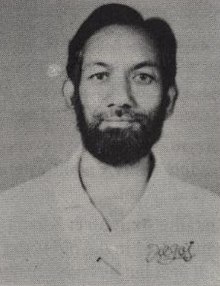
Vijay Kumar Kapahi (21 January 1944 – 16 March 1999) was an Indian astrophysicist and the director of the National Centre for Radio Astrophysics, an autonomous division of Tata Institute of Fundamental Research. Known for his research on radio galaxies, quasars and observational cosmology, Kapahi was an elected fellow of all the three major Indian science academies – Indian Academy of Sciences, Indian National Science Academy and National Academy of Sciences, India – as well as of the Maharashtra Academy of Sciences. The Council of Scientific and Industrial Research, the apex agency of the Government of India for scientific research, awarded him the Shanti Swarup Bhatnagar Prize for Science and Technology for his contributions to physical sciences in 1987.
Read More About Vijay Kumar Kapahi / Source
Vinod K. Singh
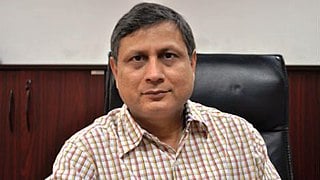
Vinod K. Singh was born on 9 September 1959, in Kshatriya family in Anantpur, a village in district Azamgarh in eastern Uttar Pradesh, India. He is a Rahul and Namita Gautam Chair Professor of Chemistry at IIT Kanpur. Singh’s major research contribution is in an area of Synthetic Organic Chemistry, more specifically, asymmetric synthesis. He has developed several new chiral ligands/catalysts for enantioselective reactions. One of the chiral catalysts developed in his laboratory, called “Singh’s Catalyst”, is an efficient chiral organocatalyst for enantioselective aldol reaction in aqueous medium. He has accomplished total synthesis of several bioactive natural products. His work is documented in more than 160 research publications. Furthermore, Professor Singh has guided 35 PhD students and currently has more than 12 students and postdoctoral fellows working with him.
Read More About Vinod K. Singh / Source
Yelavarthy Nayudamma
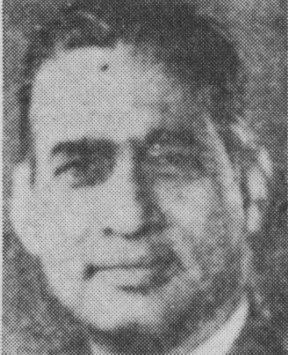
Yelavarthy Nayudamma (10 September 1922 – 23 June 1985) was a chemical engineer and a scientist killed on Air India Flight 182 (Emperor Kanishka bombing). Yelevarthy was born in an agricultural family at Yelavarru village near Tenali in Guntur district of present-day Andhra Pradesh state in India. He had his primary education in the village and studied Intermediate in AC College here. Later, he did B.SC (Chemical Technology) at the famous Banaras Hindu University and a course in leather technology at Madras Institute of Leather Technology.
Read More About Yelavarthy Nayudamma / Source





